Engendering the Past: Practices and Potentials of an Explicitly Feminist Archaeology
Engendering the Past: Practices and Potentials of an Explicitly Feminist Archaeology
This website is a joint initiative between Ancient Studies and Archaeology majors at Barnard College and Columbia University. Originally spearheaded by Isabel Murr (‘22) and Elliot Zayas (‘22), it has been augmented by Huntly Cooper ('22) and Caroline McSherry ('22).
Further thanks are due for their contributions to Olganydia Plata Aguilera, Shannon Binns, Nicole Bonaccorsi, Rachel Broder, Lisa Dinh, Allya Elgayar, Cayla Gancy, Celina Hayes, Syd Hertz, Grace Kraft, Carolina Laport, Madeline Liberman, Miranda MacGillivray, Kit Malloy, Candelaria Barrera Mejía, Marianna Najman-Franks, Sreya Nandanampati, Liliana Olivares, Greta Parr, Grace Riginos, Gigi Russo, Ruya Tazebay, Oliva Tedesco, Octavio Lahiri Vorvoulias, and Jamie Xiao.
In her article “Much More than Gender,” Ericka Englestad argues that feminism in archaeology foregrounds women as present and active agents in the past. This does not require a singular emphasis on women. Rather, it is an effort to engender the past that considers gender as a process and a relationship. It treats masculinity and femininity as dialogical concepts and as culturally constructed, and it challenges arguments based on biological determinism. A feminist approach to the study of archaeological remains actively encourages the development of new understandings of social dynamics and difference.
Interpreting archaeological remains with a feminist mindset does not entail idealizing the past. The reality of a specific culture or community may, in fact, be that there was an extreme inequality between the genders. If that was the case, the feminist approach is to give more attention and acknowledgement to the ways in which differential power was constructed as well as to the influence of women in the spheres in which they did exert control. Roberta Gilchrist in her book Gender and Archaeology argues that archaeologists should focus on the differences and similarities between women and men, as well as on the hierarchy and differences between members of a single sex according to class, ethnicity, or other vectors of identity. Gilchrist argues that “the priority of any ‘feminist archaeology’ must be to criticize interpretations which characterize historically produced social roles as timeless and biologically determined.” For example, we must dispel the myth that the powerful/public sphere was inevitably sexed male, while the domestic/private sphere should be reflexively coded female.
Feminist archaeology acknowledges and celebrates complexity. Moreover, it seeks to expose the biases toward heteronormative interpretations that are all too frequent in the field. For example, in her book The Bioarchaeology of Socio-Sexual Lives, Pamela Geller revisits the so-called “Lovers of Valdaro” – a neolithic burial of two individuals laid facing one another, found by Italian archaeologists in 2007. The skeletons, ubiquitously interpreted as a heterosexual couple, have been impressed upon the public as symbols of everlasting romance. As Geller points out, however, the preservation and display of the burials in an unexcavated state has meant that no taphonomic, genetic, or isotopic analysis has ever been undertaken that might risk complicating the narrative and thus disrupting the commodification of romance between ancient star-crossed lovers.
Household Archaeology
Marie Louis Stig Sørensen describes the household as “a place for learning who one is, including confirmation of one’s gender identity.” When discussing household activities, it is easy to focus predominantly on domestic activities. What many forget is that for the most part, a household is enmeshed in a larger economy. Economic production is always present, whether in the form of feeding workers, making household items, or manufacturing goods for exchange. Understanding the household this way means that keepers of the household should also be viewed as agents of productivity. The presence of both men and women inhabiting the same space, too, makes studying the household one of the most central ways in which we can understand the construction of social and gender relationships. As is widely recognized, the structure of the household both reproduces and helps create social practices and ontological truths.
What can architecture tell us about gender?
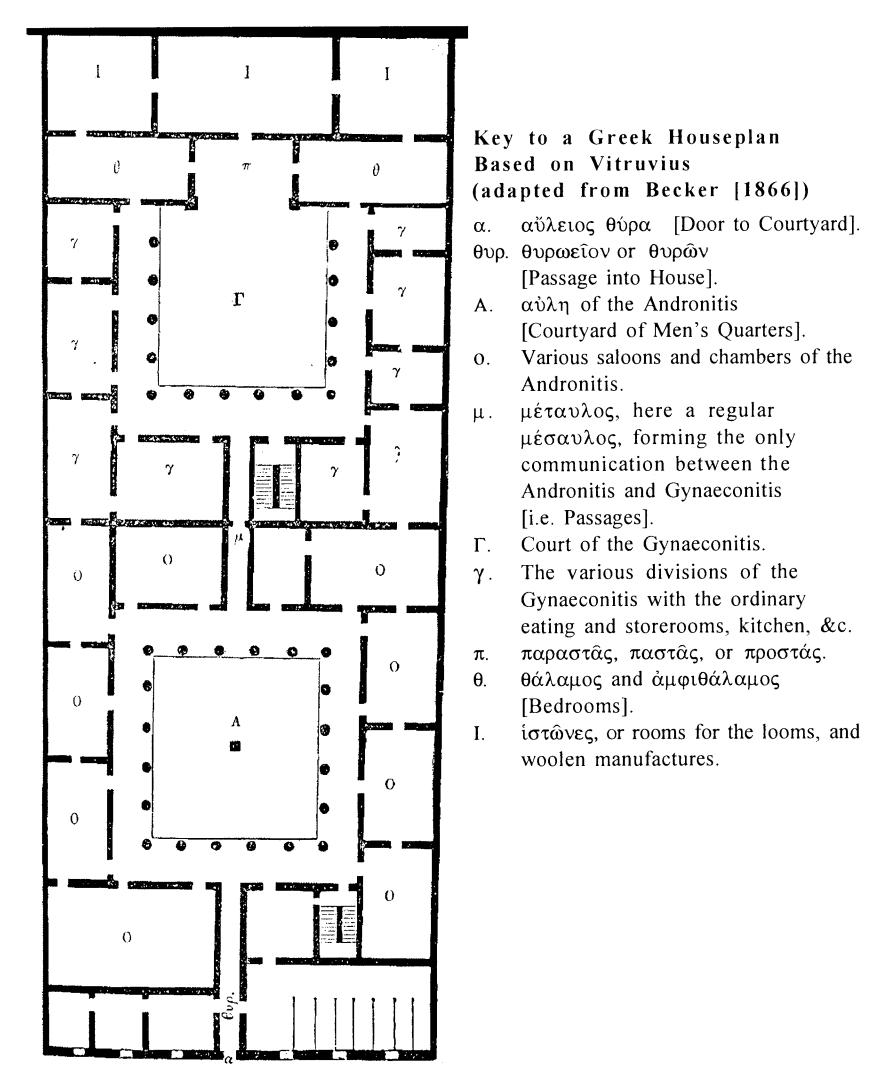
Architectural choices and changes can occasionally be indicative of a shift in gender relationships. The separation and partitioning of domestic space is often reflective of social stratification, economic specialization, as well as gender division. The shift from one room houses in the relatively egalitarian society of Early Iron Age Greece to the numerous rooms in classical period houses demonstrates this aptly. Classical houses often had 7-10 rooms on the ground floor alone. This massive increase in rooms facilitated the separation of different categories of people within the household. Contemporary literary texts provide evidence of sex-segregation within dwellings, and Lisa Nevett has argued that these segmented plans were, in fact, utilized to control women’s movements and social interactions. Hesiod and Semonides associate women with the inner, more secluded part of the house, while the orator Demosthenes stated that women were able to use the whole house but had to retreat to secluded rooms when male visitors were present.
Case Study #1: “Architecture and behavior: Building gender into Greek houses” by Carla Antonaccio (2000) and “Women and housing in Classical Greece: The archaeological evidence” by Susan Walker (1983).
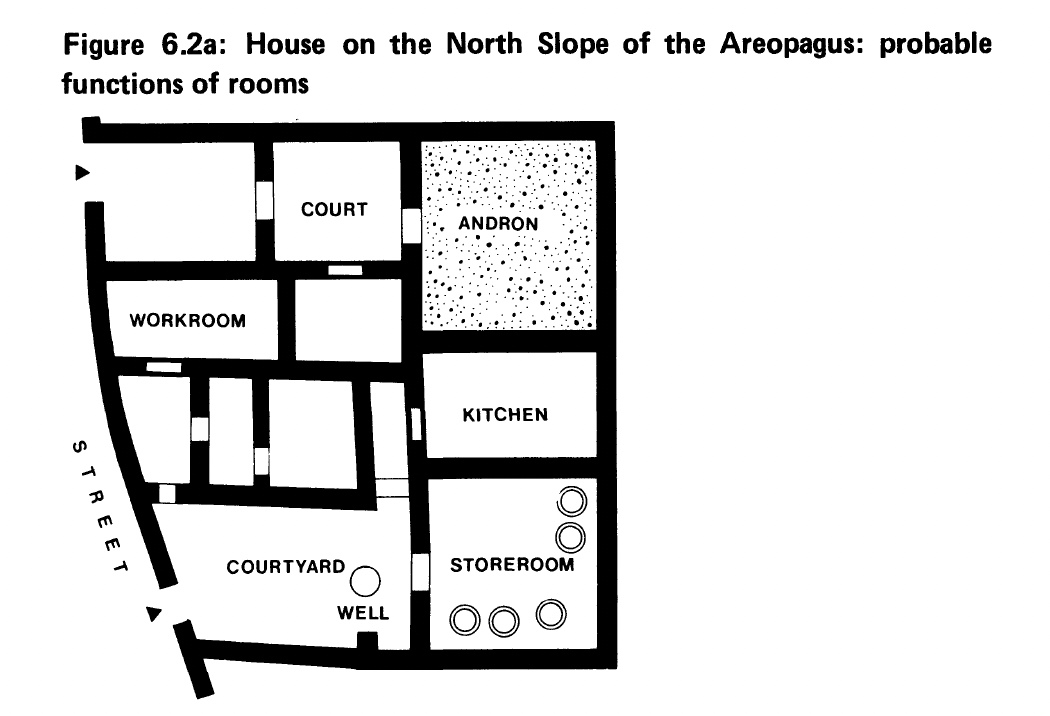
Both Susan Walker (1983) and Carla Antonaccio (2000) place archaeological and textual evidence in dialogue to better understand gendered space in Classical Greek homes. They interrogate particularly the lexical vocabulary that describes discrete gendered spaces in the Greek home: γυναικωνίτης (gynaikonitis; separate area for women), ἀνδρωνιτις (andronitis; separate area for men), and ἀνδρων (andron; a room utilized by males for dining and drinking parties). Were these gendered divisions ingrained in the architectural structure or was lived reality in Greek houses more gender fluid? Antonaccio draws upon the writings of Euphiletos and Ischomachos, who describe their homes with such vocabulary and draw attention to the distinctions between upstairs and downstairs areas, as well as the utility of doors to divide gendered space. In excavated houses, however, such spatial specialization is rarely readily apparent. Perhaps, she argues, it was rendered unnecessary due to the portability of utensils and serving ware. Regrettably, evidence of upper floors is nearly always entirely lost. Nevertheless, remnants of staircases occasionally prove their existence. Hearths and large pithoi might indicate cooking and storage spaces, while decorated floors with markings for couch arrangements sometimes indicated androns. Overall, however, Antonaccio argues that domestic spaces were characterized by flexibility. She suggests that the locations of staircases, halls, and doors, make it clear that women had access to the ground-floor in kitchens, courtyards, and bedrooms. So, too, there were balconies and outer doors (auleia thura) that a visitor would have to seek permission to access – suggesting that women were not always sequestered in gendered spaces within the home. In fact, Antonaccio seconds Lisa Nevett’s proposition that these gendered terms refer more to social spheres than to delineated spaces and that the entire home could be considered the γυναικωνίτης with the exception of the formal ἀνδρων.
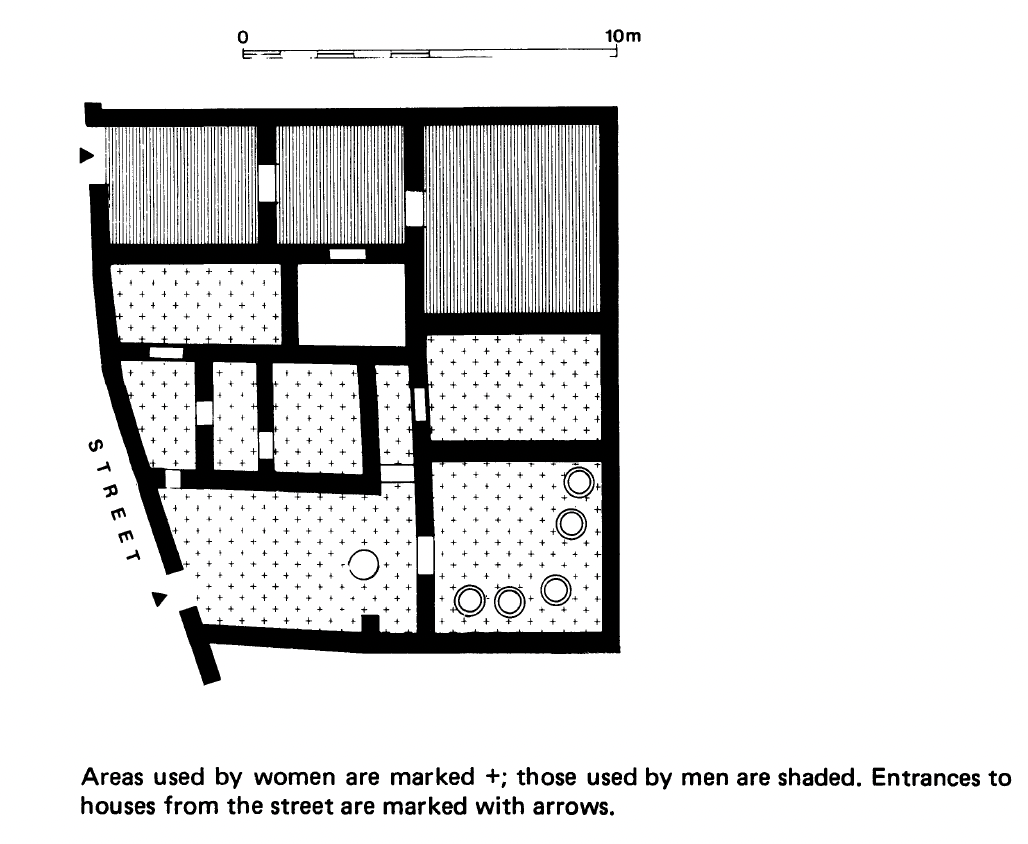
For her part, Walker speculates that an architectural distinction between male and female spaces might be relevant only to the spacious households of the very rich. In her study, for example, Walker points to a country house in Attica that differs from the modest homes of urban Athens. The ἀνδρων in the house in Attica was situated as far as possible from the hearth room and stairway – both likely to have been frequented by women – and far from the entrance. Thus, it seems that the extravagant country home retained greater separation of domestic labors than the compact homes of the city. Even in rich houses, however, the lack of barred doors and obvious spatial segregation, supports Antonaccio’s claim that “space was … negotiated, rather than simply shaped by architecture” (Antonaccio 2000, 530). The work of these two scholars does much to combat the widely held belief that in ancient Greece public-facing male spheres existed almost always in opposition to sequestered female spaces.
What can the spatial distribution of certain artifacts tell us about gender?
Archaeologists often suggest that the spatial distribution of artifacts related to the storage, preparation, and allotment of food may betray zones of traditionally female authority. Josef Wegner’s study of the spatial distribution of seals bearing female names and titles (such as "lady of the house" and "female chamber superintendent") at the Late Middle Kingdom site of Wah-Sut in Abydos, Egypt sheds light on the administrative activity and sealing practices of women. These clay bullae, used to seal both wooden boxes and linen bags, tended to cluster in the rear entrances to elite houses, where it seems that containers were routinely sealed or opened on their way in or out of the house. Wegner calls the high density of these sealings a “female signature” that helps us to identify the presence and activity of important women. Indeed, the seals of a “king’s daughter” named Renisenb are particularly well attested in the northwest section of the mayoral mansion. The preponderance of Renisenb’s sealings in one specific area of the house – along with other evocative objects, such as a birth brick – strongly suggests that elite women held a proprietary claim to a significant proportion of domestic space. The seals also suggest that the pharaoh, ruling at a time of dwindling royal power, may have sought support through marriage alliances with powerful provincial officials.
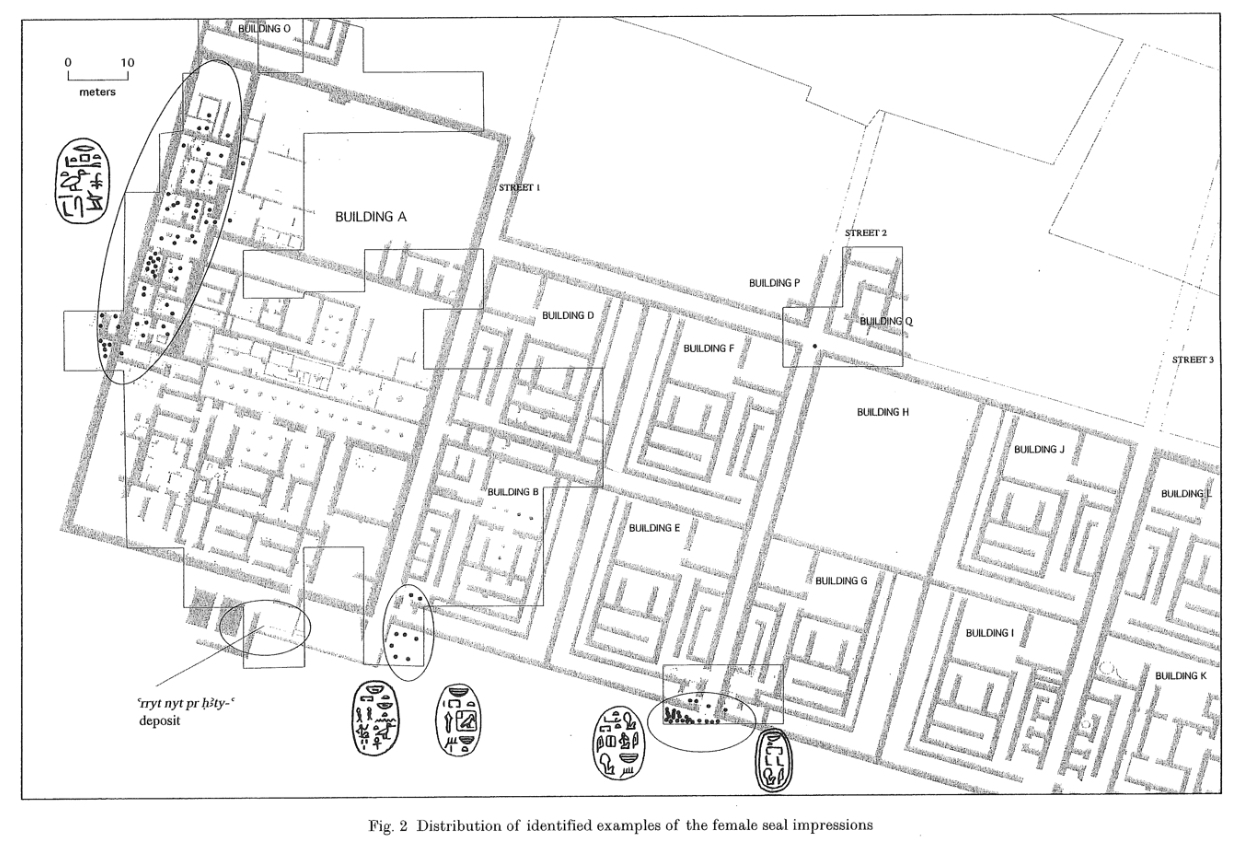
What can household production tell us about gender?
Archaeologists often assume that households are divided into gendered categories, associating women with private, domestic activities, and men with more public-facing ones. However, the activities and products of a household do not adhere to these categorizations. Analysis of the production of household objects, such as ceramics, can trouble these gender roles by revealing that ceramics made by women did not stay within the private, domestic sphere. On the other hand, “male” and public-facing elements of the household, such as its architecture, have been shown by historical evidence to be influenced by women. The male-female household binary is also invalidated by evidence from cultures such as the Timucua Indigenous people of Florida, in which all genders participated in activities like cooking and fishing that are assumed to be female or male labor, respectively.
Case Study #1: “Gender, Race, and Labor in the Archaeology of the Spanish Colonial Americas” by Barbara Voss
Barbara Voss’s text questions the binaries assumed in the framework known as the “St. Augustine Pattern,” which highlighted intermarriage between Indigenous and African women and Spanish men as the driver of cultural change in Spanish colonial America. This framework proposed that non-European cultural activities dominated female, domestic spheres such as the kitchen, while colonial European culture was highly visible in public, male activities like house construction. Voss troubles these problematic gender and racial binaries by looking at a variety of sources in St. Augustine, including ceramics, architecture, and historical records, through the lens of labor. She reexamines the use of utilitarian ceramics, which were traditionally thought to be produced by non-European women in the private, domestic sphere. In fact, locally-produced utilitarian ceramics were found in all St. Augustine households regardless of the presence of Indigenous or African women, contesting the idea that this was solely domestic and non-European female labor. Additionally, Voss employs historical records to argue that female land-owners were common in St. Augustine and could easily have been involved in architectural projects on their property. Voss also considers through ethnographic and historical evidence that the gender frameworks of Indigenous American and African people were fluid and often had more than two genders. With a variety of approaches coalescing around household labor, Voss contests the St. Augustine Pattern’s rigid gender roles.
Foodways
The procurement, production, distribution, and consumption of food is a central aspect of life in all cultures and makes for a particularly important lens through which to view attitudes towards gender. The study of foodways can illuminate gendered differences in who hunts or tends animals and who gathers resources and/or raises crops. Each of these activities may be valued differently according to their economic and social importance and may be more or less segregated by sex. Some activities involve relative isolation, while others are highly communal—and such differences in the modes of production help structure a society. What food is served, how it is served, and who it is served to (in what quantities) are further factors to consider, and these questions are particularly fascinating to explore in the context of cross-cultural marriages and of feasts. The production and distribution of food and drink is particularly marked in communal rituals—like the linkage of families through marriage—and especially in rites of passage associated with changes of status from childhood to adulthood. Additionally, in some cases it is possible to demonstrate through archaeological analysis that males and females consumed different types of food, different amounts of food, or that gendered foodways changed over time.
What can a change in vessel type tell us about gender?
Changes in vessel form have the potential to reveal stark changes in foodways that influence the lives of the individuals charged with preparing food. Some dishes, such as stews or soups, for example, could be left unattended over the fire for substantial periods, which freed up time for other activities – whether practical or social. So too, changing ratios of homemade to purchased pottery are suggestive of a shift in work patterns and/or an integration into a wider changing economy. Adjustments in the volume of cooking and serving vessels often indicate substantial changes in the composition of a household and accompanying shifts in social power and internal organization. Vessel types tend to shift in situations of inter-ethnic marriages, as new cooking methods are introduced into a family. At such times, as well, there may be alterations in prestige serving ware. Changes in a family’s prestige serving vessels may be indicative of adjustments to the manner in which the household signaled its political or ethnic affiliation or demonstrate a change in its wealth or status. Finally, the adoption of new drinking vessels can be particularly important, as communal rituals of intoxication often served to create bonds and cement alliances.
Case Study #1: “Foodways in Early Mycenaean Greece: Innovative Cooking Sets and Social Hierarchy at Mitrou and Other Settlements on the Greek Mainland” by Bartłomiej Lis.
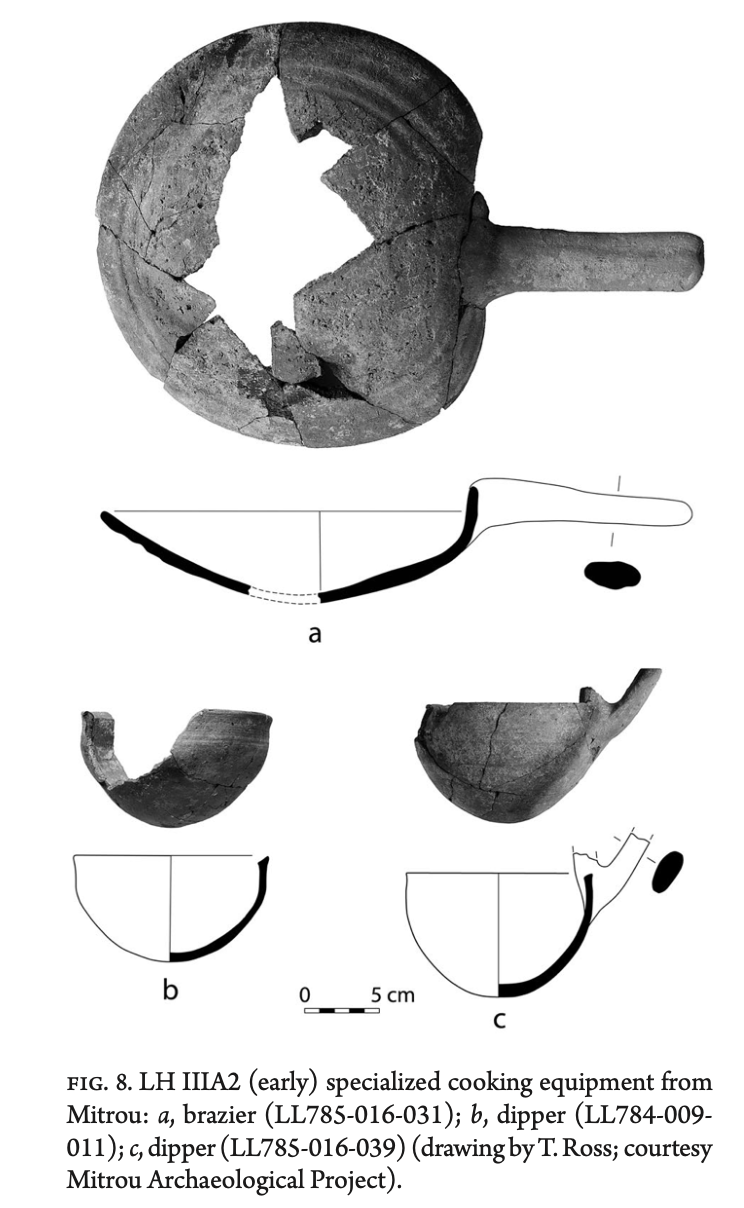
In the context of highly competitive societies, practices of food preparation and consumption aid in the formation and consolidation of social orders. In his excavations at Mitrou, a small Mycenaean polity off the Boeotian Coast in Greece, Bartłomiej Lis investigated the dynamic political ramifications of elaborated foodways within the broader context of the Early Mycenaean political system. Lis asserts that “within a single shared meal, people may be served different foods depending on their perceived social standing and importance to the hosts.” He, thus, suggests that the innovative (and often imported) serving ware that appeared at elite sites in conjunction with monumental architecture during the Mycenaean period may have been related to competitive feasting and conspicuous consumption. For example, at East Mitrou, small ceramic “dippers” – unique to the region – suggest the existence of small sauces that were heated on a person-by-person basis, a relatively individualized, exotic, and exclusive consumption pattern. In the Early Mycenean period, when hierarchies were first being developed and before regional palaces dominated the development of a “culinary koine,” Lis suggests that power was broadcast through more modest feasts by virtue of constant innovation and advertisement, especially through the smell, sound, and visual performance of open-air cooking. Judging from the outsized ratio of drinking vessels found at the site, Lis argues that the cooked food was not available to everyone who was present. As he points out, however, the tripod cooking installations and dippers would have ensured that “everybody could smell the food although not everybody might have had the privilege to taste it.” Who would have been excluded from the consumption of cooked foodstuffs and choice meats? In the historical context of the warrior-elite Mycenaean system, the answer may have been women and males of comparatively low status. If women were involved in spearheading the innovative culinary experiments that helped enhance political power, however, their role in negotiating status hierarchies would have been crucial.
What can faunal remains tell us about gender?
Analyses of animal bones provide information about what types of animals lived amidst humans and/or were exploited by them for sustenance, secondary products (like wool or feathers), or labor. Butchering practices often were culturally specific, and the distribution of cuts of meat are important for determining who had access to privileged or symbolic sources of food. Like other aspects of foodways, differences in who hunted or tended animals and who processed and ate various types of meat were often gendered. So too, cultural associations with specific animals could be strongly gendered, as is sometimes seen in ritual and mortuary contexts (see case study #1).
Case Study #1: "Sacrifices in LM IIIB: Early Kydonia Palatial Centre" by Maria Andreadaki-Vlazaki.
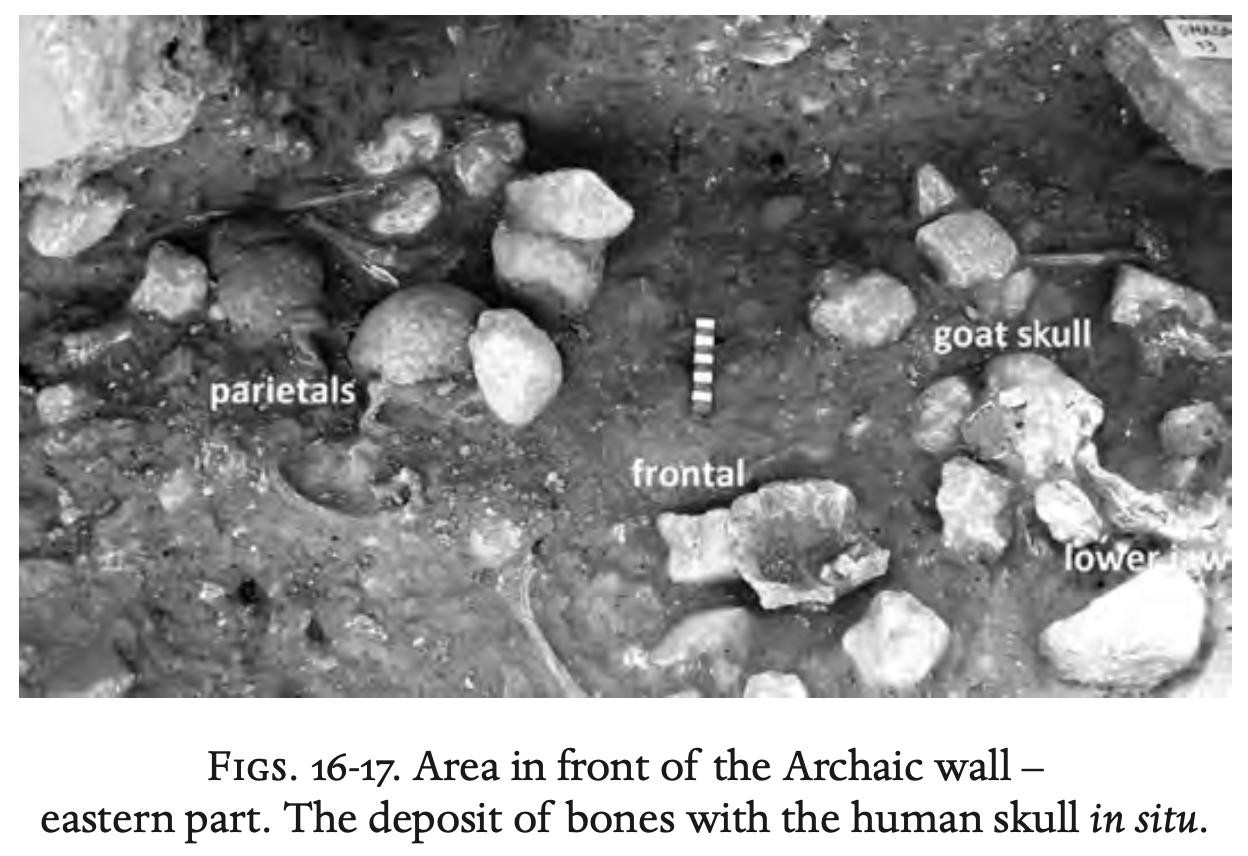
In the ruins of the Mycenaean-era palace of Kydonia on Crete, Maria Andreadaki-Vlazaki and her archaeological team discovered an elaborate human sacrifice that took place in the aftermath of an earthquake. In close proximity to an altar lay the unburnt bones of a teenage female, 43 ovicaprids and wild goat, four pigs, and two cattle. All of the bones – human and animal – were mingled together and had been subjected to blows, lacerations, decapitation, and possibly also skinning. Given this similarity in treatment, it is perhaps not surprising that the animals chosen mirrored the human victim, being composed almost exclusively of developmentally mature females that were physically at their prime. After the sacrifice, the remains were quickly gathered up and interred together underneath a floor of the palatial courtyard. The ritual was evidently all for naught, however, as shortly after the bones had been buried the building was hit by another earthquake, and the palace was buried in rubble.
Case study #2: “The Politics of Provisioning: Food and Gender at Fort San Juan de Joara, 1566-1568” by Robin Beck et al.
This article focuses on the faunal remains from Fort San Juan de Joara, a site in modern-day North Carolina. The authors argue that the change in the diet of Spanish soldiers from the early to the late phases of the site is evidence of Indigenous men asserting their agency and promoting cultural change. The Fort, which was occupied between 1566 and 1568, heavily relied on the local Catawba, or Iswä, people for their food supply. In the early phases of the site, Indigenous men provided the Spanish men with a deer-to-bear meat ratio of 1:1. According to Beck et al., this high ratio is evidence of friendly relations in the early phases of the Fort, as bear was considered a hard meat to hunt and was typically saved for honored guests. In the later phases of the site, the bear-to-deer meat ratio deteriorated to 1:9. Given that hunting practices did not change over such a short period of time, the deteriorated ratio is explained by Indigenous men choosing to give the Spaniards less bear meat.
What can the social practices surrounding consumption tell us about gender?
When it comes to food consumption, there is generally a distinct relationship between those serving and those being served, whether familial or aligned according to dialectical logics of class, age, and/or gender. Additionally, there are different venues for consumption, such as houses, on the one hand, and great halls, on the other. Yet even elaborate feasts may operate according to familiar rules. Marie Louise Stig Sørensen, for example, notes that in colonial Sicily during the 8th-6th centuries BCE, great feasts were held in the acropolis complexes, which presumably helped honor the gods as well as build community between politically and religiously important individuals. Archaeological remains demonstrated not only that porridges and soups would have been served but that the pots and cooking ware were virtually identical to those found in the domestic sphere. Thus, whether or not women in the community attended such feasts, they may well have been mobilized to prepare the food and in that way have been deemed essential participants.
Case study #1: “Food Technologies/Technologies of the Body: The Social Context of Wine and Oil Production and Consumption in Bronze Age Crete” by Yannis Hamilakis
In this paper, Yannis Hamilakis argues that the archaeological study of food has almost solely focused on food production, and scholars should take a more pronounced interest in food consumption as a “meaningful embodied experience which is related to issues such as the construction of gender roles, the definition of the social unit, and the transmission of cultural norms” (Hamilakis 40). What is considered “food” is always culturally defined as such, and an edible item becomes food through certain rituals, which can be particularly revealing about a society’s social system. One example Hamilakis provides is the way that numerous ancient Egyptian texts perceive wine as a higher-class drink than beer. In centering consumption in the conversation about wine and oil distribution, Hamilakis examines the hypothetical consumer and suggests that scholars have taken it for granted that cultivation of wine and oil is natural to the Mediterranean. He instead asserts the idea that these products were cultivated, often at great risk, to meet specific demands. Wine’s psychoactive effects, and oil’s use as a base in perfumes and ointments, can tell us that these items were desired by certain people for certain reasons beyond subsistence. As palace culture on Crete developed, for instance, elites competed more intensely for power and resources, and feasting culture and the complex social relations associated with it, drove the demand for wine production. The archaeological record shows a huge increase in pottery drinking vessels in neopalatial Crete. Shifting the focus on discussions of food archaeology to emphasize embodied experiences and social context opens up discussions about how consumption structured the social world, including issues of gender. The Camp-Stool Fresco at Knossos portrays a scene of ceremonial banqueting with ambiguously sexed guests. While Minoan religious worship seems to be centered around feminine goddess figures, various reconstructions of the fresco differ on whether or not women would actually be present at these feasts. While the fresco itself remains unclear, the question of women’s participation in feasting culture and women’s demand for luxury goods (such as wine and oil) is pertinent for our understanding of the development of larger scale production and trade in the Late Bronze Age.
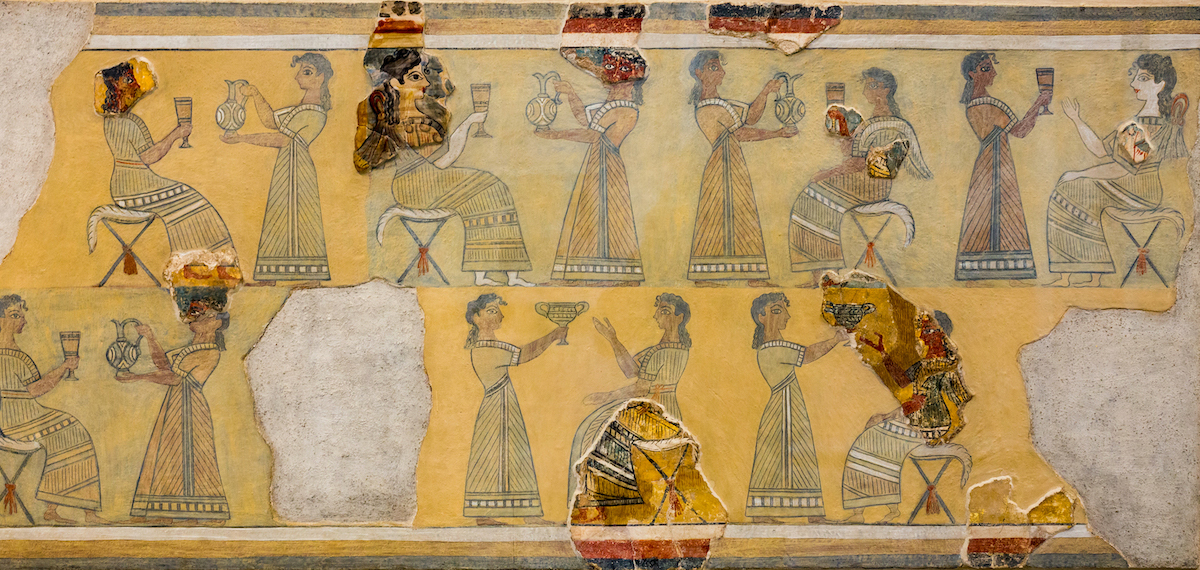
What can the style of grinding implements tell us about gender?
Traditionally grinding stones (sometimes termed metates) have been categorized as simple tools and correlated to the female domestic sphere, based on ethnoarchaeological, artistic, and/or textual evidence. Occasionally, however, such as in ancient Costa Rica, they were elaborated into fantastic ritual sculptures (as seen below). When this occurred, archaeologists have tended to recode them as referring exclusively to “male” ritual activities such as warfare. This assumption is highly questionable and likely biased, as the case study by Theresa Preston-Werner illustrates. Even when grinding implements are purely utilitarian, though, they reveal a great deal regarding patterns of work and sociality.
Case Study #1: “Breaking Down Binaries: Gender, Art, and Tools in Ancient Costa Rica” by Theresa Preston‐Werner.
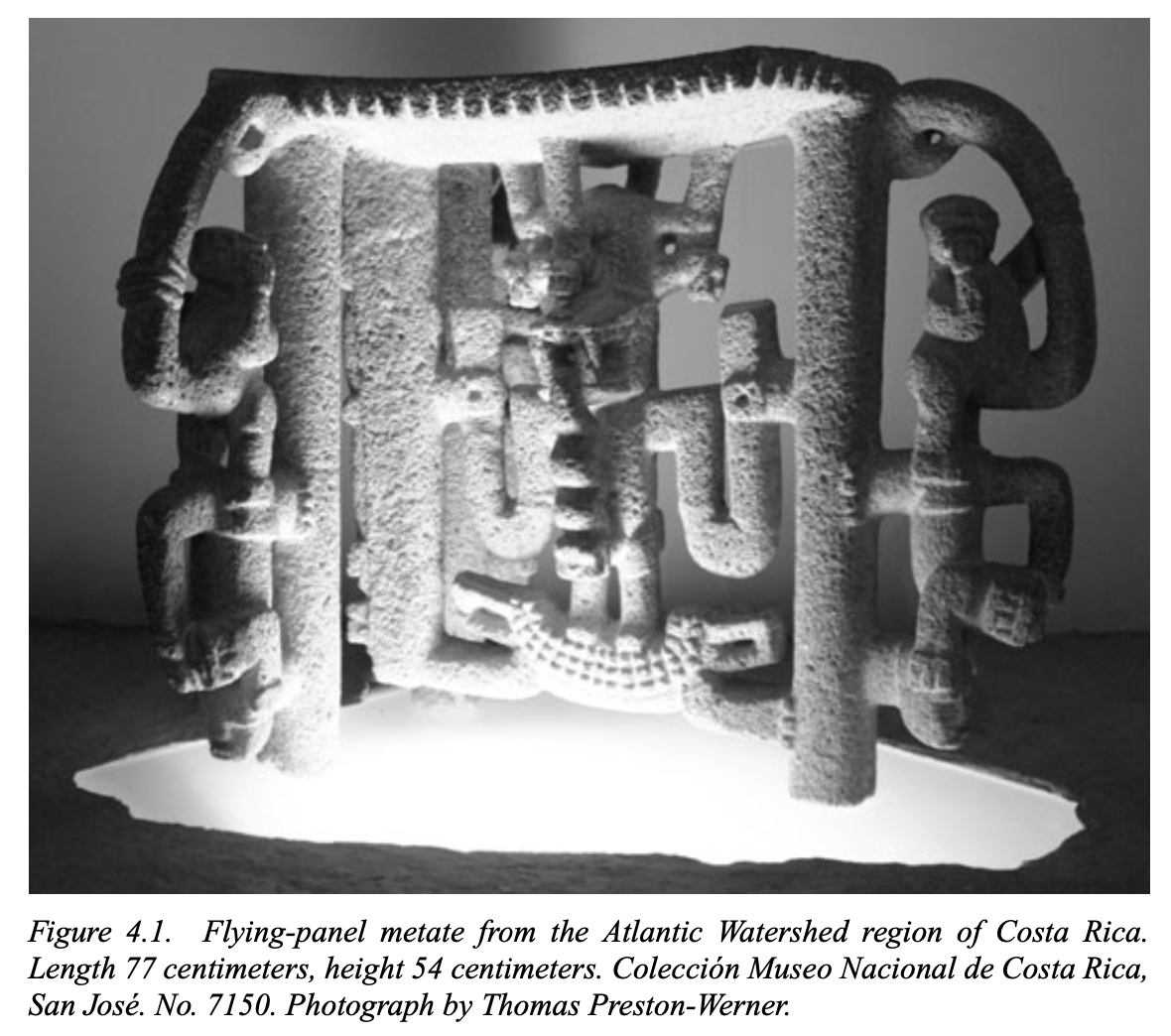
Theresa Preston-Werner’s study examines three parallel binaries used by scholars to categorize ancient elaborate metates and also ceramic figurines: tool/art, domestic/ritual, and female/male. The majority of ceramic figurines she focuses on come from the Guanacaste-Nicoya Zone and are not easy to classify as either male or female due to the style of their hats, the ambiguity of their genitalia, and their positions. The male/female binary, she concludes, must not have been essential to their social meaning. Likewise, she found that the elaborated metates, which tended to be deposited at burial sites, patterned not according to gender but to class. Preston-Werner suggests that perhaps in ancient Costa Rican cultures, “gender was subservient to class distinctions,” and objects could have been deemed utilitarian while still being used for ritual and functioning as material symbols of social hierarchies. Indeed, the gender fluidity expressed in the ceramic figurines prompts her to suggest that elaborate metates were utilized for ritual by elites regardless of gender. Preston-Werner emphasizes that recognizing an “art tool continuum” is more important than imposing a binary classification. Moreover, she asserts that distinctions of tool/art – like domestic/ritual and female/male – likely often create meanings that reflect the preconceptions of the archaeologist rather than the complexities of the ancient civilizations they study.
Case Study #2: “Maids at the Grindstone: A Comparative Study of New Kingdom Egypt Grain Grinders” by Elizabeth Lang.
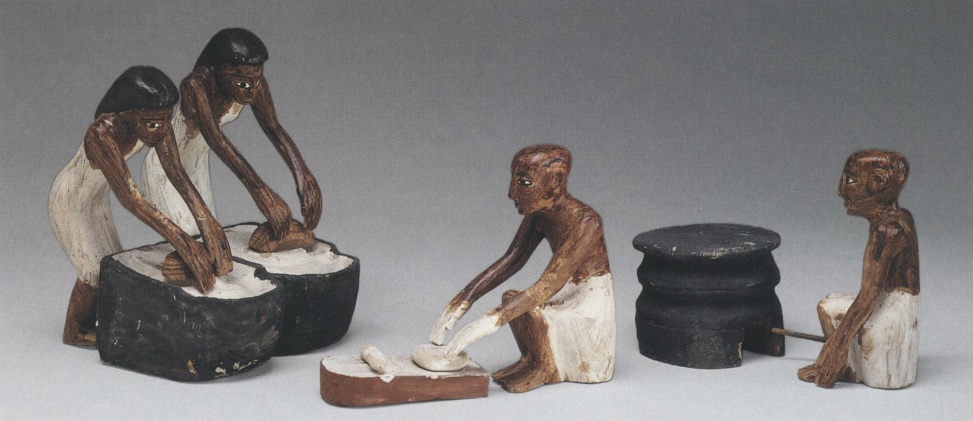
Elizabeth Lang demonstrates in her text how material tools like grindstones can provide insight into the working, home, and social lives of women in ancient societies. Specifically looking at evidence of querns from Amarna and Deir el-Medina in ancient Egypt, Lang seeks to examine how the task of grinding grains influenced the identity and position of the domestic, non-elite person. Grinding was an essential activity because it was necessary for making bread – the staple food source for the majority of the Egyptian population. It was also a repetitive and intensely time-consuming activity. The claim that it was solely women doing this type of labor is substantiated by many artistic depictions portraying women kneeling over these querns and by literary and documentary sources that reference ‘maidservants’ grinding grain. In a technical sense, Lang describes two viable set-ups: the saddle quern, which would have been portable and laid on the floor, and also a quern emplacement that was easier to use for the body and also for efficiency but had to remain in one static location. Quern emplacements being frequently found in the front rooms of houses could suggest that women worked with their neighbors, while an absence of emplacements and the majority usage of saddle querns would have allowed for women to leave their homes and work together in social groups. According to Lang “grinding grain is … an excellent example of the type of labour called ‘maintenance activities’ which regulate and stabilize social life.” Furthermore, grinding was skilled work that would be taught and improved upon in groups and between mothers and daughters. Lang asserts that through the material evidence of these grindstones, we garner insight into the labor organization and social hierarchies of the ancient Egyptian world and better understand the daily self-identities of these working women.
Pottery Production and Use
It is difficult, and perhaps ultimately unproductive, to attribute pottery production to one gender or another. Utilitarian handmade cookware is often thought to be produced by the same women who would utilize the wares in domestic food production. The potters who fashioned mass-produced ceramics in workshop settings, on the other hand, are often assumed to be male. For good reason, no consensus emerged regarding the gendered production of decorated fineware. Recent ethnoarchaeological studies have sought to escape the gender binary by stressing the involvement of many members of a community (females, males, older individuals, and children) in various aspects of the process, such as the building of kilns, the gathering of firewood, the mining of clay, and the painting of the pottery. That such observations may be pertinent to past civilizations as well is borne out by John Kanter and his colleagues’ biometric study of fingerprints on ancestral puebloan pottery in the 10th and 11th centuries CE. Their findings indicated that both males and females participated in the production of corrugated utilitarian pottery, though the contributions of each sex seemed to very over time and also within discrete social groups. In terms of broad trends, their study suggested that corrugated pottery originally had been produced primarily by males, but as society increased in complexity – about the time that Chaco Canyon was becoming a major regional center – ratios of male and female potters became more balanced. The growing demand for storage jars, it is suggested, necessitated a widespread mobilization of labor.
What can gendered aspects of pottery production reveal?
Pottery production is inseparable from the socioeconomic organization of a society. Based on their study of Early Iron Age Greece (in which they found notable similarities between woven designs on textiles and imagery on pottery) and also on numerous ethnoarchaeological studies, Sarah Murray, Irum Chorghay, and Jennifer MacPherson posit that female contribution to pottery production and decoration is likely to increase as societies initially become more permanent and sedentary and the need for storage containers increases. As systems become more complex and population density rises, on the other hand, women’s involvement in these aspects of production may decrease. Stylistic changes that occurred in the late eighth and seventh centuries BCE, they suggest, are likely symptomatic of changes in ceramic production that took place in tandem with large-scale economic changes. Demographic and political shifts alienated many men from landholdings and encouraged them to pursue craft production as a livelihood. This, in conjunction with the commodification of decorated pottery and the resumption of lucrative long-distance exchange, meant that pottery production became largely the domain of men. Not coincidentally, Murray and her colleagues point out, the subject matter of decorative pottery shifted from scenes of mourning to scenes of martial activity and the influence in design shifted from textiles to metalwork – a sphere dominated by men.
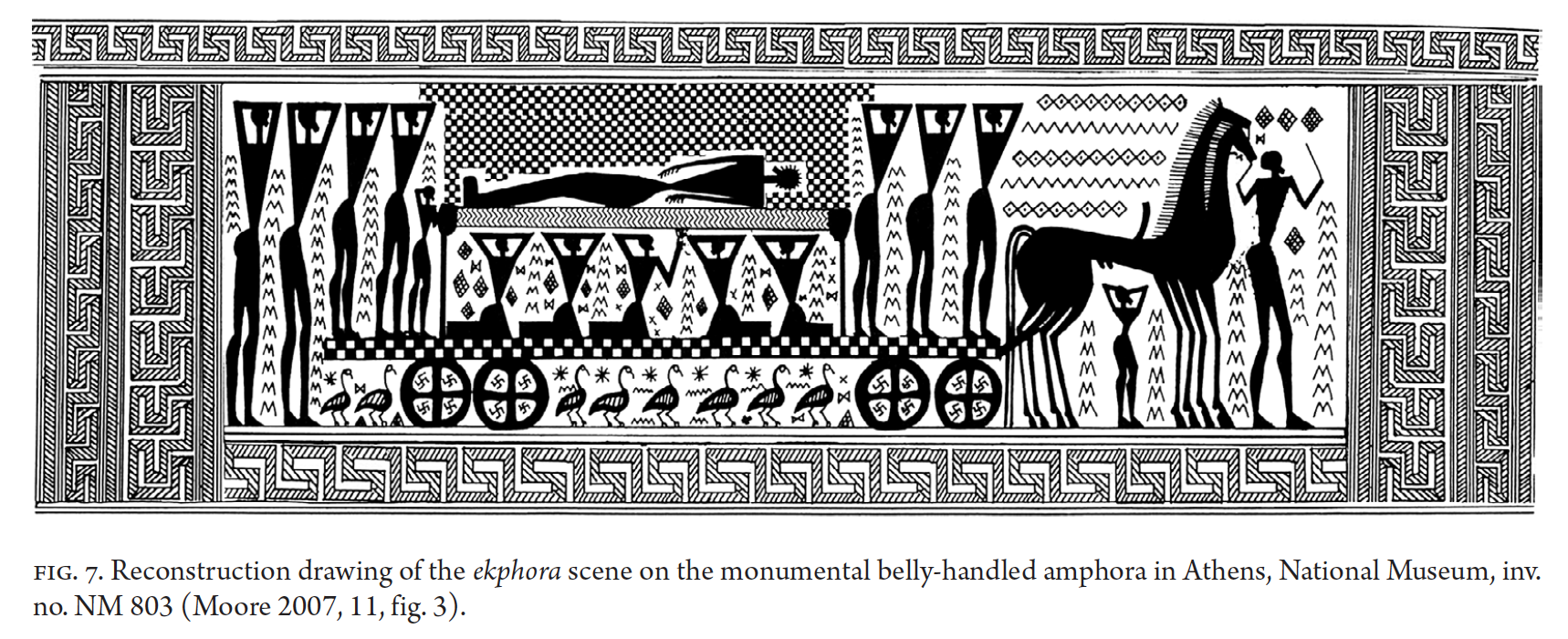
Case study #1: “Ethnoarchaeological Study of Brewing Technology in Wallaga Region of Western Ormia, Ethiopia” by B.S. Wayessa, D. Lyons, and B. Kooyman.
In the Wallaga region of Ethiopia, beer plays a crucial role in social and spiritual life. Beer is consumed regularly at meals in family settings, but so too it forms a key part of nearly every important event. It is drunk to celebrate births, weddings, circumcisions, initiations, reconciliations, and funerals. It also plays a key role in placating ancestral spirits. The manufacture of beer jars – and of pottery in general – is the province of artisan women, who form a caste group and practice endogamous marriage. Indeed, it is believed that a male who made pottery would risk sterility. Potters begin to teach their daughters when they are around age seven, though some especially difficult forms (such as beer jars) are made only by elderly women, who are deemed to possess the necessary skill. Girls are taught in a hands-on fashion and also by virtue of proverbs and storytelling. Groups of women often go together to mine clay, and they sometimes purchase potsherds at the market with which to manufacture temper. Beer jars are produced only in the dry season, because the thickness of their walls requires extended periods of hot weather to dry. Beer, too, is made by women, which is not surprising given that the process is intimately related to that of making the bread that women bake.
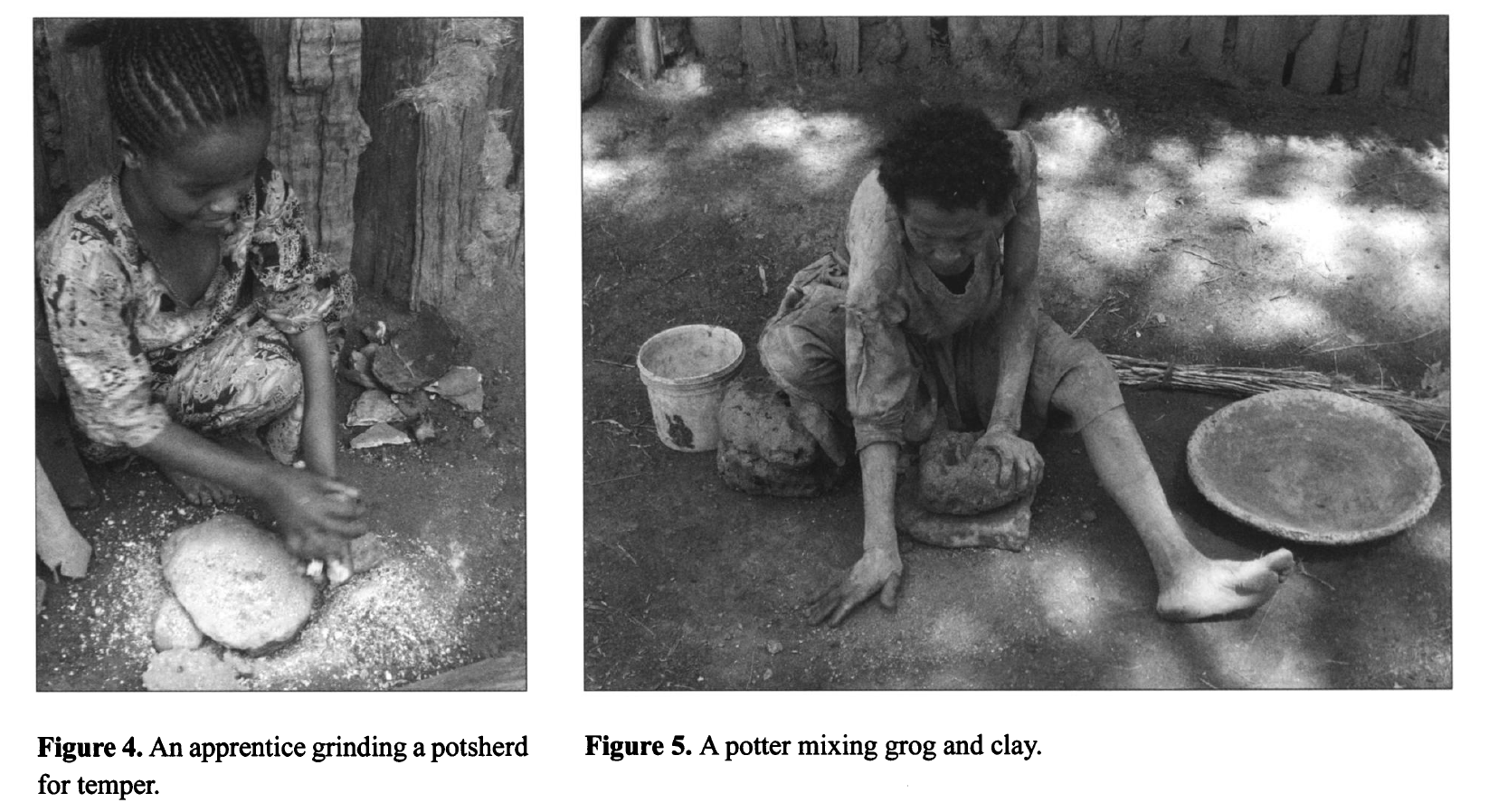
Case study #2: “Women’s Labor and Pottery Production in Prehistory” by Rita P Wright.
For her contribution to Engendering Archaeology: Women and Prehistory, Rita Wright set out to test whether the ethnographic model that codes household pottery production as female and workshop production as male fits the data in prehistoric South Asia. To test this hypothesis, she analyzed the locations of various types of pottery production. Ethnography demonstrates that when the most favorable climatological time for pottery production coincided with busy periods in the agricultural calendar, men typically travelled to their fields, while women would manufacture pottery in an area conducive to keeping an eye on children. Wright notes that at the early Harappan site of Mehrgarh, the pottery production areas are overwhelmingly found near dwellings. Unexpectedly, however, storerooms associated with some of these household industries contained as many as 200 vessels – far above the needs of a single household! At the time, Mehrgarh was involved in long-distance exchange with communities 700 km distant. Thus, it is likely that some women were not only involved with pottery production but, so too, oversaw the commercial exchange and distribution of their wares. Only in the urban center of Mohenjodaro have archaeologists found workshops relegated to an industrial zone on the outskirts of the city along with seals and other signs of an administrative, rather than household, control of production.
Case Study #3: ““New Fingerprint Evidence for Female Potters in Late Bronze Age Canaan: The Demographics of Potters and Division of Labour at Tel Burna” by Jon Ross, Kent Fowler, and Itzhaq Shai
This paper investigates fingerprints from Late Bronze Age ceramics found at the site of Tel Burna in the southern Levant to determine the age and sex of the potter. The study departs from traditional means of classifying pottery that focus on morphological characteristics or production methods rather than the creator. The researchers studied 52 fingerprint impressions from 40 objects found within the Tel Burna cultic enclosure. Analysis of the epidermal ridges from the prints allowed researchers to categorize potters by age and gender. The investigation revealed a diverse group of potters with an average age of 18-19, predominantly composed of late adolescents with a smattering of older adults. Notably, the ratio of female to male prints was nearly 4:1! The findings demonstrated a pattern of “female dominant cooperative labor,” with the exception of certain types of closed containers. In other words, the gender division of labor depended on the function of the vessel. Male potters specialized in objects designed to store various goods, while female potters were the primary contributors to the overall production. The fingerprint evidence of female potters suggests that women held a degree of “household power” and suggests a gender complementarity when it came to labor roles. While additional evidence is needed to compare the fingerprint evidence with other sites, the data is promising for further exploring divisions of labor in Canaan.
What can pottery decoration tell us about gender in pottery production?
In Early Iron Age Greece, the decorative style in pottery was specifically “tectonic and geometric,” as opposed to curvilinear, as was the norm at the end of the Late Bronze Age. This visual change has recently been attributed by Sarah Murray and her colleagues to a change in who was producing and decorating the pottery. The geometric designs contain a great deal of crossover with designs found in textile production. Weaving has been regarded as a female dominated art form due to the ethnoarchaeological record of Greece and, especially, literary sources such as the Linear B texts and Greek poetry from the Archaic Period. The technical constraints of weaving resulted in mostly geometric and linear designs, bearing a strong similarity to decoration found on pottery. Pottery decoration did not inherently have these constraints, which would suggest that the geometric decoration resulted from an imitation of woven designs. This observation positions women as central contributors within pottery production, helping us to gain a larger understanding of the socioeconomic setting in Early Iron Age Greece.
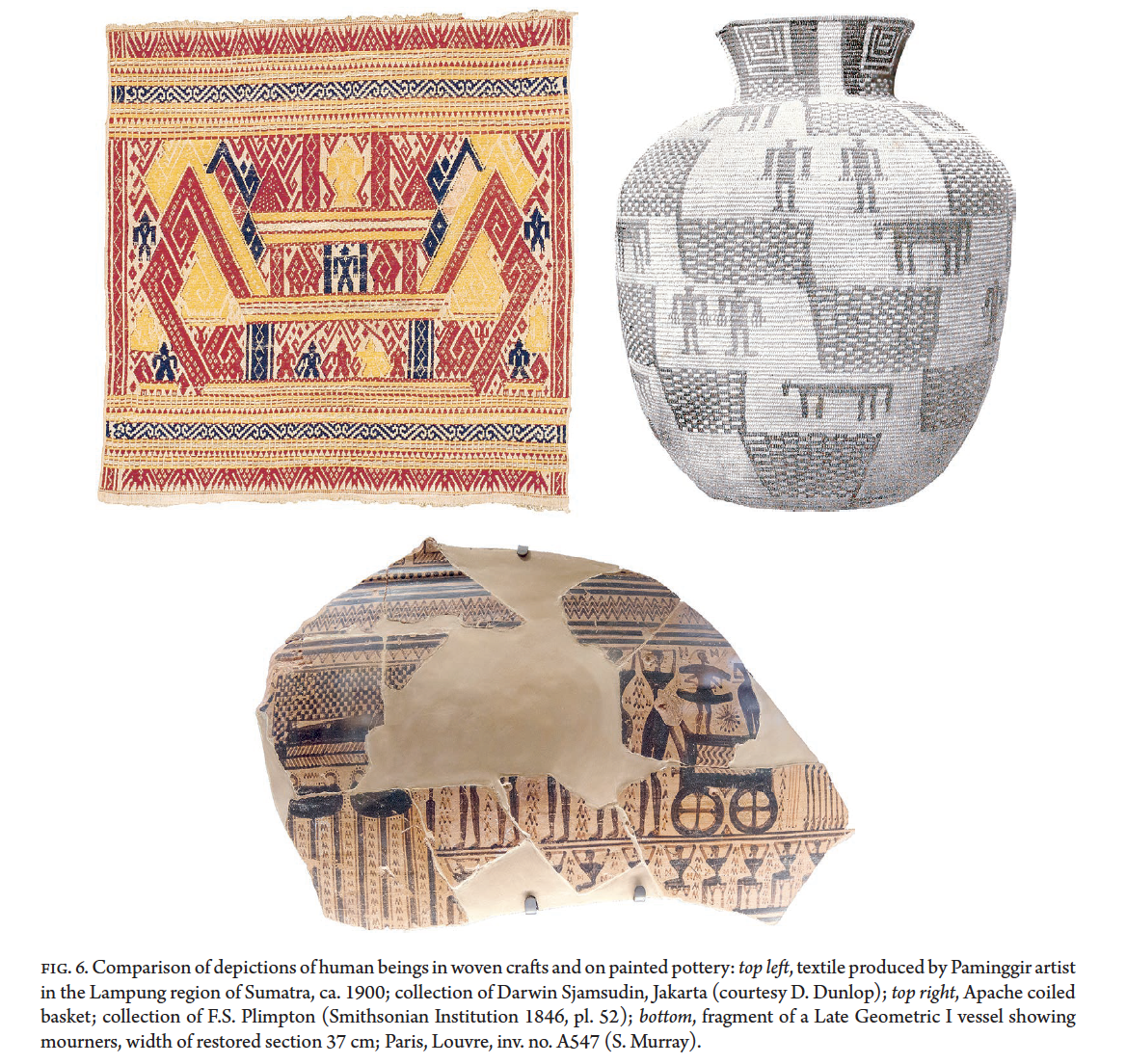
Anthropomorphic Figurines
Anthropomorphic figurines and the contexts in which they are found help archaeologists attempt to understand a culture’s perception of gender and sexuality, “magic” and religion, and many other facets of belief and practice as well. Cross-cultural studies of figurines suggest that their uses were extremely varied. Anthropomorphic figurines found within temples or at other cultic sites often represented supernatural entities, their worshippers, or the desired outcomes of prayers. Figurines found in tombs, on the other hand, are frequently suggested to represent mourners, facets of the deceased’s identity, loved ones, or functionaries that were meant to serve or aid the deceased. Those discovered in domestic contexts may perhaps provide clues as to the nature of the dedicants, practices, or objects of household cult, into the socialization of children, and/or into practices related to initiation and fertility. Many other figurines, especially those manipulated and deposited in strange circumstances, likely represent unsuspecting individuals subjected to magic (would-be lovers or enemies perhaps). It is both intriguing and frustrating, however, that figurines are most often discovered in ambiguous or varied archaeological contexts, so that their ancient uses remain obscure. Whether the sex of a figurine is intentionally elided or else is represented emphatically, these portable images – frustrating as they often are – offer particularly evocative hints as to a culture's beliefs about gender.
What can figurines tell us about the role of women and of female power in religion?
There is no all-encompassing answer to this question. Figurines often depicted goddesses, priestesses, and female worshippers – categories that provide a great deal of information about who was worshipping and who was being worshipped. This is especially the case when imagery associated with the figurines appear in other media (in decoration on pots, textiles, temples, or tombs, for instance). When no such external clues are available, the situation is more ambiguous. Indeed, a great deal of scholarship in recent years has pushed back on an uncritical assumption that figurines of females should be equated with “mother goddesses” and suggests many other plausible identities for and uses of female figurines. Female power, encapsulated in female figurines, is also ripe for appropriation by males attempting to expand their own spiritual authority (see case study #2).
Case Study #1: “Paddle Dolls and Performance in Ancient Egypt” by Ellen Morris
Nude or partially clothed female figurines discovered in burial contexts have most frequently either been suggested to be “concubines of the dead” (meant to gratify sexual urges in the afterlife) or else “fertility figurines” (meant to magically aid in rebirth). By examining the archaeological and cultural contexts of thin wood female figurines that exhibit wild hair, patterned dresses, and a revealed pubic region, Ellen Morris mounts the case that these figurines represented votaries of Hathor. The figurines were discovered in close proximity (in time as well as space) to the mortuary temple of King Mentuhotep II (c. 2060-2009) at Thebes, and they bore diamond shaped tattoos that closely mirrored the tattoos of real women buried in a courtyard attached to the temple as well as dancers depicted on tomb walls. Mentuhotep associated himself with the sun god Re, and the women are known – through multiple lines of evidence – to have been cultic dancers who were capable of embodying the goddess Hathor in their dances. Not only did the tattoos, patterned dresses, and associated real or model instruments match those characteristic of women in khener-troupes, but the figurines were often found in found in groups that mimicked the composition of known dance troupes (composed of mature women as well as a single prepubescent trainee). The strange shape of the dolls emulates the necklace counterpoise that was sacred to the goddess Hathor. It also, however, emphasized a revealed pubic area, which connected the figurines to a well-known myth in which the depressed and dormant sun god was revived (through laughter) and revitalized when his daughter Hathor gave a sudden and unexpected flash of her pubic region. Morris argues that just as real khener-women danced a revealing dance (as Hathor) for the soul of Mentuhotep II (as Re), so individuals who lived around the temple (or pilgrims who traveled to it) purchased a figurine in hopes that it would dance for the revival of their own spirits after death.
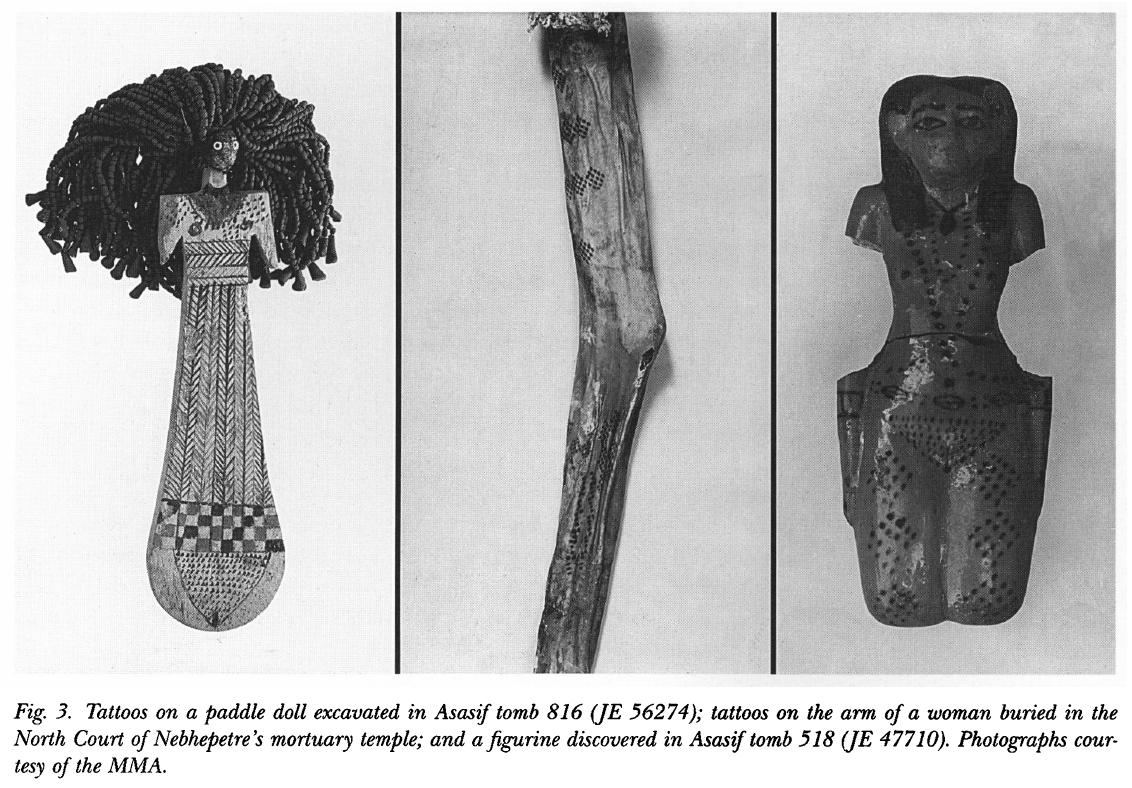
Case study #2: “Configuring the Individual: Bodies of Figurines in Minoan Crete” by Christine Morris
Bronze Age figurines are often referred to in broad terms as “fertility goddesses” or “votive statues,” but they may be far more individualized. In this paper, Christine Morris argues that most figurines were representations of the individual who employed them in a ritual and that they played a role in forming individual social identity. Drawing on figurines from the Minoan peak sanctuary of Astipades Korakias as a case study, Morris notes individualized details of figurines as well as the presence of groups of figurines that appear to represent families. If these figurines in fact represented specific people, this has broad implications with regards to how we view them in relation to gender. For example, Morris takes issue with the claims of Preziosi and Hitchcock that more individuality is present in male figurines than in female figurines, given that the former were supposedly often provided with greater detail in their accoutrements and form. Morris argues, however, that this claim is incorrect and resulted from the fact that these scholars compared figurines between sites rather than within a single assemblage. In the case considered, the greater detail of the male figure was due primarily to the quality of clay used to sculpt it. Viewing figurines at Minoan peak sanctuaries as individual representations, rather than as generalized concepts opens up avenues for exploring the way that actual women were portrayed and saw themselves as religious actors.
Case Study #3: “Our Father (Our Mother). Gender Ideology, Praxis, and Marginalization in Pueblo Religion,” by Severin Fowles
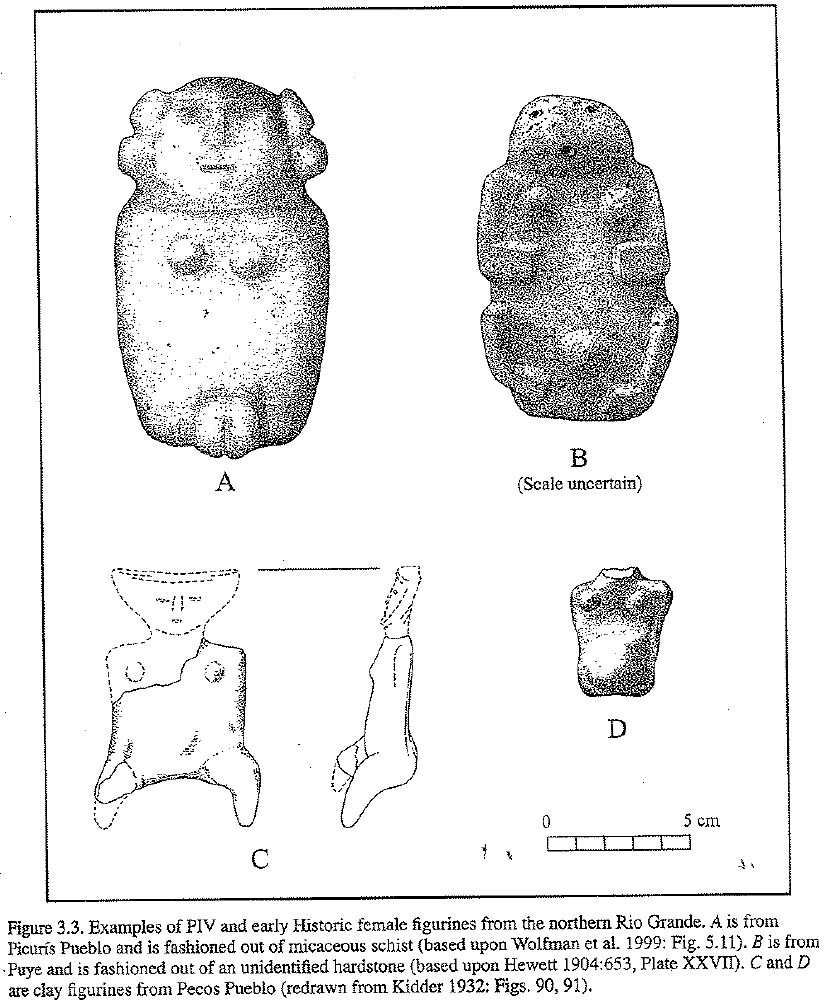
Should the presence of numerous female figurines and female symbolism in highly charged aspects of material culture be taken to indicate that women in that society occupied unusually strong leadership roles? In some cases, perhaps; in others not. In this article, Severin Fowles addresses the radical disjuncture between the spiritual importance of female reproductive power in the Tiwa communities of Northern New Mexico in the Pueblo IV period (c. 1350-1600 CE) and the relatively circumscribed role that earthly women occupied in the religious hierarchy. Archaeological evidence suggests that when large village communities first coalesced in the Pueblo III period (c. 1150-1350 CE) gender roles in ritual practice were complementary. Cupule shrines (associated with women) complemented axe slick shrines (associated with men), and traditionally male-dominated kivas co-existed alongside rooms in which oral history suggests young woman ground corn for the creator in emulation of the Earth Mother. Counterintuitively, however, the visual prominence of female imagery radically increased in the Pueblo IV period, at a time when cupule shrines and communal grinding rooms seem to disappear from the archaeological record. This new female imagery, significantly, was often discovered in male-dominated spheres. Fowles attributes this trajectory to changes in the structure of northern Tiwa society that de-emphasized kin relations and reified male control over positions of ritual power. In their move to consolidate spiritual authority, he argues, males seem to have symbolically usurped female reproductive power. This resulted in ritually powerful males being viewed as both male and female (“Our Father, Our Mother”), while women remained solely women. A ceremonial deposit in which a stone figurine of the Earth Mother was sequestered underneath deposit of five flutes – instruments that were strongly coded male – help illustrate the author's point that although “female symbolism was ideologically embraced and intricately woven into group ritual by men; female participation was not.”
Case Study #4: Women, Children and the Family in the Late Aegean Bronze Age: Differences in Minoan and Mycenaean Constructions of Gender” by Barbara Olsen
In this article, Barbara Olsen uses iconographic and textual evidence from both Minoan Crete and Mycenaean Greece to illuminate differences in gender constructions between the two Late Bronze Age societies. She centers her argument on depictions of women from each society as child-rearers, specifically using anthropomorphic kourotrophoi statues (which portray women cradling children) as evidence. Olsen first asserts that gender is a “culture-specific phenomenon.” In doing so, she opposes previous scholars’ polarizing theories that Bronze Age women were either central to religious life (like the “Minoan Mother Goddess”) or solely restricted to domestic life and child-rearing. Before discussing the more central kourotrophoi, she investigates Linear B tablets found at Pylos, a Mycenaean site, and Knossos, a Minoan site. With these tablets, she outlines how gender roles were demonstrated, first, by the division of the workforce by gender in administrative records and second, by children accompanying women in the “personnel series” tablets. She then explores iconographic depictions of “nurturing scenes,” pointing out that Mycenaean nurturing scenes primarily appear in the form of kourotrophoi. These figurines are a subcategory of the prominent Mycenaean terracotta figurines and consist of the same three types: Phi, Tau, and Psi, with the addition of a child, either clasped on the left side of the mother or unclasped, as seen in the Psi type. There are no kourotrophoi found on Minoan Crete, contrastingly. The only anthropomorphic figurine depicting a nurturing scene is from much earlier, in the Early Bronze Age, and images depicting women with children in Minoan Crete are largely absent. There is one example of a kourotrophos figurine found in Mycenaean Crete, but Olsen argues that this is not representative of Minoan conceptions of gender and childcare, but rather of Mycenaean cultural practice. Overall, these findings suggest that Mycenaean and Minoan cultures viewed gender roles differently, and in the latter there was certainly “no standardized investment in depicting motherhood as women's primary social role.”
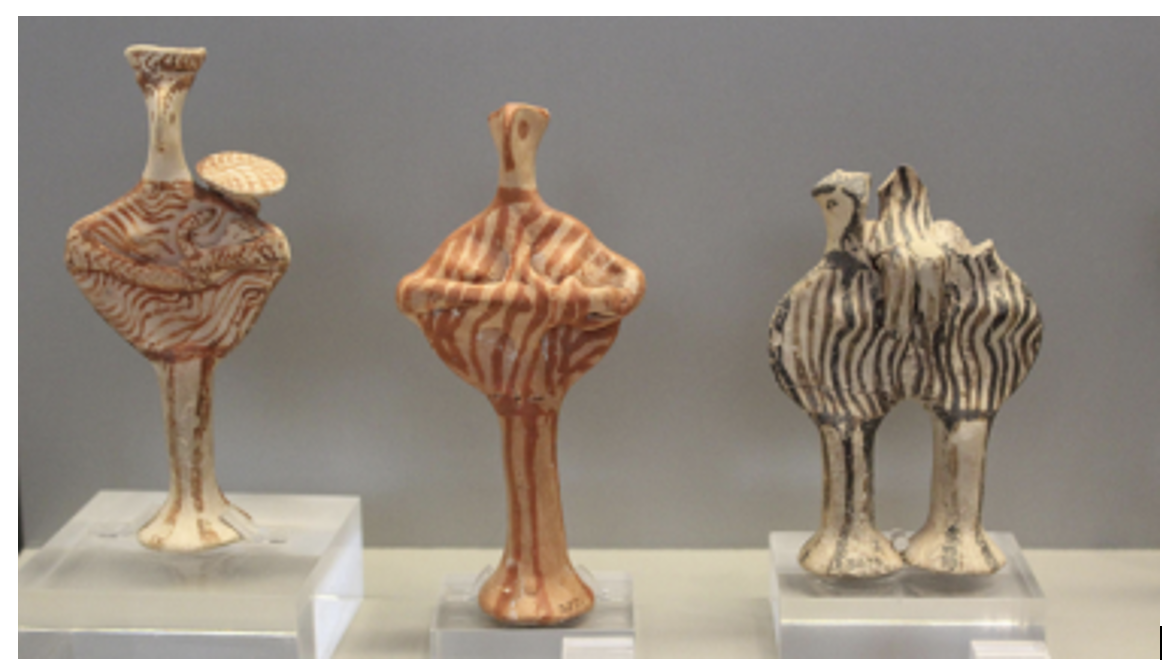
Case Study #5: “Creating a Goddess of Sex” by Stephanie Lynn Budin
The sexual aspects of the female goddess figurine have been traditionally tied to fertility, motherhood, and childbirth. In contrast, the same sexual iconography observed in figurines depicting mortal women has been interpreted as undeniably and inherently sexual—sometimes even, as written by Cypriot figurine collector Desmond Morris, as a lusty “diversion” buried alongside the deceased man. Drawing upon an abundance of artistic and literary evidence, historian Stephanie Lynn Budin challenges this conventional dichotomy. Budin argues that goddesses central to Ancient Near Eastern religions, such as the Mesopotamian-Syrian Ishara and Ishtar/Inanna, possessed a fundamental sexuality not necessarily associated with fertility and maternity. Indeed, this divine female sexuality could exist as an independent attribute of the goddess, a source of divine power over which the goddess may preside. Having demonstrated that these goddesses were associated with sexuality in and of itself, Budin then examines how the figurines of these goddesses helped create the goddess who would become Aphrodite—a goddess characterized by her power over raw sexuality and desire. By carefully examining the literary and visual evidence underlying the representation of a goddess, rather than defaulting to tired models of fertility and maternity, the various goddesses of the ancient world can be fully understood and related to the social and religious experiences of mortal women.
What can votive figurines tell us about gendered medicine and healthcare?
From Mesopotamian medical textbooks to Athenian midwifery to modern day clinical practices, the provision of medicine and healthcare has been a humanitarian principle. Archaeologists have helped to illuminate the material manifestations of the history of medical treatment. Very rarely, however, have they sought explicitly to understand the role of gender in these medical practices. Then and now, however, the process of administering care has been highly gendered. By examining the history of female medical practitioners or the treatment of sex-specific conditions, medical archeology can provide innumerable insights into the role of women and gendered healing in a community.
Case Study #1: “Health and Healing on Cretan Bronze Age Peak Sanctuaries'' by Christine Morris & Alan Peatfield
The authors examine the role of votive offerings left at Minoan Crete peak sanctuaries in the healing rituals of surrounding agricultural communities. They claim that anatomical models left in these spaces would have been used to heal specific body parts or ailments in a similar manner to modern Greek tamata or Hispanic milagros. Clay limbs, perforated possibly for hanging (as per modern tradition) or as joints for larger dolls, emphasized body parts that required attention. These dedications of the separate limbs or full bodies of both women and men, occasionally highlighted actual pathologies. Offerings that depicted ailments, such as a hand with a tumor, arthritic fingers, or swollen legs—though fewer in number—support the claim that these votive limbs were left for healing purposes. Peatfield and Morris discuss the artistic conventions that were utilized to convey pathologies in female bodies. One figure from Prinias depicts an emphasized vulva, one of the only depictions of female genitalia in Minoan Crete! Another figure from Traostalos depicts a seated woman with a severely swollen leg, who lacked the bell skirt common on female votive figures. Both these figures violate artistic norms in the service of aiding the healing process by depicting specific ailments.
What can figurines reveal about gender in situations of culture contact?
While certain figurines are lumpier than they are diagnostic, others prove to be extremely characteristic of the time and place in which they were manufactured. In such situations, the movement of one type of figurine into an area characterized by other types of figurines may perhaps indicate immigration or culture contact. So-called “Ashdoda” figurines in Early Iron Age Philistia, for example bear a strong visual relationship to Mycenaean seated goddesses. Not surprisingly, pottery and other forms of material culture and foodways also suggest the presence of substantial numbers of Aegean immigrants at this time. In situations of culture contact, it is not unusual for figurines of both cultures to co-occur on a household altar, for instance, as Stuart Tyson Smith has discussed with respect to an Egypto-Nubian household at the site of Askut in New Kingdom Nubia. So too, hybridization may occur. Whether such culturally ambiguous figurines represent the tastes of the bicultural products of mixed marriages, a sophisticated cosmopolitan or “international” aesthetics, or entirely new religious syncretic borrowings is often more difficult to discern.
Case Study #1: “Plaque and Recumbent Figurines of the Late Bronze II” by Beth Alpert Nakhai
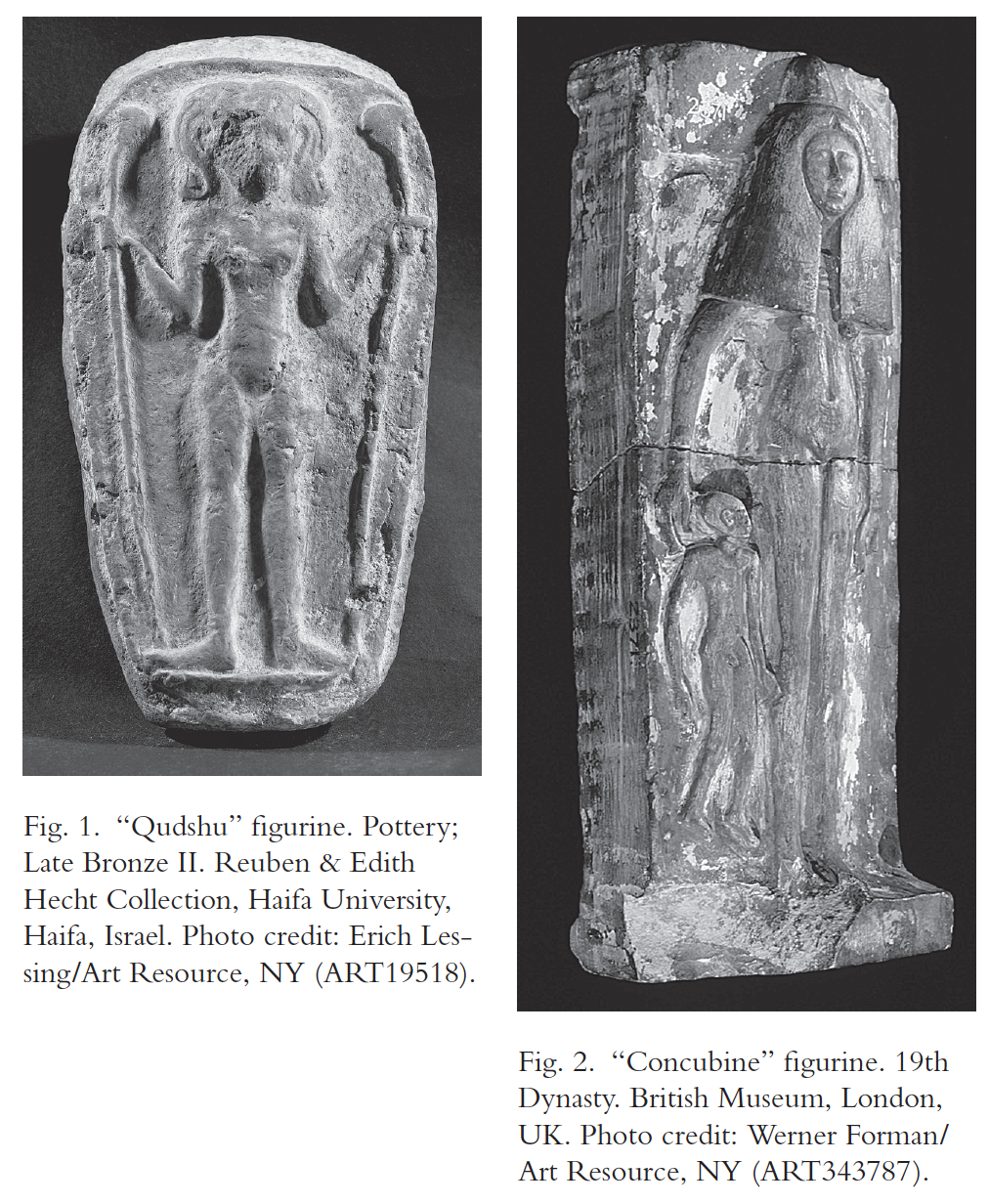
Beth Alpert Nakhai maintains that the iconography of female figurines from Canaan and Egypt in the Late Bronze Age II (c. 1400-1200 BCE) sheds light on cross-cultural religious dialogues between women concerning reproductive health. This period was marked by Egypt’s domination of the Southern Levant, which resulted in an unprecedented interaction between Canaanite and Egyptian cultures. During this time, many thousands of Levantine women emigrated or were forcibly resettled in Egypt. Likewise, Egyptian cultural influences inundated the Levant, and some Egyptian women settled in imperial enclaves. Nakhai maintains that as a result of this intensive contact, two previously distinct figurine styles began to show styles of signs of hybridity. The Egyptian-style of figurine – often erroneously dubbed in older scholarship “concubine” figurines – depicted a recumbent woman with or without a child laying on a bed with her hands by her side and her feet pointed up. This iconography is closely connected to figural scenes that depict a new mother seated on a birth bed following a successful delivery. Its counterpart in the Levant was a “Qudshu” figurine that portrayed a front-facing nude goddess, who often supported her breasts with her hands. During the period of Egyptian domination, however, this divine figure often wore a Hathor wig and held a lotus or papyrus – both quintessentially Egyptian plants. Many of the Egyptian-influenced Qudshu figurines in Canaan were made of inexpensive clay and found in household shrines, indicating that these were objects of domestic worship, most likely relating to cults of fertility and childbirth. In Egypt images of a similar goddess began to appear on votive stelae at this time – with one such goddess being specifically identified as “Qudshu-Astarte-Anath.” Alpert argues that this Canaanite goddess became syncretized with the Egyptian goddesses that promoted fertility and protected pregnant mothers and infants. In Canaan, figurines of women on beds were discovered in Egyptian enclaves, but so too in typically Canaanite settlements where their iconography shifted slightly. On the basis of this evident transculturation, Nakhai asserts that Canaanite and Egyptian women – whether in Egypt or Canaan – engaged in cultural discussions and “reconfigured their deities as they absorbed compelling characteristics from both their pantheons.” Once the Egyptian empire failed, however, opportunities for such cross-cultural conversations radically decreased, as did their material manifestations.
What can representations of the body in art teach us about how gender was constructed and communicated in the past?
Many factors influence changing gender norms such as might be reflected in the way individuals are portrayed in statues or figurines. One of the most dramatic is a change in governance from autonomous villages or small-scale societies to a state structure. Under states, gender roles usually shift in accordance with labor demands, pressure for increased production of children, and/or new hegemonic conceptions of gender.
Case Study #1: “Transformations in Representations of Gender During the Emergence of the Teotihuacan State: A Regional Case Study of Ceramic Figurines from the Basin of Mexico” by Kiri Hagerman
Kiri Hagerman was interested in whether, as commonly believed, women's status declined with the coming of the state in Teotihuacan. To test this she and her team collected figurines that pre- and postdated the state from four different urban and rural contexts. The team kept track of what kinds of “sexual attributes” (i.e. breasts, pregnant abdomen, penis, etc.) and clothing figurines possessed, and they divided types of clothing and sexual attributes into “male” and “female” categories. Hagerman and her team found that sexual attributes are only common in the pre-Teotihuacan period, making up as much as 60% of figurines at one point. Once the state developed, though, sexual attributes all but disappear and can only be found in 7% of figurines. Sexual characteristics are replaced by depictions of clothing and jewelry but not in a way that maps onto Western binaries of male/female. The binary distinction found during the Teotihuacan period seems to be warrior/non-warrior, as warrior figurines never wear jewelry or clothing, and all other figurines do. Hagerman’s work suggests that during the Teotihuacan period sexual attributes and clothing are “not determinants of how social difference was generated and ascribed.”
Semiotics of Personal Style and Adornment
The manner in which men, women, and nonbinary individuals are depicted in ancient art and were adorned for the grave can tell us a great deal about expectations for the various genders in the ancient world. As today, hairstyles often encoded messages about life-stages and societal values. Whether men were clean shaven or wore beards differed across ethnic groups and between social classes and often spoke volumes about societal attitudes toward masculinity. So too, choices concerning jewelry bore important information about a person's social and marital status as well as their attitudes toward beauty, luxury, and conspicuous consumption. Clothing, likewise, broadcast personal, cultural, and occupational affiliations. Social status, age, and attitudes toward sexuality and flamboyance are also often decipherable. Paying close attention to personal style and adornment, then, is vital to any effort to understand gender norms, aspirations, and idiosyncracies.
Case Study #1: “Hair and the Construction of Identity in Ancient Egypt, c. 1480-1350 B.C.” by Gay Robins
In this article, Gay Robins analyzes hairstyle as a marker of gender, class, and age in Egyptian tombs. She investigates how the depictions of hair can influence our understanding of societal gender roles in Egypt. Despite her main source being elite funerary art, Robins’ investigation nevertheless yields some interesting insights into the role of hair as a signifier of gender, class, and age in funerary art. For example, the lines of gender and status seem blurrier among children than among adults. Boys and girls both had their heads shaved with a single lock of hair falling from the side. Likewise, children of all statuses could be shown nude, whereas in adulthood only non-elites were nude. Robins theorizes that due to high childhood mortality rates children’s societal designation did not take place until puberty. In adulthood, however, these distinctions were sharper: elite men were always clean-shaven or had neat moustaches. They often wore elaborate shoulder-length wigs, while non-elite men either had shaved heads or unkempt hair, as well as beards or stubble. Robins therefore posits that men’s hair in this period was connected to social status. Women of all statuses, on the other hand, are depicted with natural, breast-length hair, which emerges from under wigs in the case of elite women, something never seen in men. Curiously, younger women of the servant and musician class often have the most elaborate hairstyles and more transparent clothing, which Robins suggests may denote a link between women’s hair and sexuality. Robins also points out that women in cultic contexts are depicted with short hair that leaves the ears exposed, and that elites of all genders are laid to rest with chest-length wigs. These examples could be seen as spaces in which traditional gender binaries of appearance may have been allowed to be disrupted, as in childhood. Although the article focuses on two-dimensional representations, it has relevance for the interpretations of statuary as well as mortuary remains.

Case Study #2: “Anklets and the Social Construction of Gender and Age in the Late Bronze and Early Iron Age Southern Levant.” By John Green.
In this article, John Green highlights the role of anklets in explorations of gender and age in the Late Bronze Age or Early Iron Age southern Levant. Green focuses on the site of Tell es-Sa’idiyeh in Jordan, whose cemetery reflects a “culturally diverse” population and includes objects of Egyptian, Cypriot, and Aegean style or origin. Of the individuals at this site identified as female, several wore anklet pairs, with either two anklets on one leg or one on each leg. Several of the infant or child burials also wore anklet pairs. The few male individuals found with anklets all wore single anklets rather than pairs, betraying a “gendered asymmetry.” Given that the metal anklets may possibly have doubled as currency, Green first considers how these objects, “as both gendered symbol and commodity…may even have played a role in the objectification of women and children as commodities themselves.” Evidence indicates that these anklets were difficult to remove and thus were meant to be worn over extended periods until they were outgrown or replaced. While the anklet pairs found on female individuals could have been indicative of their sexual availability or lack thereof, Green also considers a compelling alternative explanation. Because certain divine females were also depicted wearing anklets, he suggests that “anklet pairs were a highly visual symbol associated with the body, reinforcing links between women and the deity and the bonds between mothers and children.” Two factors make this suggestion particularly compelling. First, three of the anklet-wearing women at Tell es-Sa’idiyeh died during pregnancy or childbirth, which would support a connection between anklets and female divinities whose oversight included pregnant women and/or fertility. Second, Green finds a parallel among men. Two and three-dimensional representations of gods and/or elite males occasionally show figures wearing single anklets, just as certain male burials at Tell es-Sa’idiyeh do. While the significance is unclear, the connection would seem to signal a symbolic affiliation
Gender Performance and Queer Archaeology
In their seminal book Gender Trouble: Feminism and the Subversion of Identity, Judith Butler introduced the idea that there are no "natural" ways in which biological males or females act. Gender-specific norms are culturally constructed, vary through time and place, and an individual’s adherence to a given norm should be considered a performance that is often necessary for societal acceptance. Queer theory likewise rejects any naturalization of gender binaries or proclivities, along with other assumed structural truths about the way humans do or should behave. In her article, “How to Queer the Past Without Sex: Queer Theory, Feminisms and the Archaeology of Identity,” Chelsea Blackmore pushes the notion of queerness beyond gender and sexual performance, stating “The queer movement challenges the very ideas of normality which underpin social institutions… Queer becomes a verb, the very act of deconstructing or at least questioning the categories and methodologies naturalized within scholarly discourse.” Archaeology from a queer perspective does not aim to chart a linear history of “normal” gender or sex, but instead challenges the very notion that normal and natural exist. To queer the past is to engage with all aspects of our past and present, seeing social categories as falling along a fluid matrix which is highly changeable. As humans, we are and always have been constantly in the process of (re)negotiating and (re)constructing bodies, space, and time. Queer archaeology thus offers a radical method for contesting our predispositions and building alternative understandings of the past and ourselves
Case study #1: “How to Queer the Past Without Sex: Queer Theory, Feminisms and the Archaeology of Identity” by Chelsea Blackmore
Through studying archives and rituals of Mayan burials, deposits, evidence of feasting, and utilization of seashells, Chelsea Blackmore aims to (de)construct the assumed perception of the “commoner” in ancient Mayan societies. Blackmore argues that the very notion of the “commoner” insinuates a binaried societal structure, as “commoner” is an inherently neutral counter to the category of “elite.” For context, some frequently used naturalized markers today include male/female, straight/gay, cisgender/transgender, white/Black, etc. These dichotomies create fixed biases within archaeological research, which have resulted in essentialized and condescending depictions of present-day Mayan societies. Contrary to the breadth of research on Mayan history, Blackmore finds tremendous variances in social positioning, status, material wealth, space, marriage, religion, and practices of “commoner” households than were previously indicated in archaeological mappings of Mayan society. Furthermore, the “commoner” renders itself to be an empty title with little meaning beyond “productive” abilities, more a testament to the current objectives of present-day global capitalism than the lives of Mayan people. Blackmore therefore uses a queer approach to (re)imagine the wide arrays of kinship, class, gender, and occupation by opening up the internal workings of a society. She argues that when we try to understand the past in stable and linear terms, we are instead (re)producing a reflection of the present. By preferring an embodied queer archaeological approach, Blackmore invites archaeologists to see the multidimensional facets of the past and gain a more fluid understanding of societies in the present.
Case Study #2: “(De)queering Hatshepsut: Binary Bind in Archaeology of Egypt and Kingship Beyond the Corporeal” by Uroš Matić.
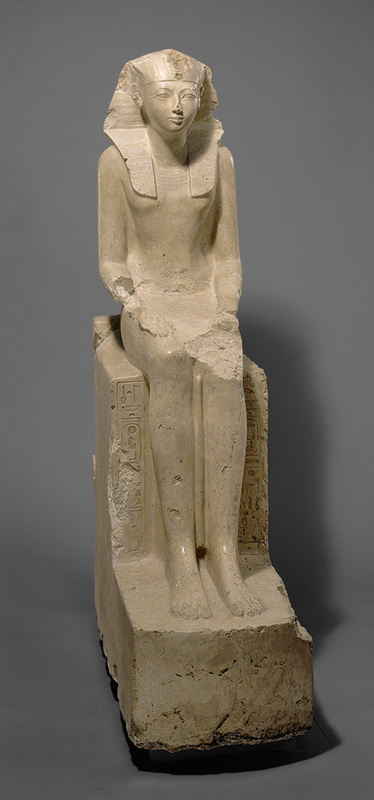
The ancient Egyptian king Hatshepsut has been called “a cross-dresser, gender-bender or woman with a beard,” but these ascriptions are heteronormative and based on the binary gender/sex complex of modern Western ideologies. Hatshepsut governed Egypt after powerful women (such as kings’ mothers, queen regents, and God’s Wives of Amun) had already exerted political power for seventy years or so. ‘Queen’ Hatshepsut was crowned King at the end of the seventh regnal year of Thutmose III’s reign. In this publication, Matić works to detangle our interpretations of Hatshepsut from our binary bias. To do so, he views her reign through the insights of queer theory and gender performance. While a binary sex/gender system can be seen in ancient Egypt, it likely did not operate as our Western one does and cannot be used to predict heteronormative relations, explicit gender roles and practices, or confining social spheres. Hatshepsut evolves in her representations – especially in imagery and titles – and Matić equates this with an ontological change. Her power as a queen had been complementary to the role of king. Over time her image changed from that of a widow in mourning to that of a male figure, while at Karnak she is shown participating in ritual while still in female dress and a regal plumed crown. In both relief and statuary Hatshepsut can be seen in the attire and positioning of a male king, and the traditional kingly titles are attached to her. Hatshepsut uses these names (and also retains her own), however, in the female gender. This choice may have preserved her personal female identity even under the title of a male political position. Matić suggests that even when male gendered terms are used, the masculine iconography of the king reflects a change in her status, rather than a personal change of her gender. From all this the question must be asked: did Hatshepsut dressing as a certain gender make him/her/them that gender? Western norms around cross-dressing result in explicit assumptions regarding the personal gender identity of an individual when such instances occur, however, Matić asserts that “the contemporary gender theory (sensu Butler) is exactly against such assumptions that simply dressing as another gender changes our gender” (Matić 2016, 815). The evolving depictions of Hatshepsut are not about the changing of sex, he argues, but rather the changing of status. Hatshepsut did not have to transform into a male but rather into the image of a king. Matić states: “we should never forget that when we deal with representations of Hatshepsut, we do not deal with her corporeal aspects … We are observing what she wanted us to see, that which she wanted to achieve.” The modern sex/gender binary that intrinsically attaches the body to material representations and gender roles cannot be automatically and unquestionably applied to ancient societies. Thus, Hatshepsut’s personal and political gender expressions ought to be examined of their own accord.
Textile Production and Use
What can textiles and patterns of textile production tell us about gender?
Across the ancient world, women tended to be overrepresented in textile production. As such, the archaeology of textiles, sites of textile manufacture, and textile tools provides a window into gender norms and the socio-economic position of producers. Textiles were essential and their manufacture was potentially extremely lucrative. Thus, in ancient societies in which men usurped most high paying occupations, textile production offered skilled female practitioners access to economic power. While some male weavers are attested – especially in cases where the cloths they produced were valued highly – the craft tended to be so associated with femininity that a male practitioner ran the risk of violating codes of hegemonic masculinity. Thus, in societies with an emphatic gender binary, textile tools found among the grave goods of biological males or depicted with them offer archaeologists a potential avenue for identifying possible nonbinary individuals. Types of textiles and textile tools often serve as valuable ethnic signifiers, while those found in sanctuaries can reveal a great deal about patterns of female religiosity. Finally, women’s association with textiles – whether as manufacturers or consumers – often became inextricably intertwined with societal conceptions of morality.
Case Study #1: “Female Work and Identity in Roman Textile Production and Trade: A Methodological Discussion” by Lena Larsson Lovén.
Lena Lovén analyzes the linkage between wool production and ancient Roman ideas of femininity, morality, and gender by examining funerary stelae, myths, and political rhetoric throughout Rome’s history. As she points out, wool work was part of a young girl’s education, life milestones, and daily activity – and it became an accepted way for others to assess her moral fiber. For instance, brides of all social classes were expected to fashion a white woolen dress for themselves as a symbol of their dedication to textile work. Moreover, from archaeological sites, we know that spinning and weaving were done in the most public space of the Roman house, the atrium, in order to ensure that the wife’s wool work was exposed to visitors as well as other family members. Iconography and text in funerary stelae and Roman literature used wool work to represent a virtuous and industrious woman. For example, Lovén notes an epitaph from 2nd-century BCE Rome featuring a woman named Claudia, which lauds her as the ideal woman, wife, and mother by praising her for “taking care of the house,” “being pleasant to talk to,” and “working in wool.” As such, wool was used to showcase the performance of gendered femininity and became inextricably entangled in notions of chastity and virtue. Indeed, as part of his moral restoration, the emperor Augustus purportedly wore homemade clothes that the public believed to be made by the woman of his household (and especially his wife Livia) in order to represent and promote traditional values. He thus publicly and actively participated not only in upholding the linkage between wool work and femininity but also in forming propaganda that was dependent on the strong association between female textile labor and morality. Interestingly, wool in textile work was so closely associated with the female gender in Rome that it became impossible for men of any social class to be associated with wool work without threatening the gender binary – unless, like Achilles of Skyros, he had adopted textile tools as part of an elaborate disguise!
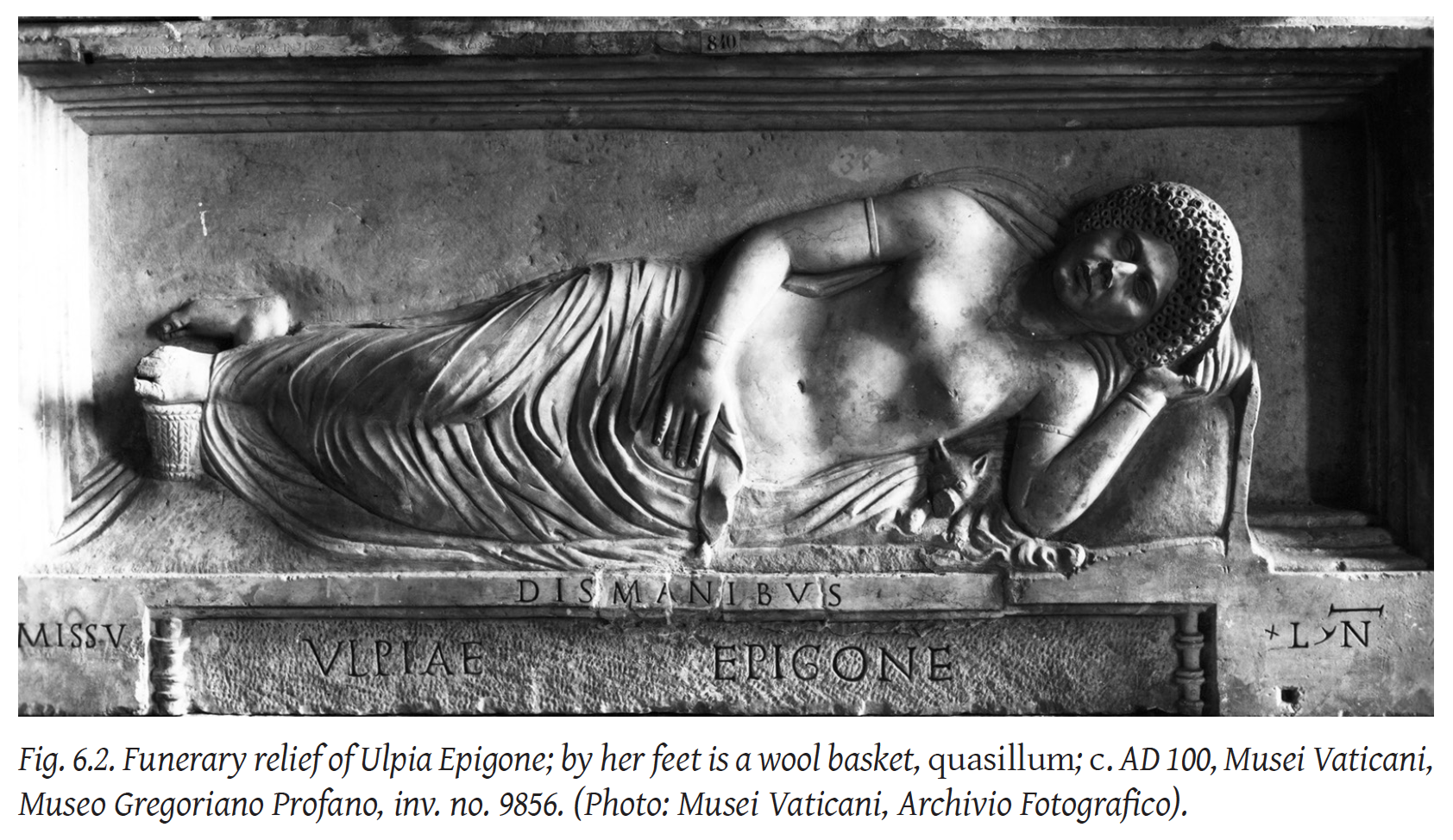
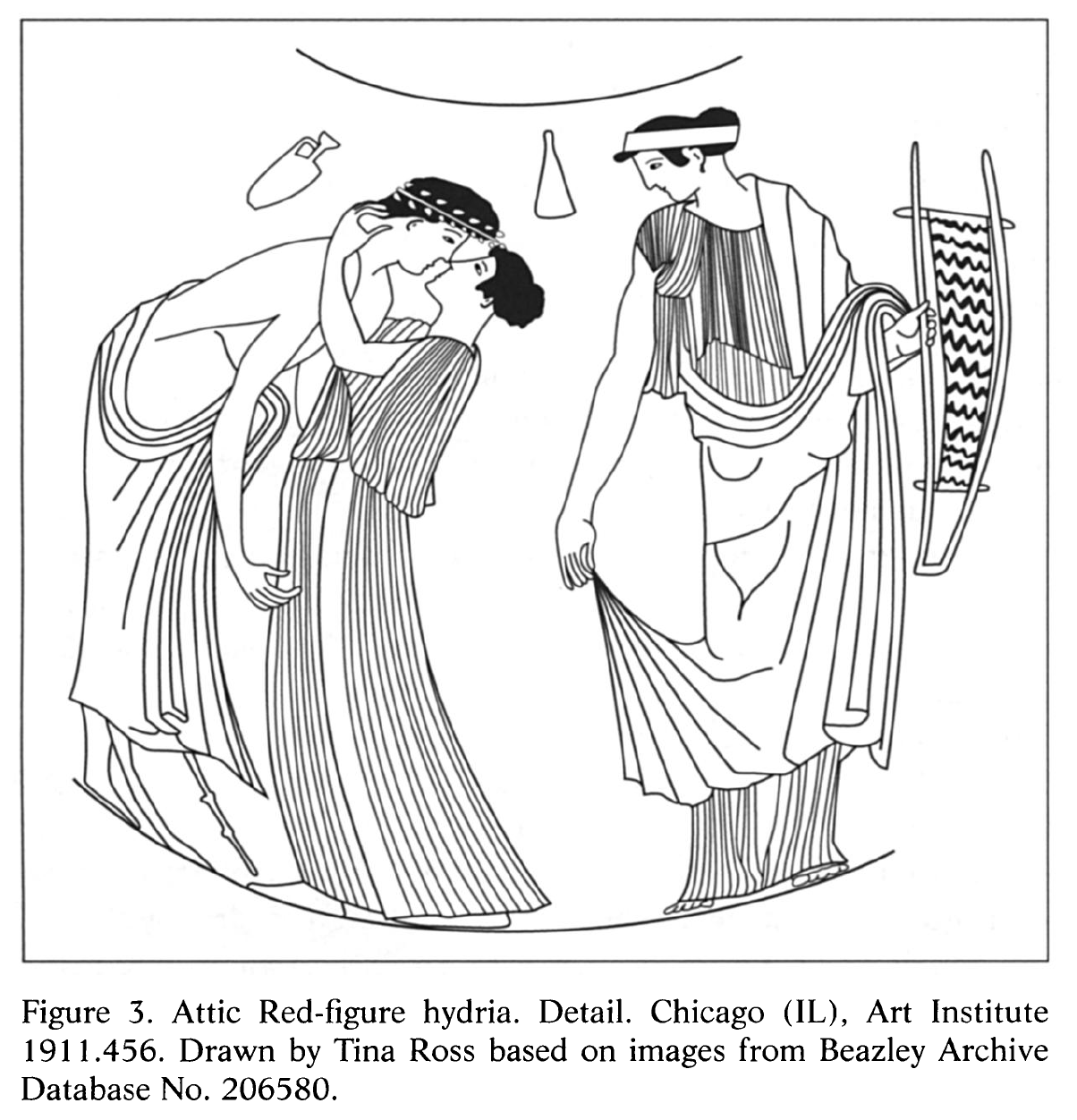
Case Study #2: “Ancient Greek Prostitutes and the Textile Industry in Attic Vase-Painting ca. 550–450 B.C.E.” by Marina Fischer.
Although Augustus did his best to promote the notion that a woman’s production of textiles was closely tied to her embodiment of chaste virtues, there is nothing inherent in this equation. Indeed, Marina Fischer utilizes vase paintings of ancient Greek prostitutes (c. 550-450 BCE) to analyze the real and imagined relationship between prostitution and textiles, two industries known to have been the most lucrative in Athens! Greek prostitutes were depicted on vases in the process of two wool-working tasks (spinning and braiding), suggesting a strong link between the production of textiles and sex work. Fischer notes that prostitutes often had idle hours between clients where they could spin to pass the time, use portable looms to create products (such as headdresses, garlands, and ribbons) to sell, or make items for themselves. Archaeological substantiation for such a combination of sex work and weaving is likely to be seen in the copious numbers of loom-weights and drinking vessels found together in nearly every room of Building Z in Athens, a sprawling complex characterized by small rooms, evidence for foreign slaves, and the worship of Aphrodite that has been identified by its excavators as a brothel. Interestingly, two spinning instruments – often used by prostitutes and associated with Aphrodite – were also closely linked with ancient Greek erotic magic, intended to create an irresistible passion in another person. Fischer argues that the spinning implements in the vase paintings serve as a visual reminder to men of how prostitutes were thought to attract and bind their customers to them with magic that employed knots and other techniques used in textile manufacture. Interestingly, such tactics crossed into a sphere of aggressive sexuality normally reserved for men – a disruption of the usual gender norms in ancient Greek society. A female prostitute’s association with textile work, sexuality, magic, and deceit, when coupled with her financial independence and penetration into male realms, such as the symposium, allowed them to exhibit an unusual gender fluidity. Thus, textile work in this instance does not serve to emphasize a woman’s domesticity, morality, and femininity (as it did in ancient Rome) but instead it warned men of the prostitute’s powers of manipulation and independence. While many prostitutes occupied the lowest rung of the social ladder, some owned their own homes and chose their own customers. Thus, it seems that these vase paintings reveal not only a linkage between textile work and prostitution but also provide a window into how prostitutes blurred traditional gender lines and disrupted the confines of femininity in Athenian society.
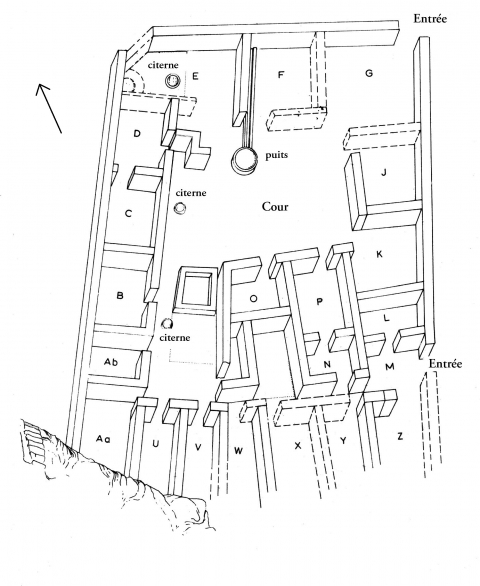
Case Study #3: “Women and the Production of Ceremonial Textiles: A Reevaluation of Ceramic Textile Tools in Etrusco-Italic Sanctuaries” by Gretchen Meyers.
Gretchen Meyers uses the presence of textile tools at ancient religious sites in pre-Roman Italy to offer a re-evaluation of women’s roles in these sacred centers. First, Meyers argues that ceramic textile tools, including spindle whorls, spools, and loom weights, should be seen as a shorthand for female involvement at an ancient location, due the gendered nature of textile work in ancient Mediterranean society. Meyers then looks closely at sacred sites in the Etrusco-Italic ancient world, using the presence of textile tools and artistic evidence to reveal local interconnections between textile work, gender, and religion. In particular, Meyers analyzes votive deposits at the Etruscan sanctuary of Poggio Colla, noting first the presence of fine gold wire typically used to make ceremonial textiles. The ritual aspect of their depositing, in addition to the pronounced prevalence of textile tools at the site (as of 2011 consisting of 97 loomweights, 153 spindlewhorls, and 83 spools), points to the likelihood that women were closely involved in the production of sumptuous textiles that were intended be offered to the resident deity on special occasions. Rather than being found in a centralized presence around the altar, as was common for other votive materials, textile tools were discovered in numerous discrete spaces. In some cases, the tools – many of which are known from their weight, fabric, and design to have been associated with fine cloth – would have marked places of production, though tools utilized in the manufacture of ceremonial cloth may have been viewed as fitting gifts to the deity. Regardless, their distribution suggests that the women who produced textiles in the acropolis would have been highly visible and have received community affirmation. Similar findings in other Etrusco-Italic sanctuaries suggests not only that the deity at Poggio Colla would most likely have been female, but also that Etruscan women played a far more robust role in temple complexes than was typical for other ancient Mediterranean societies.
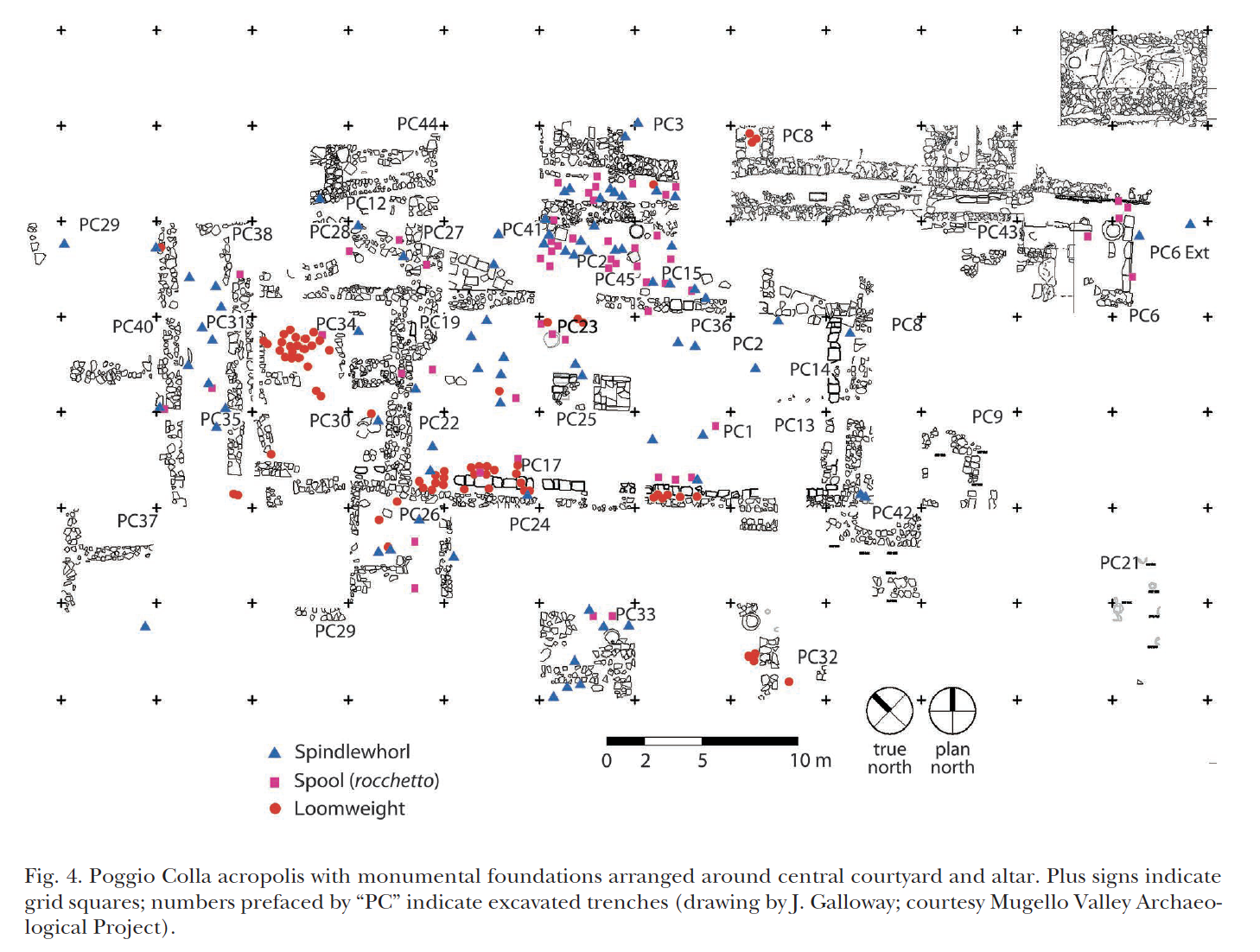
Case Study #4: “Arachne’s Web: Women, Weaving, and Networks of Knowledge in the Bronze Age Southern Aegean” by Joanne Cutler
Joanne Cutler’s article tracks the adoption of the warp-weighted loom, which is identifiable in the archaeological record from its stone loom weights, to determine how knowledge of innovative techniques transfers within a private sphere. Learning a skill like weaving required a firm basis in one’s own community, with consistent access to a mentor for between five and ten years. Depending on the loom technology, weaving would require learning different coping skills from an early age, such as being able to stand for extended periods of time with the warp-weighted loom. Through repetition, children would learn to be comfortable in these positions the same way that they would adjust to their native language or culture. However, with the introduction of a new form of technology, like the warp-weighted loom in the Southern Aegean, children would no longer be able to learn these skills from their parents and would instead have to find an immersive practice environment among peers of the same generation. As such, Cutler notes that novices would either have had to travel to learn for an extended period of time from an expert in an area proficient in the style or skilled craftswomen would have had to travel and teach in these adopting communities. Thus, these women, whether novices or skilled teachers, must have had to travel. Since new students were not taught these practices from a young age, the particularities of practice would come less easily, or indeed students would have to unlearn their previous habits. Nevertheless, once the generation bearing the new advancement was proficient, skill transmission would become vertical again, being passed down from mothers to daughters.
Case Study #5: “Housewives, Chosen Women, Skilled Men: Cloth Production and Social Identity in the Late Prehispanic Andes” by Cathy Lynne Costin
Cathy Lynne Costin’s study of pre-Columbian Incan textiles from the Late Horizon period investigates the complex relationships between labor, gender, and empire in the Inca empire. The Inca textile industry was predominantly female and had four categories of workers: commoner women, noble women, specialized women, and specialized men. There were three main styles of clothing (State Inca, Provincial Inca, and hybrids) and two categories of textiles (course and fine). Coarse plain-weave textiles were produced by commoner women to make commoner and soldier clothing. As the Inca empire expanded, colonies were forced to pay large amounts of tributes in course textiles. Commoner women in the colonies thus had their production increased by 300 percent, all without compensation (such as men received in beer while participating in state work projects). Fine textiles used in State Inca-style tunics were produced by noble women and specialized men and women, and their designs featured grid patterns, the most complex of which were only decipherable among the elite. Thus, state-enforced dress codes, which mobilized a majority female labor force, served to visually distinguish the imperial elite, bureaucrats, and commoners.
Case Study #6: “Women's Work and Women's Myths: Mothers and Children on Ivory Looms” by Susan Wood.
Women of all social classes wove, but for different reasons and on different qualities of loom. Susan Wood examines the depiction of ancient Roman myths concerning childbirth and motherhood on ivory plaques that decorated hand looms owned by especially elite women at sites like Pompeii and Ostia. The fact that these mythic themes were engraved on the quintessential symbol of Roman femininity prompts Wood to argue that a close relationship existed between women’s social expectations, Roman mythology, and textile labor. Since these women would have completed textile work as an extra activity to pass the time, rather than as a means of income, serviceable looms could double as items of display and contemplation. Wood suggests that their decoration likely offers a privileged glimpse into the tales that women told (or the songs they sung) to amuse themselves and – more profoundly – to prepare the unmarried in their midst for the roles society expected of them. For example, one such depiction illustrates the myth of Demeter, the goddess of harvest and agriculture, and Persephone, her daughter, in which Persephone is carried off and raped by Hades, the god of the underworld (see below). When Demeter challenges the abduction, the decision is made that Persephone will spend her winter months in the underworld with Hades and the remaining period on earth with Demeter. Wood notes that Persephone’s story embodies the rites of passage associated with all Roman women’s lives, including the separation of mother and daughter when a young woman is married off. This traumatic and jarring experience, suffered by girls and women in the Roman world as a fact of life, is then showcased upon yet another symbol of female confinement and expectation — the loom. Other images of mythic protagonists like Aphrodite, Semele, and Dionysus, evoked “the pleasures of wine along with those of love,” but, even more emphatically, myths that related the harrowing perils of childbirth for both mother and infant. Drawing on anthropological observation, psychology, and a rich array of artistic and literary evidence, Wood argues that the intertwining social messages that these looms bore allows for a deeper understanding of the confines of femininity in the Roman world and the tales women told among themselves to help conceptualize and confront the challenges that awaited them.

Ethnoarchaeology and Taskscapes
Archaeologists who practice ethnoarchaeology observe living peoples in order to inform their understanding of the archaeological record. Such scholars draw upon written ethnographies, participant-observation, and evidence for how material objects are utilized in living communities to widen their perspectives on the variety of ways humans choose to structure their society, economy, and environment. Ethnographies are concerned with describing both individuals and cultures from accurate ontological perspectives, highlighting, for example, foodways (engagement with foods), taskscapes (a vague space that holds related tasks), social and political structures, and ritual and spiritual practice. Ethnoarchaeology is especially generative as it draws upon temporal and geographic variation to elucidate societal practices that are otherwise invisible in the archaeological record. Comparative ethnoarchaeology can also problematize paradigms that present gender as determined by biology and gendered roles and activities as invariable in their scope.
How might ethnography be used to complicate assumptions about gendered labor in the past?
Archaeologists often introduce present biases regarding the relative importance of male and female labor into their reconstructions of the past. Such biases, however, often fail to consider the plurality of ways in which past societies operated. While the process of drawing ethnographic parallels to explain patterns observable in the archaeological record can be deeply problematic, ethnographies, at their best, can problematize the notion that the “common sense” explanations of modern archaeologists hold explanatory weight. They suggest that human societies adopt numerous strategies and social logics where gendered labor is concerned and have always done so.
Case study #1: “The Organization of Male and Female labor in Foraging Societies: Implications for Early Paleoindian Archaeology” by Nicole Waguespack
Nicole Waguespack seeks to destabilize the prevailing scholarly belief that in Paleoindian society a division of labor existed that resulted in female gatherers and male hunters. She does so by drawing on cross-cultural ethnographic comparisons of various hunter-gatherer societies. Specifically, she looked at the ratios of time that females allocated to different subsistence activities. She found that females in societies that placed a priority on meat allocated most of their time to processing meat and aiding in the technology to hunt it. Conversely, females in societies that depended primarily on plant protein spent most of their time gathering and processing plants. Therefore, while labor divisions may have existed within foraging groups, no clear-cut gender binary in subsistence strategy can be posited.
Case Study #2: "Gender, Farming, and Long-Term Change Maya Historical and Archaeological Perspectives" by Cynthia Robin
Cynthia Robin’s study investigates engendered experiences and division of labor at Chan Nohol, a cluster of farmsteads located in west central Belize. Robin uses ethnographic and ethnohistoric data, and analyses of soil chemistry and paleoethnobotany to determine whether agricultural work was divided along gender lines. At Chan Nohol, different task-related spaces are located in close proximity to one another, suggesting that labor was more frequently shared than divided by gender. Robins infers that maize processing occurred in the fields rather than within the house, since glumes were found exclusively in the farming beds. By contrast contemporary Yucatec communities usually process maize inside the home, physically separating the outdoor, traditionally male farming activities from the indoor, traditionally female domestic work.. This implies a more collaborative environment at Chan Nohol, and a labor experience less traditionally divided by gender. Studies of the spatial organization of Chan Nohol, analyses of soil chemistry and paleoethnobotany, materials, and artifacts strongly suggest that both domestic and nondomestic work was conducted by people of all genders and ages.
Case Study #3: "Making Space: Women and Ovens in the Iron Age Southern Levant" by Jennie Ebeling
Jennie Ebeling’s integrations of ethnoarchaeology and ethnography in her 2022 paper push against reductive generalizations that characterize discussions of ovens in Iron Age Levantine domestic spaces. Building off Aubrey Baadsgaard’s studies of oven size and position within these sites, Ebeling emphasizes the inconsistencies in the ethnographic and archaeological data used to explain specific features of the ovens. Baadsgaard’s work illuminates the spatial associations of ovens, both indoors and outdoors, with other artifacts which suggest that “cooking occurred in concert with other domestic tasks.” Items associated with textile production (loom weights, spindle whorls) and food preparation (grinding implements, ceramic storage and cooking vessels, storage bins) found in close association with ovens support her assertion that “ovens rather than walls define areas of specialized domestic activities in these houses.”
Case Study #4: "The Tabun and its Misidentification in the Archaeological Record" by Jennie Ebeling and Misael Rogel
Jennie Ebeling’s 2015 paper details the breadth of variability in the form and usage of Levantine ovens (tawabin), which are present in the ethnographic record of 19th and 20th century West Asia, alongside the large space and fuel accommodations which a tabun demands. The authors highlight cases where the modern Palestinian tabun form is used, anachronistically and with poor justification, to explain the remains of Iron Age ovens. She suggests this (and other) generalizing is thanks to “a well-entrenched disinterest in domestic archaeology—that is, the archaeology of venues in which women were most likely to leave tangible traces.” She incorporates Bradley Parker’s ethnoarchaeological study of internally heated tannaneer and tandirs in Southern Anatolia to support her idea that women’s creativity in positioning and erecting permanent ovens inscribed the personal preferences and demands of individual women onto domestic spaces. As in the present day, women’s agencies in locating and erecting clay ovens embedded the material record with (uniquely well-preserved) evidence of the social worlds these expert laborers inhabited, as well as the embodied actions of the individuals who designed and built these spaces.
How can we use ethnoarchaeology to understand taskscapes and craft production?
In the case of craft production, ethnoarchaeology allows for a comparative analysis of materials, material creation, and usage methods across time and space. Craft production involves the sourcing of materials or ingredients, the act of creating a product, and the transmission of knowledge required to engage in production. Craft production permeates society and ethnoarchaeology helps elucidate how, when, and if certain aspects of craft production are gendered. The spaces in which crafts are practiced are particularly interesting as they often provide information about which tasks were combined and who might have worked together in the same space.
Case Study #1: “Gendered Taskscapes: Food, Farming, and Craft Production in Banda, Ghana in the Eighteenth to the Twenty-first Centuries” by Amanda Logan and M. Dores Cruz.
Three interrelated tasks of farming, potting, and cooking make up the Banda taskscape. The taskscape is temporally bound, defined by farming seasons and daily tasks, which are interrelated. Technology, such as the modification of pots to provide for easier grinding in food preparation, may allow certain key tasks to be completed quicker, but then time is reallocated to other daily tasks. Social structures define the temporality of the taskscape as well, with men responsible for certain aspects of farming and women responsible for domestic tasks (while also filling in any gaps that men might leave according to the seasonality of farming). If women need to source food instead of men, they will pick a more flexible crop like cassava in order to reallocate time from farming to craft production. With time not spent farming, young girls may be taught to create small pots, allowing them to practice both potting and cooking. If men are not present or a particular farming season is poor, women will shift into male labor roles, displaying a fluidity in gendered labor divisions. Thus, necessity and the bounds of the taskscape allow the Banda, and likely other social structures as well, to redefine gendered labor practices.
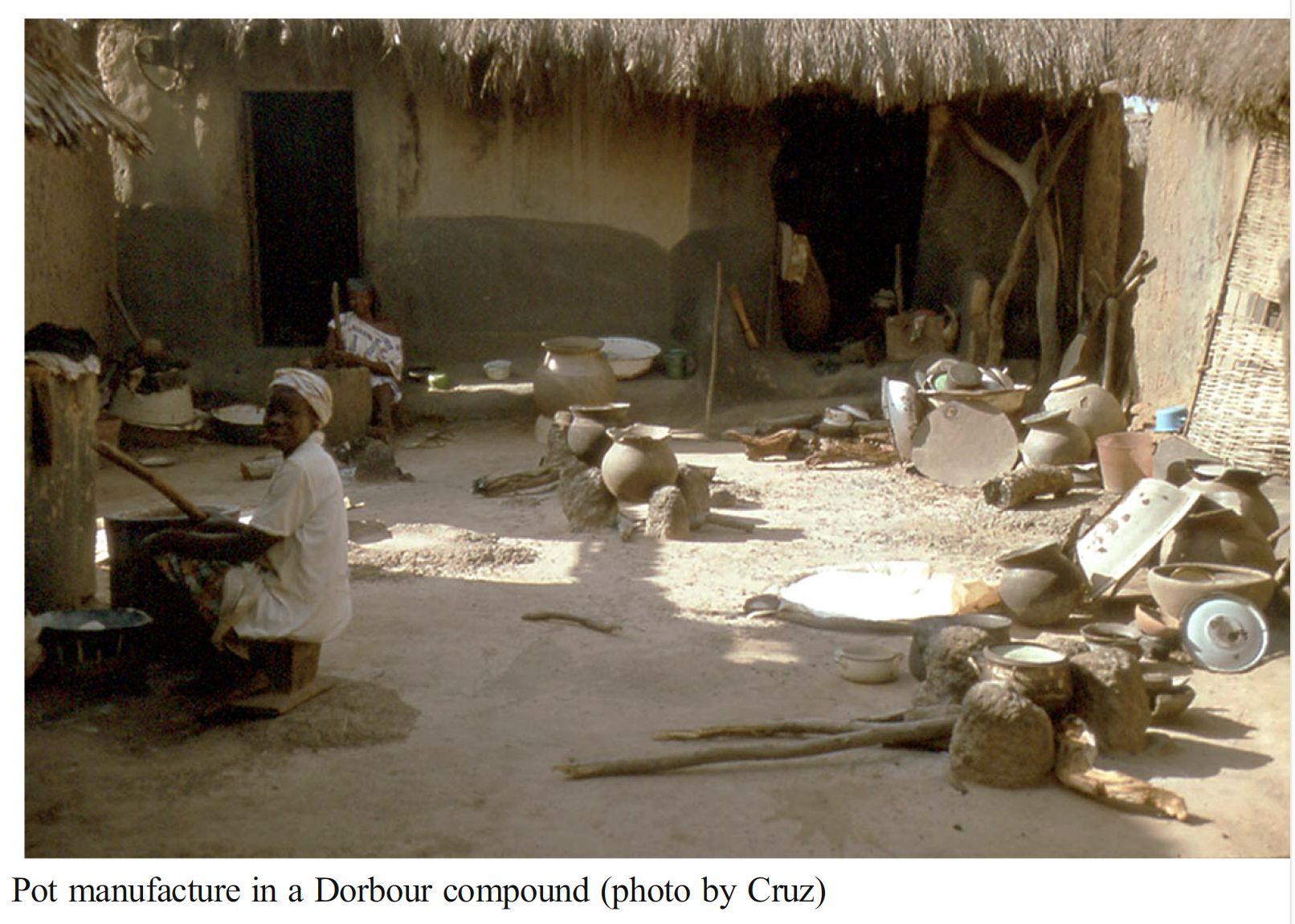
Case study #2: “Textile Production as Craft in Mesoamerica: Time, Labor, and Knowledge” by Julia Hendon
Julia Hendon proposes that textile production in Mesoamerica should be seen as a craft rather than a form of labor. She argues that Mesoamerican textile production is consistently gendered, but that does not mean the body of knowledge remains exclusive to the realm of women. Production knowledge and textile practices are transmitted through generations. The Codex Mendoza depicts Aztec girls beginning their weaving training at a young age. As the girls grow up, they take on new responsibilities: at five years old they learn to hold the spindle, at age six, they start spinning, and, later on, they start weaving. Like in the past, contemporary weavers still use this gradual method; backstrap looms are scaled-down, allowing girls to participate at a young age. Yet, textile production is not exclusive to women. Past archaeological data, such as spindle whorls found in Postclassic Mayan burial sites, suggest that families are brought into the production process. Production is connected to the household; grandparents, husbands, neighbors, and children all participate in the process—even if they were not “weavers.” Thus, textile production is tied to the household, rather than to gender and should be seen as a collective process rather than a strictly gendered one.
Case Study #4: “Women Growing Older in Deir el-Medina” by Deborah Sweeney.
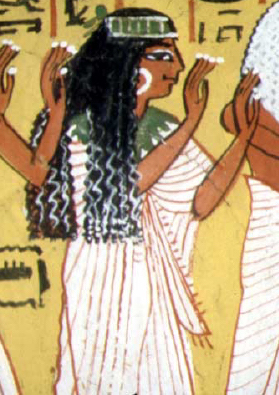
Deborah Sweeney notes that scholarship on the elderly and aging population in ancient Egypt is limited and rarely considers women. In order to answer the question of how post-menopausal women supported themselves or contributed to the support of their families, Sweeney examines the economic possibilities for women and then analyzes the taskscapes and requirements for these roles in order to determine whether or not they would have allowed for participation by the older female population. Sweeney focuses on jobs typically held by women in Egypt – such as cloth manufacturing, trading, midwifery, and religious activities. By breaking down each requirement for a given task stage, she analyzes how or why older individuals might thrive or struggle. Considering the required knowledge and skill needed for tasks like weaving or bargaining, she suggests that these jobs may well have aptly suited older women. However, considering the physical requirements of work like childcare, midwifery, or religious performance (nimble fingers, adequate eyesight, and/or ability to nurse) and also time commitments (intermittent with possible moments for breaks, or continuous), she posits that these might have been more difficult, especially for elderly women. Sweeney successfully paints a portrait of how women’s social and economic lives may have changed in Deir el-Medina as they aged, through the breaking down and analysis of their profitable tasks and physical taskscapes.
Mortuary Archaeology
Burial data allows insight into the idealized social relations of a culture, especially those related to both gender and social status. Whereas the archaeology of domestic spheres and settlements reflects the everyday life of individuals, mortuary archaeology helps to unearth a culture’s symbolic and ideological perception of gender and class.
What can grave goods tell us about gender roles?
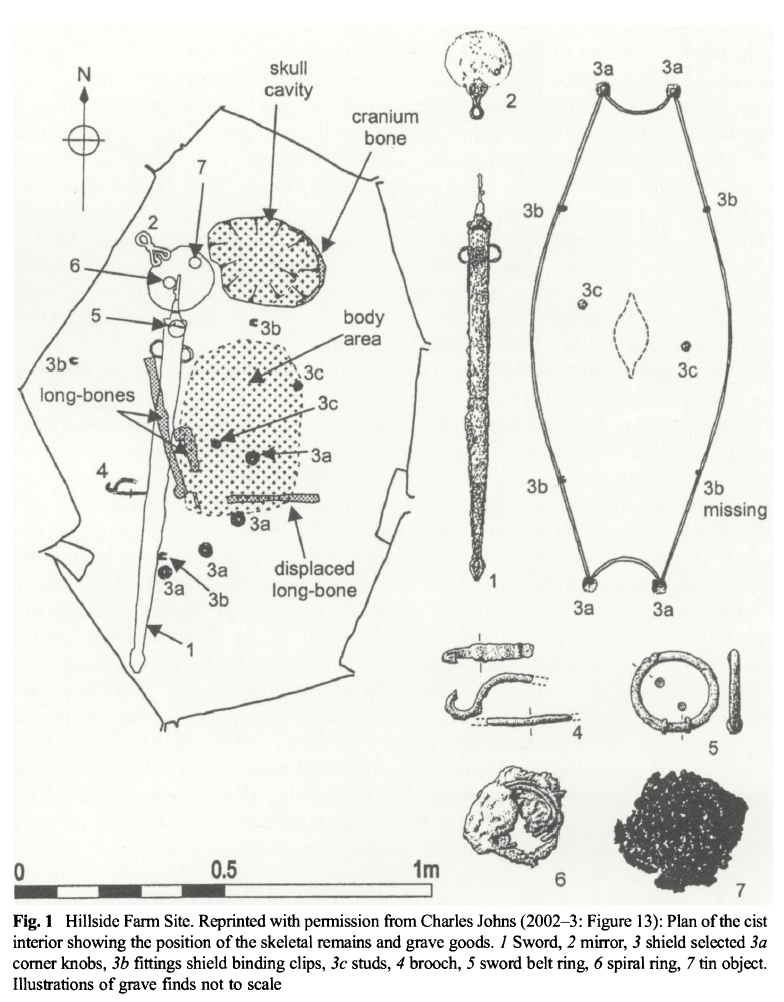
Grave goods are challenging to interpret. Sometimes the logic behind their choice seems to have been determined by the cultural perception of the afterlife. Often, however, mortuary provisions speak to gender in that they showcase one or more social roles that those who buried the deceased felt it proper to commemorate. The presence of contemporaneous distinct burial programs often suggests that a culture was marked by a strong gender binary in life as well as death. In pre-Christian Inuit culture, however, a comparison between gendered mortuary goods and the biological sex of the deceased demonstrated that gender and sex were only loosely associated. According to Meghan Walley, this lack of emphasis on gender in death thus likely reflected a society in which substantial overlap occurred between masculine and feminine spheres.
Indeed, grave goods and burials are perhaps most often tailored to individual and intersectional identities, such as age, social standing, occupation, ethnicity, and other cultural markers. Such internal variation between either males or females suggests that attempts by early archaeologists to divine biological sex from associated artifacts were often flawed. In the Early Iron Age cemetery of Tell es-Sa’idiyeh, in modern day Jordan, for example, John Green found that daggers and knives were most frequently associated with male burials. Despite this overarching pattern, however, they appeared in a number of high ranking burials that were only later determined to be female. In Iron Age Britain, on the other hand, Alexis Jordan found that very strong patterns emerged in which males were buried with swords while females were buried with mirrors. In at least one case (see the accompanying image), however, an individual had been interred with both a sword and a mirror, perhaps in acknowledgment of their status as a nonbinary member of the community. Such suppositions are by no means certain, however, and Bettina Arnold has critiqued scholars for resorting to assigning rich non-gender-conforming individuals to a third gender (such as a "transvestite priest" in the case of the Vix Burial) rather than allowing for the possibility that a cisgender woman had achieved an exceptionally high social status.
Case Study #1: “Female hunters of the early Americas” by Randall Haas, James Watson, Tammy Buonasera, et al.

Received wisdom holds that prior to the adoption of agriculture, males hunted and women gathered. Recent studies of grave good assemblages have led to the theorization that such divisions among historic hunter-gatherers should not be projected onto the past. A 9000-year-old Andean highland burial is just one of the recent finds that problematizes this notion. Analysis of the deceased’s femur reveals that they were of slender build, allowing them to be identified as a 17–19 year-old female—an assessment that is supported by the individual’s tooth enamel. Among her grave goods was a hunting tool kit consisting of stone projectiles and animal processing tools, indicating to the authors that the deceased had been a hunter. Chemical analysis of her bone along with faunal data indicate that she subsisted on a mixed plant and animal diet, presumably consisting in part of animals she’d hunted. While this burial might be thought of as an isolated incident of female hunting, the authors’ review of 27 late Pleistocene and early Holocene graves associated with big game hunting tools revealed that eleven of these individuals were female—a sufficient sample to suggest that female participation in early big-game hunting was much more significant than the “man-the-hunter” model suggests.
Case Study #2: “Burial Practices” by Robert and Rosa Procelli
In their analysis of a much older excavation of Late Bronze Age and Early Iron Age tombs at Pantalica, for which skeletal material had not been preserved, the authors found that associated artifacts were the only avenue open to them to assess whether a tomb was likely meant for individuals gendered male or female. The authors begin with a discussion of spindle whorls as indicators of a female burials in Sicily. At Pantalica, there were only two spindle whorls from this time period. In addition, in one of these tombs, “the only other metal [artifact] is a razor, more often considered a ‘male’ [artifact].” In tombs dating to the Early Iron Age, “there are six single inhumations with a spindle whorl, including the numerically richest tomb in the group, which had an askos, cup, three serpentine fibulae and two rings … These could be female depositions in which the combination of a spindle whorl and rings was recurrent” (39). In Late Bronze Age and Early Iron Age Sicily, artifacts traditionally associated with men are somewhat difficult to identify, as combat weapons and blades were used by both males and females. The authors conclude by stating that the varying degrees of abundance and poverty visible in each of these tombs appears not to be predicated on gender; the distribution of valuable goods was relatively equal between males and females. Surprisingly, the wealthiest female tomb in the corpus had three serpentine fibulae, which were typically associated with men in the rest of Sicily but were associated with women in Minoan artwork.
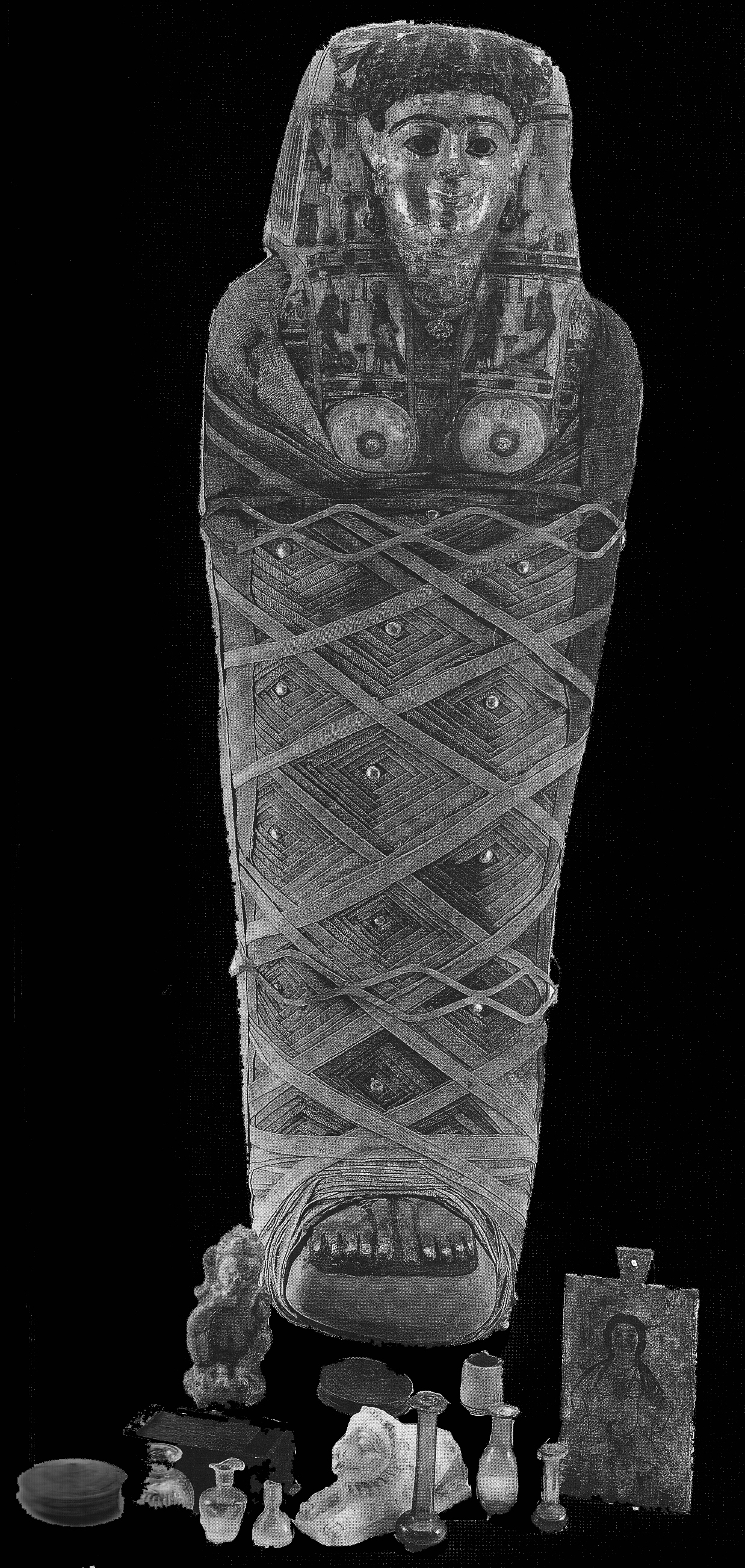
What can grave goods tell us about the relationship between age and gender?
A mortuary culture in which a strong gender binary is present may also reveal the relationship between age and gender roles. If a sub-adult (as determined by bioarchaeological analysis) is found to be buried with a distinct gendered grave-good assemblage, this may reveal the age at which gender identity was imposed through culturally specific rights of passage. So too, it may indicate an aspirational maturation, perhaps for the purposes of rebirth, such as Christina Riggs posits in the case of a young girl in Roman Egypt whose image on her sarcophagus included the breasts of a sexually mature woman. (The mummy at right belonged to a seven-year-old girl).
What can changes in grave good assemblages tell us about the changing role of gender norms?
The change in gender associations of mortuary materials offers insight into the evolution of gender norms. In Bronze Age Mycenae, Kristin Leith found that the gendered dichotomy of grave goods increased over time. While warrior paraphernalia had sometimes appeared in women’s grave goods in the Middle Helladic and Early Mycenaean Phases, no such materials were deposited in female graves in the Agora and Asporpilia Palatial and Late Mycenaean Phase burials. The increasingly circumscribed gender categorizations of mortuary culture suggests that the concepts of masculinity and femininity also changed in Mycenaean society at this time.
Case Study #1: “Machiavellian Masculinities: Historicizing and Contextualizing the ‘Civilizing Process’ in Ancient Egypt” by Ellen Morris.
Ellen Morris traces the evidence for burials of armed men in Egypt over roughly two millennia c. 3500-1500 BCE) and concludes that hegemonic masculinity varied along with the strength of the central government. During periods when the state was weak or nonexistent, burials of men with daggers, axes, and other weapons were far more common than during periods when the pharaonic state was strong, suggesting that conceptions of manhood oscillated between an irenic ideal and a more violent counterpart. Drawing upon comparative case studies and advice given by Niccolò Machiavelli to his prince, she argues that rulers actively promoted the type of masculinity that best served their purpose. (Machiavelli had recommended that princes should disarm conquered populations, except for elite collaborators. Regarding such men, however, he added “These, too, it is necessary to render soft and effeminate, in time and with opportunity.”) To an ambitious local ruler engaged in enlarging his core territory, it was beneficial to appeal to and to encourage ideals of valor among potential soldiers and supporters. Once peace had been established, however, violent masculinities proved disruptive. Morris argues that pharaohs and their advisors, like their counterparts in other autocratic regimes, likely employed specific strategies to neutralize potential competitors and transform aristocratic warriors into courtiers and bureaucrats. These included separating powerful men from their powerbases and gathering them at court, lessening opportunities to enhance honor through violence (or rendering them distasteful), refocusing their drive for recognition and honor, and encouraging a reverence for hierarchy as well as the cultivation of “feminine” traits like diplomacy and de-escalation.
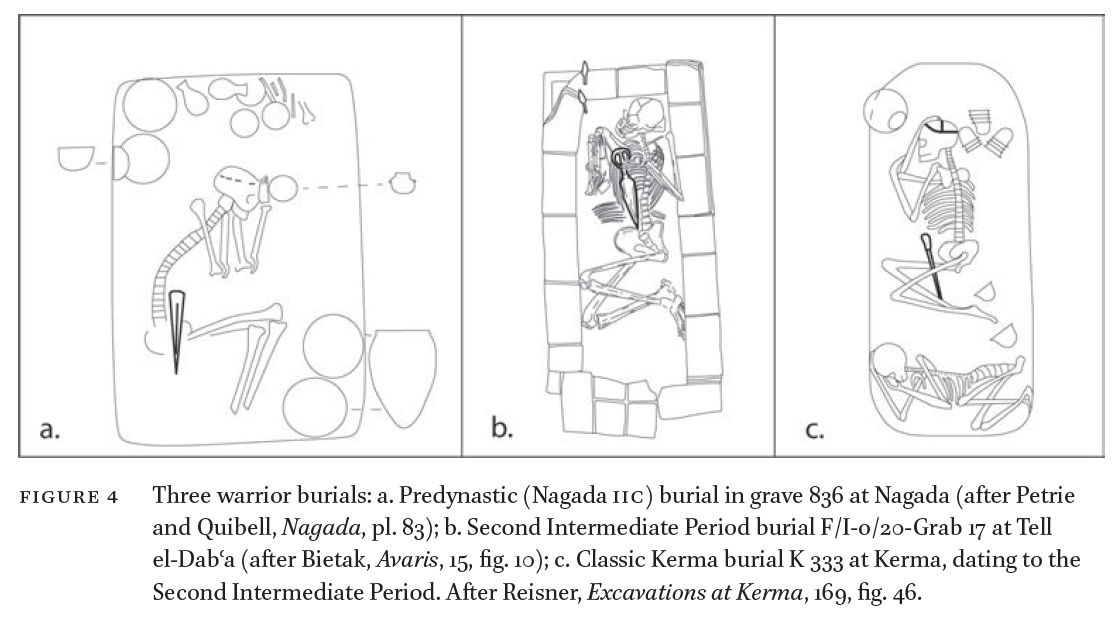
What can grave goods tell us about gender across different social groups?
As discussed above, the deliberate nature of grave good assemblages provides insight into the identification and status of the deceased. Because of this, one can evaluate the ways in which the expression of gender status differed between various social strata. The differences in grave good assemblages across socio-economic lines is in part due to access to the disposable income necessary for a highly elaborated mortuary culture. However, contrasting grave goods can also hold symbolic and ideological value, highlighting the gender ideals of that class. Thus, it is important to study and compare both elite and lower-status burials so as to determine the distinct gender ideals present in different social groups.
Case Study #1: “Expressions of Gender in Mortuary Behaviour from Middle Helladic and Mycenaean Burial Samples in the Aegean” by Kristin E. Leith.
In ancient Mycenaean society, a disconnect between status and gender is visible. In the elite burials from the Early Mycenaean Period to the High Mycenaean Period, gender became more binary and polarized as time progressed. With few exceptions, weaponry was associated with male graves, while female identity was at first signaled especially by artifacts associated with textile manufacture and also particularly with objects of adornment. Conversely, during the same period of time the gender delineation in mortuary materials of lower-status graves declined, suggesting a diminishment of the gender binary. Thus, the gender ideology of Mycenaean elites followed a different progression than that of the non-elite population.
Case study #2: "“Mourning on the Larnakes at Tanagra: Gender and Agency in Late Bronze Age Greece” by Margaretha Kramer-Hajos
Margaretha Kramer-Hajos analyzes the larnakes of Tanangra, terracotta coffins from thirteenth century Mycenaean Boeotia. These richly decorated objects provide profound insights into gender roles in mourning and burial rituals in the Late Bronze Age. The conventional understanding of mourning rituals in ancient Greece is often divided along gender lines: women were typically associated with emotional expressions, such as wailing and self-harm, and men were thought to exhibit stoicism and preside over burial ceremonies. By virtue of her reanalysis of the larnakes’ categorizations—based on style elements and the construction of the larnax—Kramer-Hajos argues against this gender binary and claims that death rituals are an example of female agency. Based on her new classifications, Kramer-Hajos demonstrates that gender roles in mourning are not as static as earlier analyses assumed. The ritual processes of wailing and self-harm, for instance, were not restricted to women. Furthermore, by analyzing the clothing and associated objects of figures previously theorized to be priests, she hypothesizes that women held more prominent roles in leading mortuary rites than previously assumed. The spatial arrangement of gendered figures on the larnakes also provides valuable insights. Men and women tend to be on separate panels on the larnax, and when the larnax depicts a burial, women are placed in closer proximity to the corpse. Kramer-Hajos concludes that mourning ceremonies were gender segregated and that women had a more significant involvement in the mourning process than previously thought. She thus extrapolates that these burials, which are of adolescents and young children, show evidence of female agency within the Mycenaean world. Kramer-Hajos ends by pointing out that the larnakes that are often published are these are the ones that affirm the basic gender roles. These choices perhaps reflect the biases of the archaeologists more than they do Mycenaean gender roles.
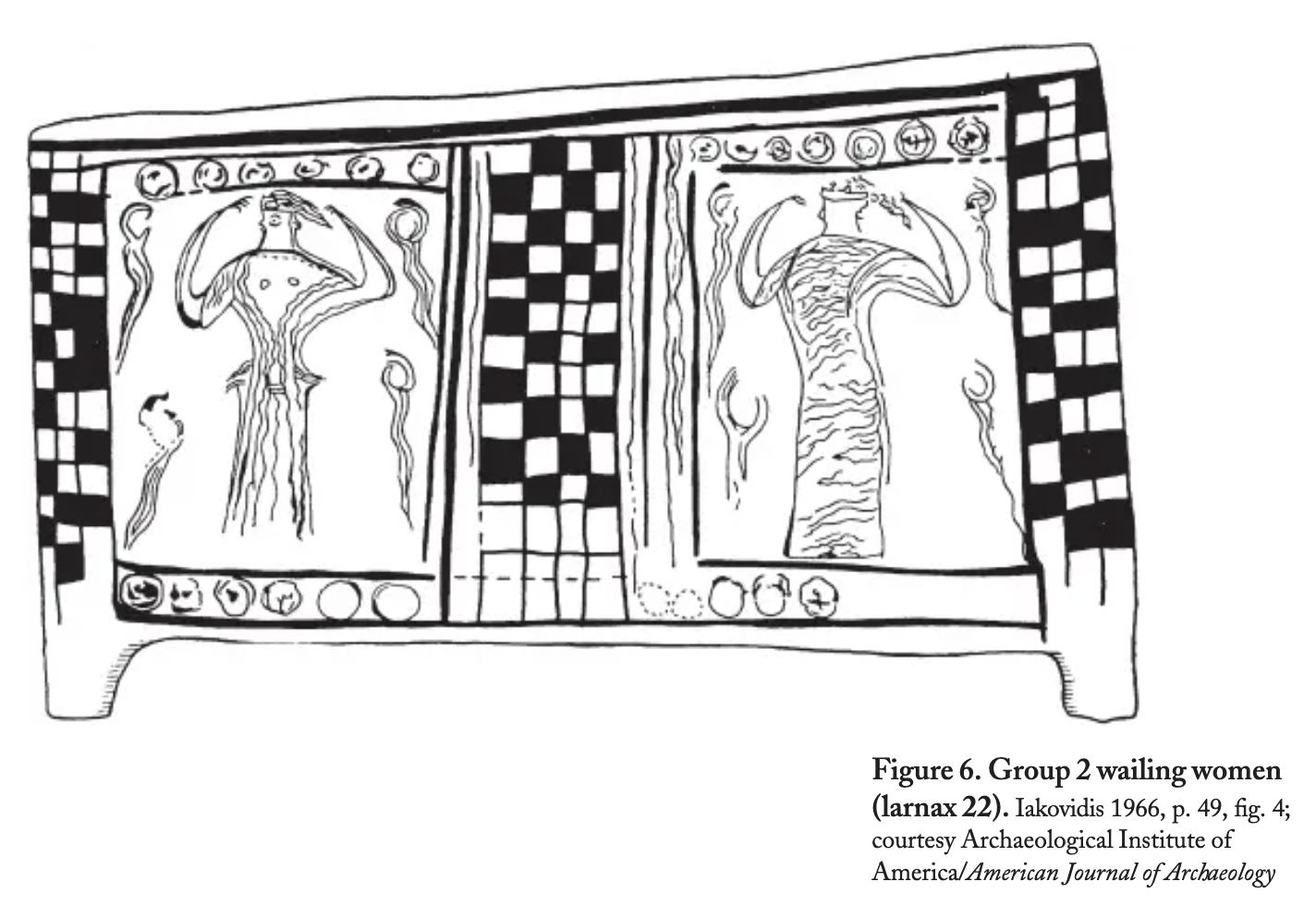
How does the type of statistical analysis used in analyzing grave goods help or hinder attempts to see past the gender binary?
Mortuary archeology often relies on the assumed binary of sex as a foundational starting point for determining the cultural behavior of the deceased during life. Due to the sheer quantity of osteological material and grave goods that archaeologists are occasionally faced with analyzing, systems of economic organization, social hierarchy, and family relations often seem hopelessly indiscernible. Thus, when confronted with diverse and exhaustive data, archeologists may resort to privileging gender differentiation as a line of inquiry. Through the binary method of univariate statistical analysis, the elusive relationship between the buried and their grave goods is analyzed according to biological sex. Filtering mortuary data through the binary preconceptions of gender, however, means the multiple intersectional factors involved in constructing identity are discarded in favor of a single, potentially reductive scope.
Case Study #1: "'Seek and You Shall Find.' How the Analysis of Gendered Patterns in Archaeology Can Create False Binaries: a Case Study from Durankulak” by Susan Stratton.
Susan Stratton sets out to dispel the use of sex-based analysis as the starting point for archeological investigation, citing alternative statistical methods of organizing material culture that better encompass the individual and social identities of those uncovered. Her critique of univariate statistical analysis is notably seen in the case of the Durankulak cemetery on the Bulgarian Black Sea Coast, where the remains of two cultural phases – the Hamangia culture, and the subsequent Varna culture – make up the largest extramural cemetery of the Bulgarian Late Neolithic and Copper age period, comprising some 1,200 burials. Despite, or possibly due to, the sheer volume of graves, the initial study categorized artifacts and body position into a binary sex-based gender structure, with any material data that fell out of the pink or blue bounds of analysis deemed inconclusive. By approaching burial analysis through a “male, female, other” method of distinction, the excavators of Durankulak Cemetery came up with indeterminate results due to the small pool of biologically sexed bodies and artifacts and the much wider array of indeterminate burials. Stratton reanalyzed the material using Correspondence Analysis as the statistical model to better understand the association between different burials and their grave goods. Correspondence Analysis frees artifacts and burials from the limitations of a gender binary, allowing for crossover across the whole breadth of identity. Using correspondence analysis in the second case study of the Durankulak cemetery, archeologists were not only able to identify a broad range of material similarities among the diverse “sexes” associated with burials, but they also uncovered patterns related to age, time period, and plot location.
Bioarchaeology
The method of bioarchaeology focuses on the study of human remains within their archaeological context and allows for unique insight into the day-to-day lives of people in a certain culture. Wear patterns of bones correspond to the repetition of tasks and are evidence of work, diet, health, disease, injury, and reproductive patterns. Bioarchaeology thus reveals the de facto role of individuals in a society (as evidenced perhaps by stress marks and trauma) in contrast to the more idealized roles portrayed by figurative art and represented in mortuary practice.
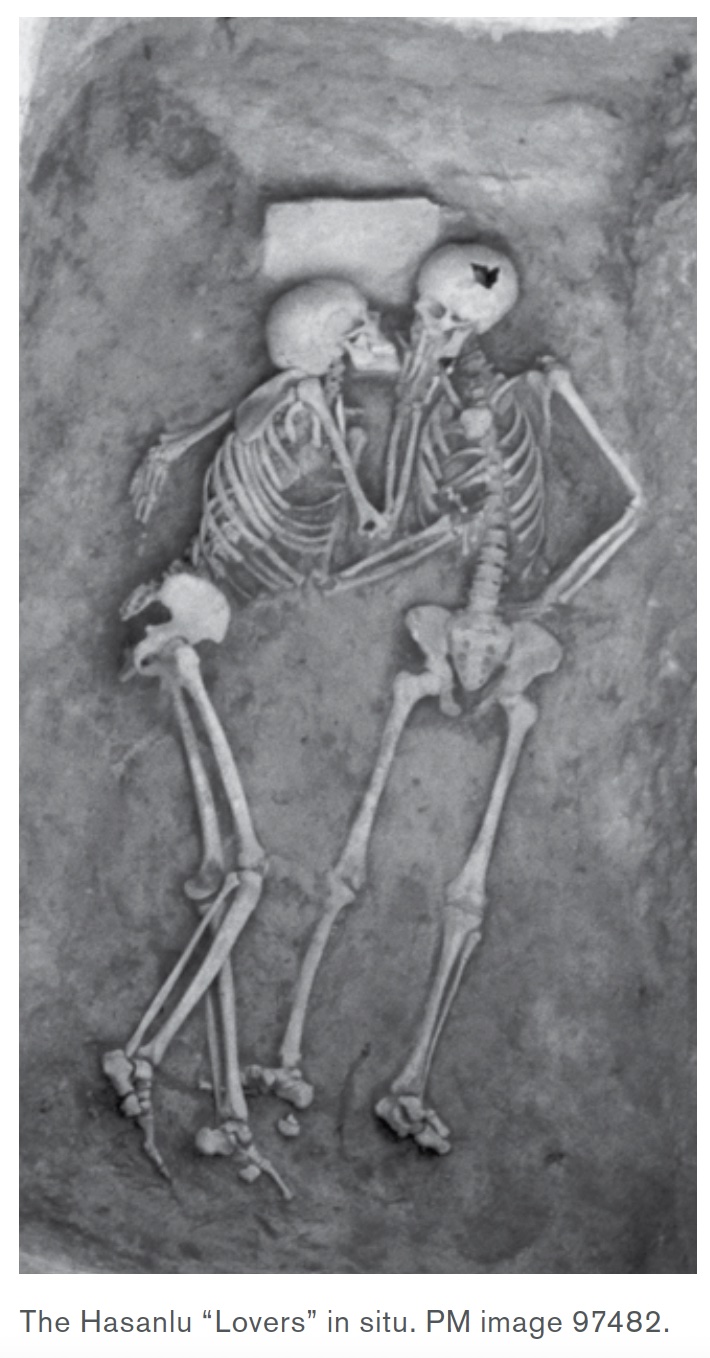
Case Study #1: “Lovers, Friends, or Strangers?” by Page Selinksky
The two skeletons look like newlyweds staring into one another’s eyes. As enemies approached their hiding place, the individual on the right must have reached out to draw their companion closer. The pose of the other suggests that they met death only after having sought a final kiss. It is little wonder, then, that the two were dubbed "The Hasanlu Lovers.” No artifacts, adornments, or possessions of any kind were found together with these individuals, who may have sought shelter together in a bin during an attack on the Iranian city c. 800 BCE. Visitors who saw them on display from the mid 1970’s to the mid 1980’s at the Penn Museum were encouraged to envision a heteronormative couple. Physical anthropology, however, suggests a different narrative. The skeleton in the seemingly dominant and protective pose is in fact younger. Based on the eruption of their third molars, they likely died between ages 19-22. Their pelvis possessed male features while their cranium was more ambiguous (perhaps due to their physical immaturity). The skeleton to the left, on the other hand, was evidently older – between 30-35 years of age and already exhibited degenerative osteoarthritis. Their cranium was deemed distinctly male morphologically, though the pelvis was more ambiguous. Assessments of sex in skeletal remains work along a scale, but all signs suggest that the “lovers” were male. The even more advanced technique of aDNA analysis has the potential to reveal their biological sex more definitively. As Page Selinksky points out, bioarchaeology allows researchers to tell less “expected” stories and thereby to reintroduce diversity into the ancient world. While it is tempting, from the seeming intimacy of their pose, to envision that the two were a couple, Selinksky cautions, “we must remember that any tales we weave about [these two individuals] say more about our enculturated perspectives than anything else.”

What can tattoos, scarification, and other bodily modifications tell us about gender?
Bodily modifications are nearly always culturally meaningful. In some cases, ethnic groups visually distinguish themselves from neighboring peoples via physical markers. Such modifications may likewise convey important information internally as to a person’s age, deeds, or occupation. Often, tattooing or scarification practices are strongly gendered within a community. Artistic and material evidence from ancient Egypt, for instance, seems to indicate that while it was the practice among Libyans for men to bear tattoos, in the pharaonic Egyptian and Nubian Nile Valley tattoos were most often associated with women. Recognizing the resonance of designs – with motifs on handmade pottery, textiles, or religious imagery – and their gendered associations is vital to any attempt to understand them.
Case Study #1: “Identifying the Practice of Tattooing in Ancient Egypt and Nubia” by Geoffery J. Tassie.
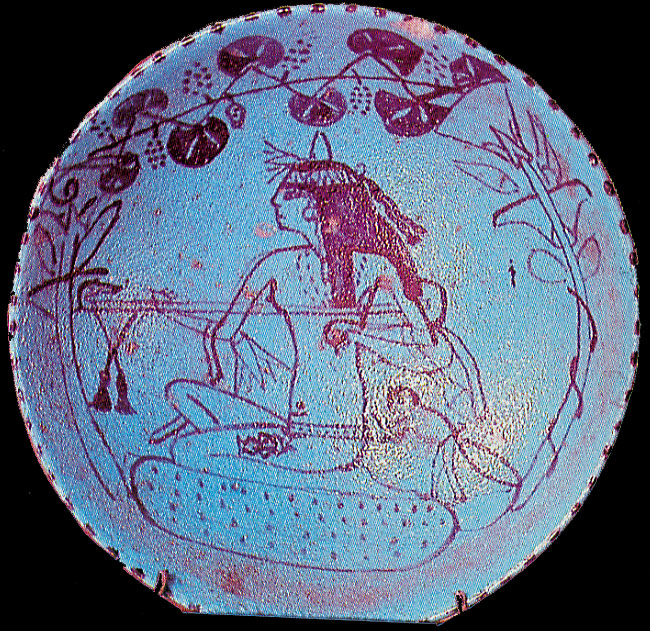
Although tattooing tools may be sparsely attested or misinterpreted as awls and sewing needles, tattooing was certainly not a rare practice in ancient Egypt and Nubia. Through an examination of human remains and artistic depictions, Geoffery Tassie identified societal and also gendered divides in these practices. While in Nubia both men and women appeared to have been tattooed, in ancient Egypt this practice seems to have been exclusive to women. The Eleventh Dynasty mummy of Amunet, a priestess of Hathor who was buried in the same small cemetery as two other tattooed Hathoric dancers, is especially interesting. Amunet, who may herself have been Nubian, sported diamond shaped tattoos on her thigh and an elliptical pattern of dots and dashes on her abdomen. Tassie makes the fascinating point that such patterns would expand and become even more prominent during pregnancy, forming a net-like design. Thigh or abdominal tattoos, in Nubia as well as Egypt, were restricted to women, and thus they may well have served a symbolic and possibly protective purpose for childbirth and fertility. Certainly, the multiple tattooed portrayals of the god Bes (the protector of all things joyous and intimate as well as of pregnant mothers and young children) on the thighs of musicians and other scantily clad women has sparked much discussion as to whether the tattoos were meant to enhance a woman’s sexuality or to protect her. Drawing on varied evidence, Tassie argues that the tattoos indeed served a magico-religious purpose, and he notes that similar tattoos have been found on Nubian and Egyptian female figurines. Clearly in Egypt as elsewhere, the placement and design of tattoos is critical in ascertaining their purpose.
Case Study #2: “Embodying the Divine: A Tattooed Female Mummy from Deir el-Medina” by Anne Austin and Cedric Gobeil.
Anne Austin and Cedric Gobeil investigate how the tattoos discovered on the bodies of certain females at the Egyptian town of Deir el-Medina intersect with our understanding of women’s roles in Egyptian magic, medicine, and religion. While tattoos known from Egypt’s Middle Kingdom were usually geometric in design, there appears to have been a shift in the New Kingdom towards figural, and often explicitly religious, imagery. Working with a mummified torso from the Theban Tomb 290 assemblage (a collection of remains that were possibly intermixed from multiple tombs but date to the New Kingdom) Austin and Gobeil identify this individual as a young woman whose tattoos across her back, arms, and even her neck display primarily pharaonic imagery. Through examining the specific designs and the placement of the tattoos, Austin and Gobeil were able to make certain assertions about who this woman was in her community and the symbolism of her tattoos. A pair of wadjet-eyes on her neck, for instance, may have served as a protective amulet and additionally suggest involvement in magic practices through speech or song. Additionally, tattoos placed on her back demonstrate that another member of the community would have had to assist in the application of these tattoos. Likewise, the fact that the tattoos were all located in places that would have been visible suggests that they were meant to be seen. Perhaps most importantly, Austin and Gobeil explain that this woman’s tattoos “linked her with the divine through Hathoric symbolism.” The question of who she was in this society – and hence who other women had the possibility of being – is answered in part by the tattoos, as they suggest that she may have acted as an agent and image of the temples of the goddess Hathor and additionally that she played a role as a magico-medical healer.

What can physical anthropology tell us about gendered labor?
The presence of an object in a burial does not necessarily mean that the role of the deceased in life was connected to that object. Patterns of work can be revealed in data such as bone density, the wearing of teeth, etc. These signifiers indicate the tasks actually carried out by the deceased in life. A comparison of bioarchaeological data with grave goods and mortuary culture, therefore, reveals the ways in which the health and activities of an individual matched or clashed with the idealized social role(s) presented by the manner in which they were buried.
Case study #1: “The Eloquent Bones of Abu Hureyra” by Theya Molleson.
Theya Molleson discusses the Early Neolithic skeletal remains from a site in modern day Syria and uses osteological evidence to better understand the daily activities of the inhabitants and the gendered tasks of the settlement. Molleson identified several ‘packages’ of bone deformities among the Abu Hureyra skeletons – the most common of which was a collapsed last dorsal vertebrae with arthritis in the first metatarsal of the foot (see the image below). These bioarchaeological markers were accompanied by findings of large grinding querns in many excavated Abu Hureyra houses. Molleson argues that the skeletal and excavation data together indicate the processing and grinding of grain, where those who ground grain curled their toes forward while kneeling and grinding, leading to arthritis and damage in the big toes. Other evidence of wear and damage on many of the bones are consistent with this theory, indicating a protracted and labor-intensive processing of grains. Molleson further realized that the suite of bone damage related to grinding was largely confined to female skeletons. This bioarchaeological study thus revealed that the processing of grains in Neolithic Abu Hureyra was a gendered job tasked to women.
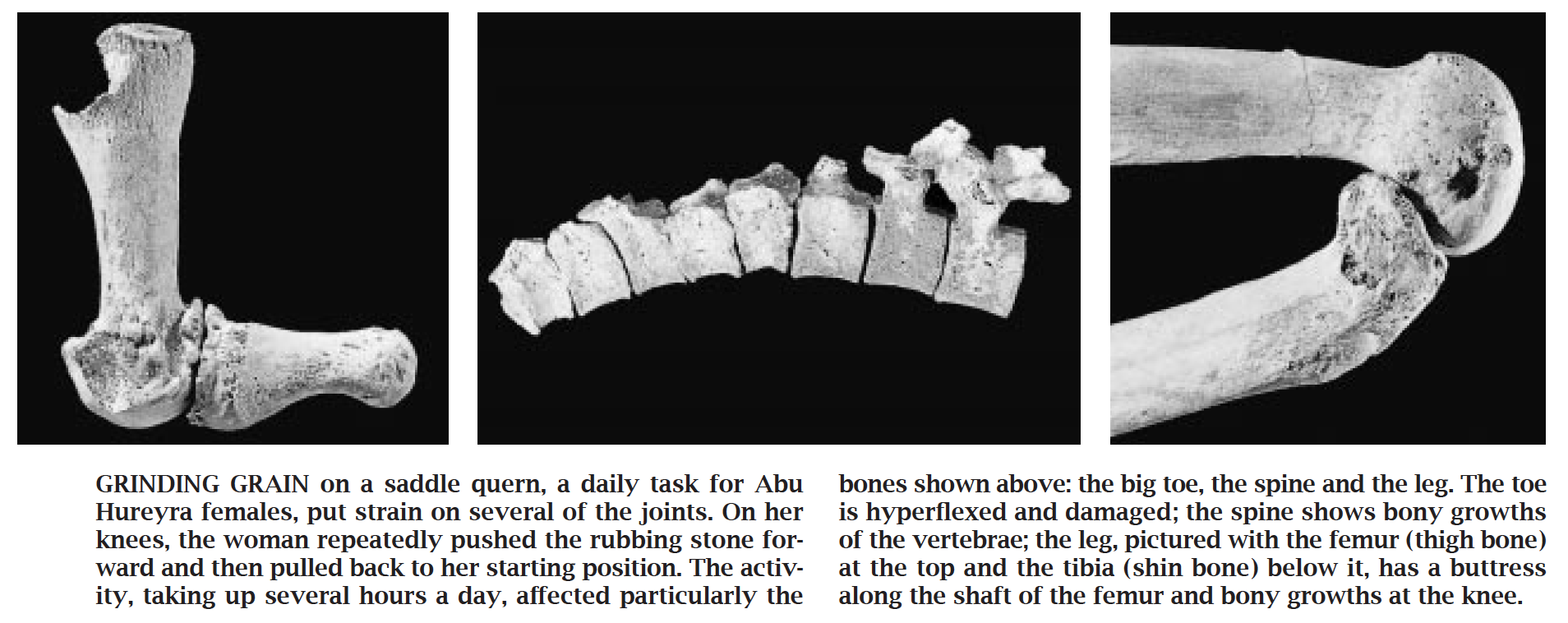
Case Study #2: “Warrior Women of the Eurasian Steppes” by Jeannine Davis-Kimball.
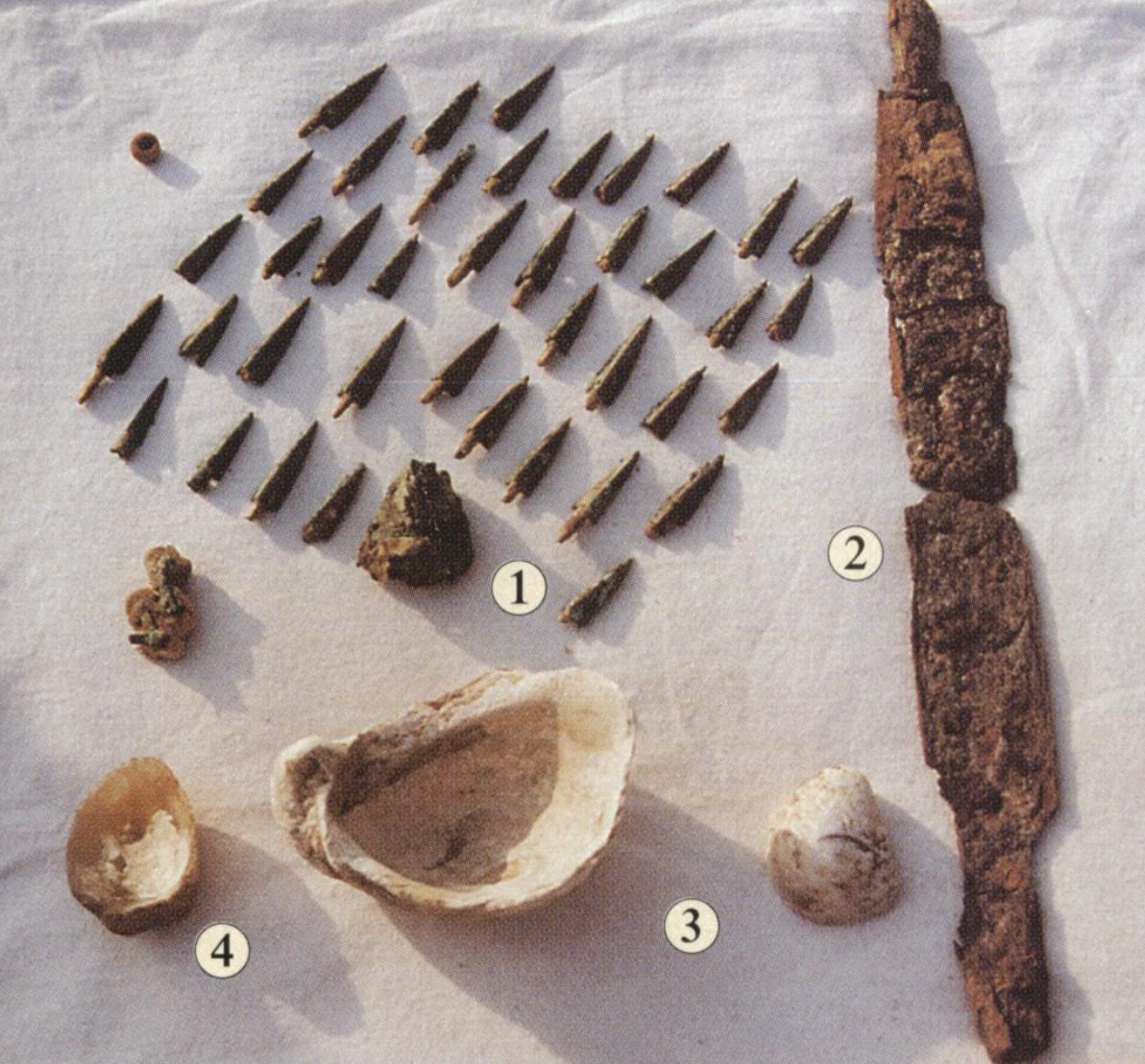
The tales of the Amazons – powerful female warriors – fascinated ancient Greek historians, poets, storytellers, and artists. Unlike well-bred Greek women, who stayed sequestered in the home, Amazons rode swift horses and held their own in single combat. Strabo doubted that they ever existed, and his skepticism has persisted into modern scholarship. Since the 1950’s, however, archaeologists working north of the Black Sea have been discovering monumental tombs dating from the 6th century BCE until the 2nd century CE that contained burials of females (sometimes as the central and most honored internment) who went to the grave armed. Russian archaeologists – happy to identify males who possessed similar weapons as warriors – tend to interpret the presence of weapons in female graves as symbolic. Jeannine Davis-Kimball and her colleagues, working in Ukraine, excavated 50 kurgans. Based on their findings, they argue that females were classified as domestic women, priestesses, or warriors. The 28 burials of domestic women contain spindle-whorls, beads, purposefully broken mirrors, and other household items. Goods left for the 5 women classified as priestesses included bronze mirrors, seashells, and remnants of clay or stone altars. The 7 remaining female burials included items such as iron swords and daggers, bronze arrowheads, and whetstones to sharpen the weapons. The work of Davis-Kimball and her colleagues is groundbreaking in that they subjected the skeletons to analysis and found that trauma patterns and habitual wear indicates that the females buried with weapons participated in the same types of activities as male warriors. For example, an adolescent girl found interred with dozens of arrowheads, a wood and leather quiver, a dagger, and a boar’s tusk amulet exhibited the bowed legs typical of a habitual horseback rider. Another female seems to have been killed in battle, for an arrowhead was bent and left in situ in her body cavity. Male internments were interesting as well, for they fell into two distinct categories. 40 burials included weapons such as swords, daggers, and arrowheads, and are assumed to have belonged to warriors. 4 males, however, shared their grave with a child and possessed no burial goods other than an occasional pot. Clearly, the steppe warriors of antiquity challenge the essentialist world views of ancients and moderns alike.
Case Study #3: The Bioarchaeology of Socio-Sexual Lives by Pamela L. Geller
Pamela Geller uses multiple archaeological and ethnographic examples of deviations from presentist sex/labor norms in order to challenge colonial thinking and demonstrate that the sexual divisions of labor that scholars have historically taken for granted are not universal. For example, Geller studied remains in the Samuel G. Morton Crania Collection, particularly on two skulls, one from the Ottawa indigenous culture and another from the Sioux. Both individuals had been identified as warriors by Morton on the basis of grave goods or local lore. The Ottawa remains had not been sexed and the Sioux remains had been sexed as male. Geller’s investigation, utilizing modern methods of analysis, finds both individuals had been female. Geller suggests that Morton’s binary understanding of gender roles influenced his incorrect conclusion that the Sioux individual was male and perhaps also his choice not to sex the Ottawa remains. Likely he could not conceive of women being warriors.
What can isotopic studies tell us about gender and nutrition?
Changes in the diet of men and women can indicate how somewhat minor changes in food affected the cultural evaluation and the practical potentials of women. We can use the isotopic analysis of bones to understand the main components of diets in community members, their differences, and what this may mean more generally for a society. For example, as Marie Louise Stig Sørensen describes in her book Gender Archaeology, an analysis done on the Incan civilization right before and during Incan control indicated an increase of maize consumption only in male skeletons. Maize is most often used in the production of beer, suggesting that this increase could be because of men beginning to participate in political public gatherings and work projects where beer was consumed. Changes in diet like this can provide ample information about evolving socio-political relations and what these changes meant for both men and women. Because the skeletons of women showed no evidence of an increase in maize consumption, it is likely that they were excluded from these gatherings and events – a situation that may have had practical ramifications for their access to social power and/or integration into the imperial economy.
Case Study #1: “No Seat at the Table? Mycenaean Women’s Diet and Health in Pylos, Greece” by Lynne A. Schepartz, et al.
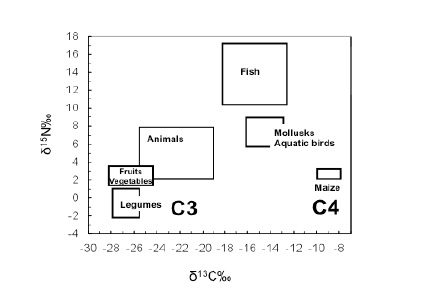
Archaeological, textual, and artistic evidence all indicate the outstanding importance of feasting in the sociopolitical world of the Mycenean Greeks. According to Lynne Schepartz, Mycenaean feasts “promoted the prestige of the palace, reified social solidarity, and reinforced the loyalty of the followers.” Some of these feasts were especially large and lavish, with hosts providing up to two tons of meat at a single meal. Being offered seat at the table, then, had literal ramifications for a person’s proximity to power. So too, the opportunity may have affected their health. In a previous article, Schepartz et al. (2008, see below) studied the dentition of individuals buried in various types of tombs at the palatial center of Pylos and had noted that women of all social classes had markedly poorer dental health than their male counterparts. Here, Schepartz supplements those findings with a study of the isotopic data from 67 individuals from Pylos. An isotopic analysis paints a picture of the dietary intake of individuals as chemical markers for certain food groups. It can reveal whether individuals were consuming higher ratios of carbohydrates as compared to lipid or protein macromolecules and the types of plants or terrestrial versus aquatic specimens that were eaten. Schepartz found that while all individuals enjoyed a high C3 plant terrestrial diet (mostly being reliant on cereals for carbohydrates and legumes as a plant protein), women consumed significantly less animal protein (lower δ15N values). Thus, Schepartz suggests that for males, participation in hunting, sacrifices, and elaborate feasts provided a pathway to physical and political power. While women appear in the textual records at Pylos primarily as slaves, archaeological and textual evidence does suggest the presence of a “Queen’s Megaron.” Even at the highest levels of society, however, if meals were separate, they do not appear to have been equal.
Case Study #2: “Large-scale isotopic data reveal gendered migration into early medieval England c. AD 400-1100.” by Sam Leggett et al.
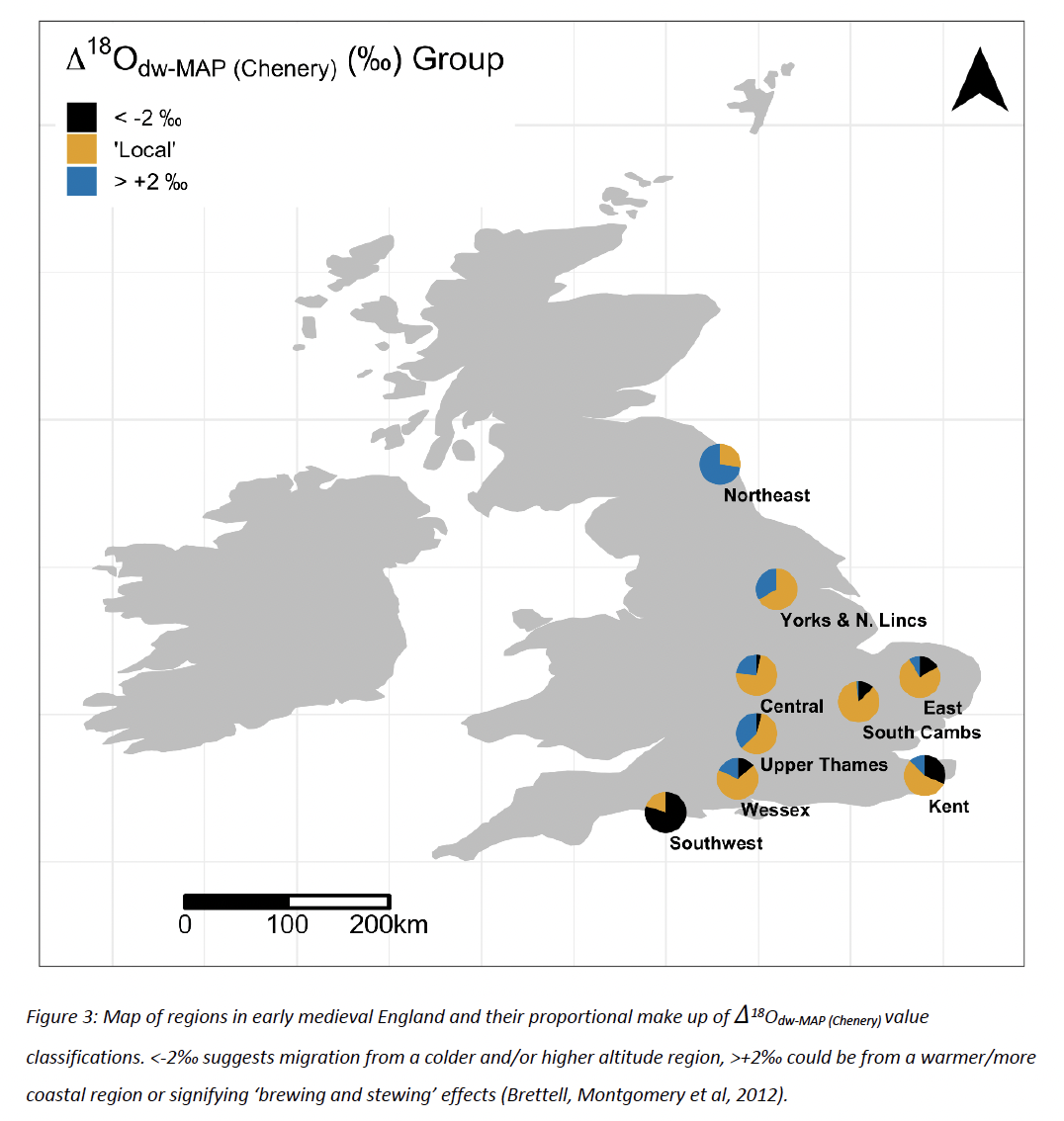
How can scholars identify migrants in the archaeological record? Often, they have resorted to material signatures – such as anomalous material culture – or to noting changes in stature. Pots do not (always) equal people, however, and stature is often related to nutrition. Sam Leggett and her colleagues, thus ask with respect to Late Antique and Medieval England: “Can we identify any migrations in post-Roman Britain, and if so, to what scale? And how does that relate to material culture expressions of identity and possible acculturation?” To attempt to answer this question they looked at strontium isotopes and oxygen isotopes in water to attempt to identify first generation migrants. Oxygen isotope analysis of teeth help scientists understand if a person grew up in a region different from the area in which they were buried, as the isotopic composition of bodily water and tissues reflect climate and geography. In their study they found notable regional variation as well as some gendered patterning. During the Roman period, although most people were local, males appear to have migrated into southern England in larger numbers than females – a factor perhaps tied to military occupation. The gender divide was less notable during AD 350-790, however, when immigrants of both sexes from northern Europe were found in larger numbers. These immigrants, however, appear to have adapted in both diet and material culture to local norms (as well as to have added to a general material heterogeneity). From the late 8th century onwards, the situation changed again and more males than females showed origins in Scandinavia, suggesting incursions of Vikings. Women, on the other hand, seem to have changed their diets at this time to include more "brewing and stewing" and beer drinking. Overall, it is important to note that Leggett and her colleagues found no suggestion of cultural separation between isotopic locals and nonlocals based on their funerary treatment or genetics. The dietary data also suggests cultural integration, “which is supported by the emergence of new and distinctive material culture with a variety of cultural influences.” Thus, the scientists see culture as adaptable rather than imported and urge archaeologists and historians to abandon ethnic terms and classifications as unhelpful. The artifacts people were buried with, they found, was not necessarily linked with ethnicity or biological identity.
What can dentition tell us about gender and nutrition?
A gendered differential in health may be presupposed due to the difference in biological requirements and functioning between females and males. However, additional societal implications of gender inequalities such as imbalances in access to foodstuffs and varying economic status may be brought to light due to studies of dental health and tooth enamel.
Case study #1: “Differential Health among the Mycenaeans of Messenia: Status, Sex, and Dental Health at Pylos” by Lynne Schepartz, Sari Miller-Antonio, and J. Murray.
Lynne Schepartz and her colleagues worked with the skeletal remains and previous excavation data from a variety of tomb types at the site of Pylos – an ancient palatial center of the Mycenaeans from the Late Bronze Age. Although they found that skeletal health was relatively good overall, the Pylians had surprisingly poor dental health. They suggest that at Pylos’s peak its residents consumed a diet of less protein and more carbohydrate-rich foods. Additionally, from indicators of poor dental health among women – such as antemortem tooth loss, caries infection, and linear enamel hypoplasia – they posited that the decrease in access to resources affected women in Pylian society disproportionately. While all members of the Pylian population faced the possibility of an inadequate diet and early life stress, the dentition of the older females betrayed significantly poorer health than that of their male counterparts. Reproductive demands and additional nutritional stress for females may have caused this discrepancy. This study thus demonstrated how, despite occupying the same city and even sometimes even the same tombs, women’s health in ancient Pylos was not equivalent to that of their male relatives and spouses.
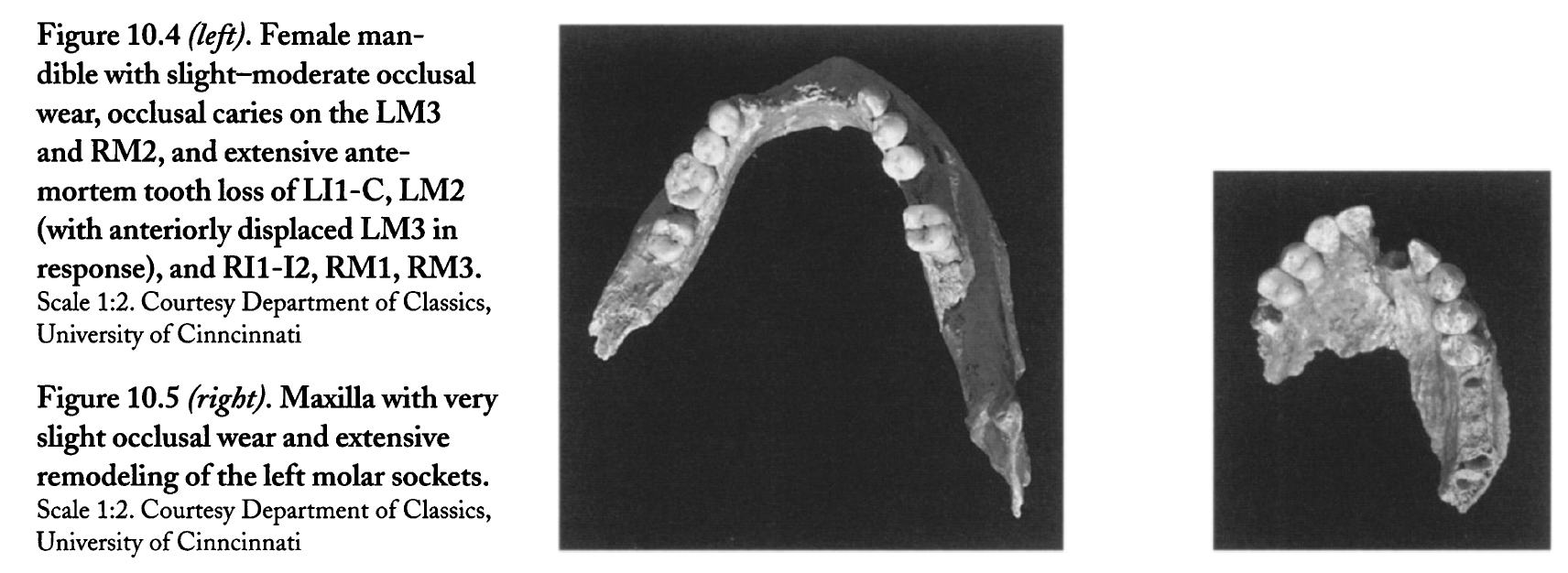
What can physical anthropology and stable isotope analysis tell us about maternity and childrearing?
When medical literature is sparse, and stories that center on pregnancy, birth, and childrearing are few, we can turn to bioarchaeological evidence to reveal otherwise inaccessible information concerning the health of pregnant women and neonates, as well as the dangers that surrounded birth, infancy, and early childhood in ancient societies. Physical remains provide mortality rates for mothers and children, and the analysis of skeletal trauma in fetuses, infants, and toddlers tells us about practices of midwifery, gendered and more mundane aspects of childrearing, and even the prevalence of child abuse in a community. So too, isotopic studies, the healing of injuries, and the presence of disease in bones and preserved tissues offer information on seasonal trends in mortality as well as an unparalleled glimpse into the health and nutrition of mothers and their offspring.
Case Study #1: “A Pregnant Ancient Egyptian Mummy from the 1st Century BC” by Wojciech Ejsmond et al.
When scientists subjected a mummy found within a coffin belonging to Hor-Djehuty – a male priest and royal governor – to radiology, as part of an initiative of the National Museum in Warsaw, Poland to scan their human and animal mummies, they did not expect to discover the body of a pregnant woman. By implementing CT equipment and then collecting and compiling X-ray cross-sections, Wojciech Ejsmond and his colleagues were able to obtain a wealth of information non-invasively. The woman’s wrappings already betrayed her elite status, but based on her tooth wear and also the incomplete obliteration of the squamosal suture of her cranium, they ascertained that she would have been between 20 to 30 years old when she died. The cause of death, however, was not immediately apparent. The circumference of the skull of the fetus indicated that it would have been between 26 and 30 weeks of development, which would have made it significantly pre-term, but potentially viable, had it been born. To date this is the only known example of a mummified pregnant woman. Moreover, because the mummy and her fetus are intact, they have the potential to reveal a great deal about prenatal health and pregnancy in antiquity. The find is also fascinating because in the process of mummification the fetus was left in its original position. This is in contrast to the woman’s heart, lungs, liver, and intestinal organs, which were removed, wrapped, and replaced in the body. The authors speculate that this treatment offers unique insight into the ontological status of the unborn child. The fact that it was not separated from the mother, they speculate, may mean that it had not yet achieved the status of personhood and thus would have been unable to journey to the netherworld.
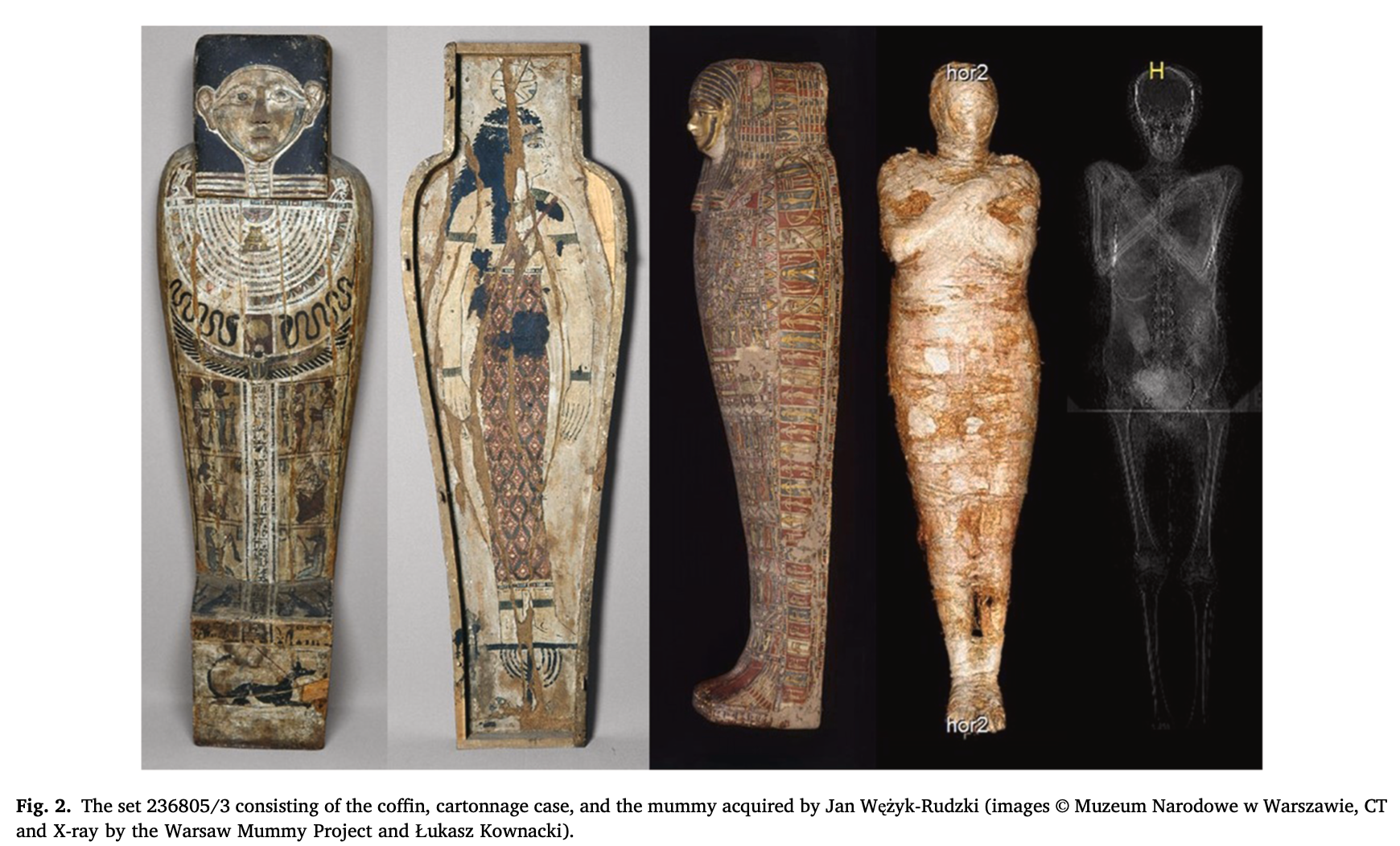
Case Study #2: “Study of Growth Arrest Lines upon Human Remains from Kharga Oasis” by Roger Lichtenberg
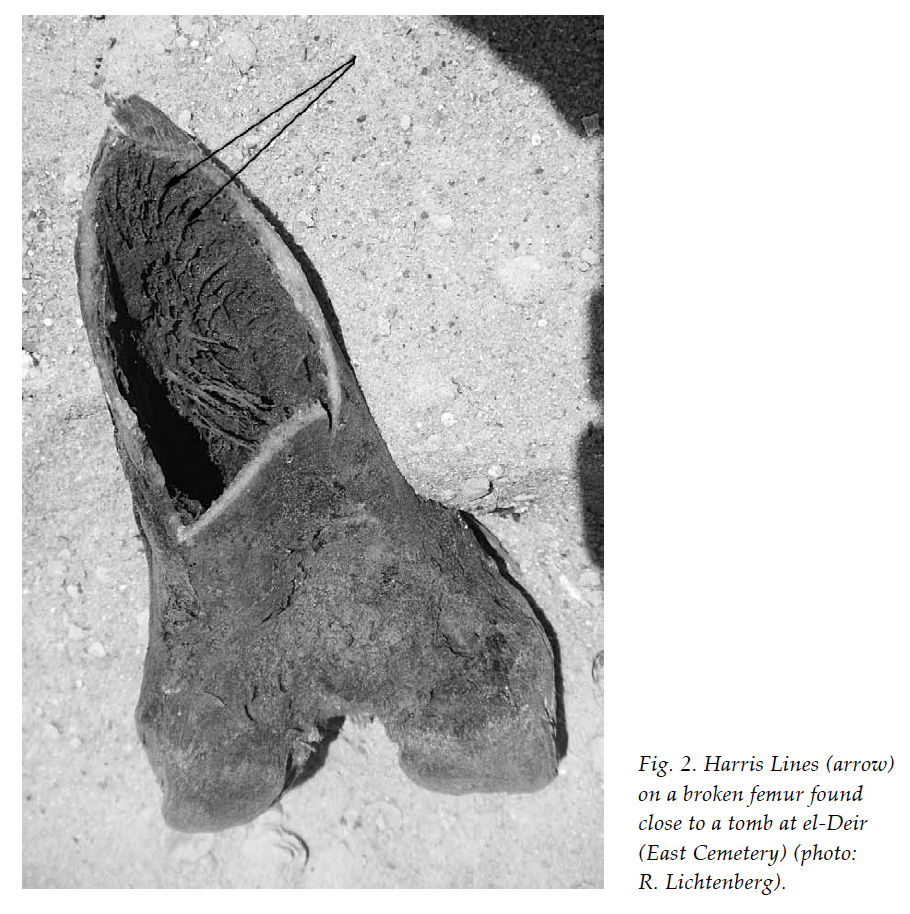
Roger Lichtenberg demonstrates how the visual examination of skeletal remains and more advanced X-ray technology can shed light on gendered and societal differentials in nutrition, health, and life expectancy. Specifically, Lichtenberg worked with with skeletons and mummified human remains from Lebekah and Dush, two Roman Period sites in Kharga Oasis, to determine what growth-arrest lines (GAL) – visible dense lines formed on mainly the diaphysis of long bones like tibiae, femurs, and humeri – revealed about periods of malnutrition or extended illness. At Lebekah, where he examined group burials from two tombs, he found that differences depended primarily on economic status. Thus, individuals buried in Tomb 20 were not only sicker (due to the presence of tuberculosis) than those buried in Tomb 51, but they also had utilized cheaper techniques of mummification. It was thus of little surprise that, 90% of individuals in tomb 20 were found afflicted with GAL, while only 40% of their counterparts in Tomb 51 were. At Dush, on the other hand, Lichtenberg discovered that the divide fell along gender lines. GAL, which he noted in 52 mummies and 44 skeletons, occurred in 68% of women but only 46% of men. Lichtenberg hypothesizes that women’s skeletons exhibited more signs of nutritional stress due to the nature of their workloads and differential access to nutritional resources. The high instances of pregnancy in young women whose bodies had not yet finished growing, however, likely accounted for the most profound difference. Marrying off girls shortly after the onset of their menses, as other studies have demonstrated, tends to lead to poor maternal health and a disproportionate number of early deaths.
Case Study #3: “Birth in Ancient Egypt: Timing, Trauma, and Triumph? Evidence from the Dakhleh Oasis” by Dupras et al.
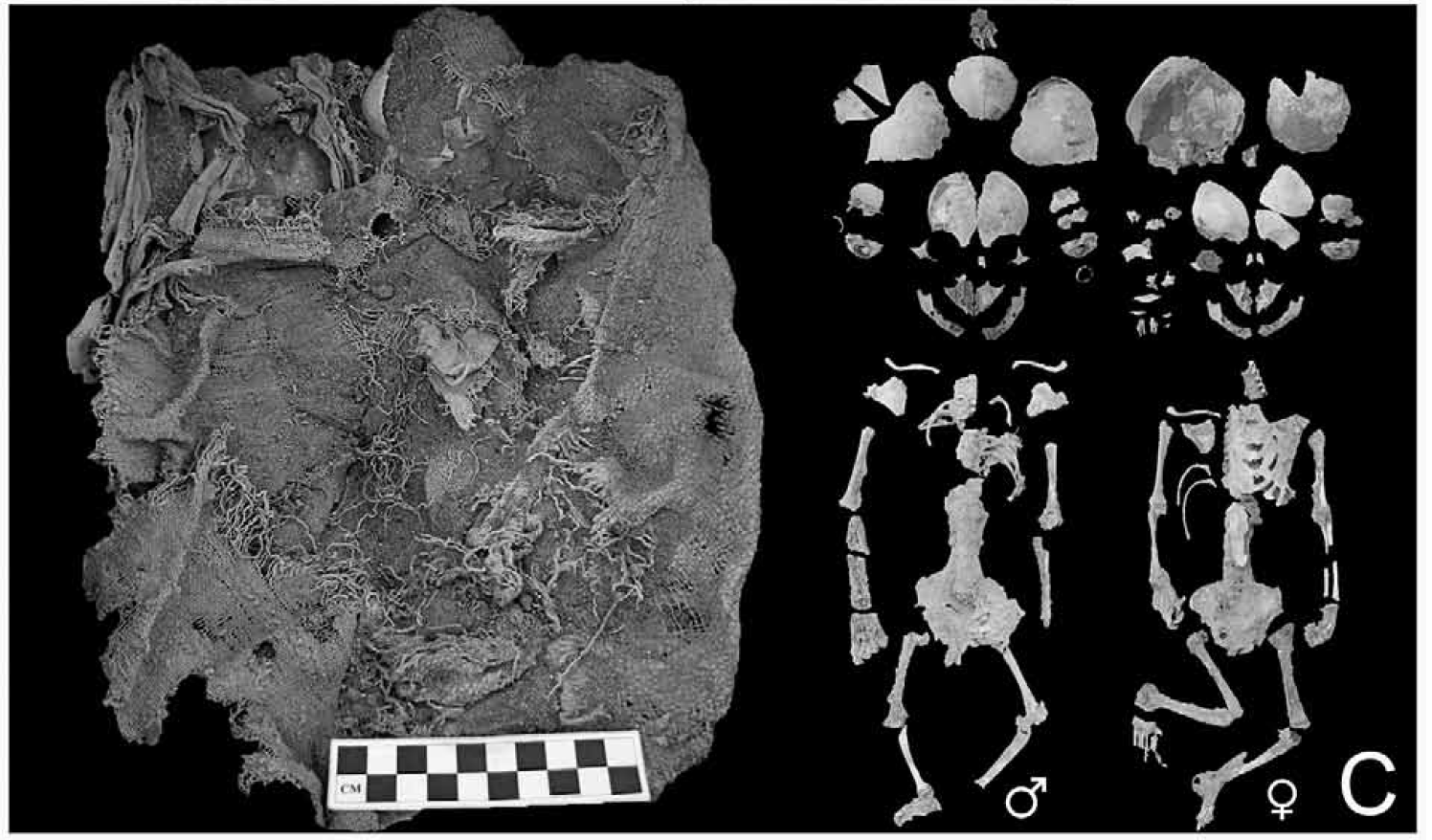
In their study, Tosha Dupras and her colleagues reveal important information about the health and mortality of women and young children in Roman Egypt through physical anthropology. Focusing on the mortuary landscape of Kellis 2, a Romano-Christian cemetery in Dakhleh Oasis, they examined the skeletal remains of 725 individuals, including numerous women, fetuses, and infants from c. 50-360 CE. 66% of their sample was comprised of children, and over half of the adult females were of childbearing age. By looking at skeletal trauma in the fetuses and infants – such as fractured clavicles and shoulder dystocia, as well as fractures to the cervical vertebrae – the authors concluded that instances of prolonged maternal labor and difficult birth were common. Indeed, their findings suggest that a medical practitioner would have had to have been involved in the birthing process, as such individuals often injured the fetus in their attempts to deliver it. Such evidence of skeletal trauma, as well as the age-determination of many of the fetuses, infants, and young women, demonstrates how dangerous childbirth was for women in antiquity. The authors also assemble multiple lines of evidence to demonstrate that these practitioners – who possessed significant practical medical knowledge – were almost certainly women. Such an obstetrice, one Roman author recommended, should be “Literate, with her wits about her, respectable, possessed of a good memory, loving work, respectable, sound of limb, robust and according to some people, endowed with long slim fingers and short nails at her fingertips.” (Soranus, Gynecology Book 1:5).
Case Study #4: “Reconstructing Infant Weaning Histories at Roman Period Kellis, Egypt Using Stable Isotope Analysis of Dentition” by Tosha L. Dupras & Matthew W. Tocheri.
Tosha Dupras and Matthew Tocheri examined the stable isotope signatures from the teeth of individuals buried at the Kellis 2 cemetery in order to construct a timeline of the weaning process for infants in Roman Egypt. Working with the remains of 102 individuals and 297 teeth, the authors distinguished between deciduous teeth (which would show the diet of fetuses as well as infants) and permanent teeth in adults and older children (which would document the dietary change for those who survived the weaning process). An important aspect of the study is that dentin material from teeth is ‘biologically static’ so that it remains unchanged throughout life, thereby providing an accurate snapshot of nutrition at the time of formation. Measurements of nitrogen isotopes showed a trophic level difference between deciduous and permanent teeth – indicating that breast-feeding occurred. Furthermore, the authors measured carbon isotopes and oxygen isotopes in order to illuminate the process of weaning (targeting differential δ18 oxygen levels and the biological signatures for the introduction of C3 and C4 plants into the diet). Their results demonstrated that infants were weaned slowly until they were around three years old. This finding appears to confirm practices attested in pharaonic texts and also in the writings of Galen and other Greco-Roman medical specialists. Such an extended period of breastfeeding placed a significant burden on mothers. Indeed, one resident of Egypt in the second part of the first century CE felt justified in upbraiding her son for not writing, by asking, “Was it for this that I carried you for ten months and nursed you for three years, so that you would be incapable of remembering me by letter?!”
Case Study #5: "Reconstructing Breastfeeding and Weaning Practices in the Bronze Age Near East Using Stable Nitrogen Isotopes." by Chris Santis, Holger Schutkowski, and Arkadiusz Sołtysiak
The authors set out to examine nitrogen isotopes (δ15N) to evaluate the timing of weaning and the development of children’s diets in five settlements of varying date. Their chosen sites were Tell Arbid, Tell Barri, Tell Bi’a, and Sidon—all located in modern day Lebanon and Syria. This study is particularly important because it can be used in conversation with other studies to understand the way that families of different cultures and time periods reared their children. Using cortical bone and teeth from nonadults (under 17 years old), the researchers found that weaning tended to begin at around 0.5 years of age and ended around 2.5 years. According to ethnographic evidence in the more modern Middle East, boys are often weaned significantly later than girls. For the mother, weaning early tends to mean short spacing between pregnancies. This indicates that the population at many of these sites was growing quickly and had increased fertility. The authors also point out that for the early inland sites this likely had everything to do with dietary changes, as they would have relied increasingly on farming, particularly cereals. This point brings us to the slight differences observed in Sidon, the only coastal site examined in this study. The weaning period seems to have been delayed in this city, which the authors suggest may be due to Sidon’s inhabitants enjoying differing cultural views about child rearing or because Sidon was a prosperous port city, and thus parents could afford to make unusual investments in their children. Lastly, it is important to note that these findings are consistent with textual evidence. Religious texts like the Babylonian Talmud often mention that complete weaning should occur at around two years of age. In addition, Babylonian contracts were formed with wet nurses in the early second millennium BCE, indicating that even though the weaning period seemed to be long, perhaps mothers, due to female helpers, might not have been under continuous strain.
What can DNA analysis tell us about gender?
DNA – the genetic building block of our biological selves – is generally taken to be a concrete and unbiased snapshot of identity. With alleles and haplotypes that can be attributed to origin, genetic disorders, and appearance, DNA seems to map our individuality. In current day representations of forensic science, DNA evidence is the modern ‘indisputable’ fingerprint. While ancient DNA (aDNA) cannot be employed in quite the same way without such a robust database for comparative assessments, it has been able to help paint a portrait of populations, when it comes to their lineages, migrations, health, and more. In certain cases, aDNA can be used to extrapolate family trees, as has been done for the ancient Egyptian king Tutankhamun and his royal dynasty, as well as to discern familial relationships in group burials, such as Abigail Bouwman and her colleagues have undertaken with respect to the ancient Mycenaeans buried in the sumptuous Grave Circle B at Mycenae (for both studies, see below). The presence of certain haplotypes in humans and even animals in a geographical area can also indicate population movements and even intermarriage between ethnic groups. Particularly exciting from the standpoint of feminist archaeology is the potential of mitochondrial DNA to shed light on maternal lines deep in the past.
Case Study #1: “An Ancient Mediterranean Melting Pot: Investigating the Uniparental Genetic Structure and Population History of Sicily and Southern Italy” by Stefania Sarno et al.
Migrations of cohesive populations consisting of men, women, and children in the ancient Mediterranean may have been far less common than settler-colonial movements spearheaded by male emigrants. Historical records often indicate that mother cities sent men off to found new colonies for trading purposes. So, too, military men were often granted rights to settle in new lands by governments eager to retain or reward their services. While some men may have married women from their homelands, far more formed unions with local women. Even in the absence of textual evidence, archaeological studies of ceramics and foodways often strongly suggest the occurrence of similar dynamics. Stefania Sarno and her colleagues have now brought genetic evidence to bear with respect to the character of migrations that helped shape the history of Sicily and Southern Italy, such as those initiated by Phoenicians and Greeks in the first millennium BCE, Romans during the peak of their empire, and Normans shortly after 1000 CE. For the study, Sarno et al. relied both on Y-chromosomes to trace paternal lineages and on mitochondrial DNA (mtDNA) to trace maternal lineages. While they found proof of high levels of within-population variability and a ‘lack of significant genetic sub-structures’ – supporting the common notion that Sicily and Southern Italy served as hubs of the ancient Mediterranean world – the picture grew more complicated when the age and origin of these genetic differences were taken into account. Although the Y-chromosomal analysis explains genetic lineages associated with the Greek colonization of the area, for instance, age estimates for the mtDNA haplogroups suggest that the maternal line was diversified much earlier – even possibly around the Last Glacial Maximum, with the most common super-haplogroup H appearing approximately between 11,500 and 16,000 YBP. Thus, there appears to be a greater homogeneity among maternal gene pools of the Mediterranean than paternal ones. Considering these sex-biased dynamics, Sarno and her colleagues suggest that male lineages more accurately depict recent migration and gene influx events, whereas maternal lineages likely reveal a stabilized genetic pool with more ancient roots.
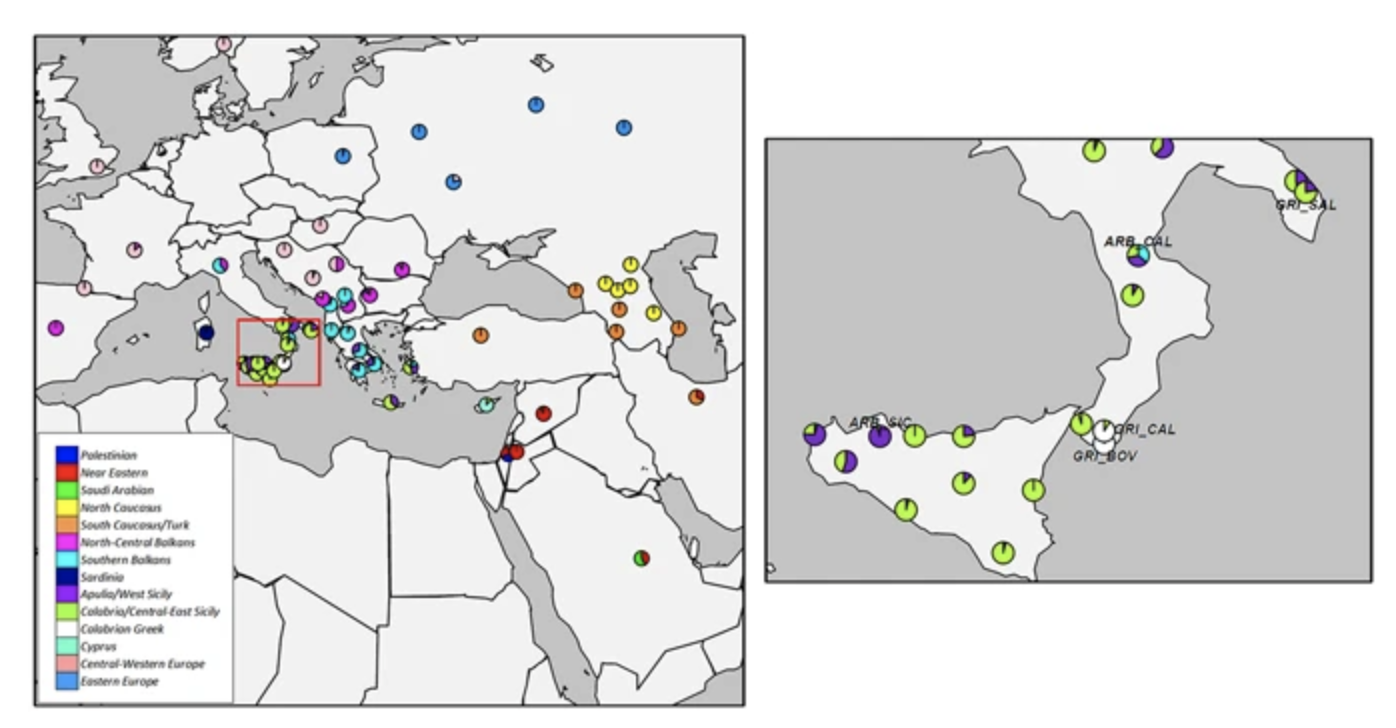
Case Study #2: “Ancestry and Pathology in King Tutankhamun’s Family” by Zahi Hawass et al.
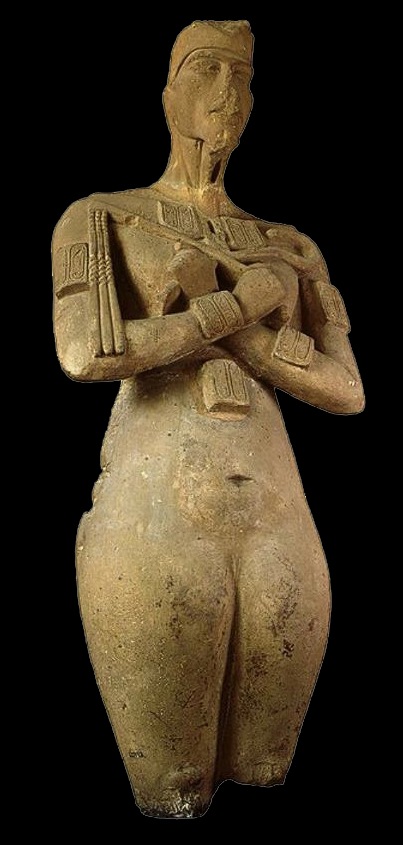
Due to his rich grave goods, well-preserved mummy, and his tomb in the Valley of the Kings, Tutankhamun (c. 1332-1323 BCE) is perhaps one of the most famous kings of antiquity. From the standpoint of gender archaeology, the information extracted from his DNA has been especially interesting for two reasons: it illuminates the role his mother may have played in his succession, and it helps to settle the question of whether he and his father were as physically nonbinary as they were portrayed in art. Tutankhamun’s father was Akhenaten, the famous heretic king, but the identity of his mother remained unknown, save that it was unlikely to have been Akhenaten’s famous spouse, Nefertiti. Research into Tutankhamun’s DNA revealed his mother to have been his father’s full sister. Thus, even though this woman was never emphasized in propaganda, her full royal blood must have been deemed significant for the legitimation of the royal line. Inbreeding in Egypt’s Eighteenth Dynasty was rampant, and many have speculated that the unusually feminine appearance of Akhenaten and Tutankhamun in royal art could have been due to inherited genetic conditions that manifested as gynecomastia (an overdevelopment of breast tissue in men). Zahi Hawass and his colleagues examined ancient DNA from bone tissue samples of 11 royal mummies of the New Kingdom. Looking specifically for such conditions as Marfan syndrome, Wilson-Turner syndrome, Fröhlich syndrome, Klinefelter syndrome, or Antley-Bixler syndrome, the authors employed PCR techniques to amplify their fragments and target a selection of short tandem repeats (STRs). However, analysis of the aDNA and radiological examination found no evidence for such disorders. Furthermore, a physical inspection of the mummies of Tutankhamun and Akhenaten did not suggest that either would have possessed a particularly feminine physique. Thus, the anomalous exaggeration of feminine aspects of their bodies in art must indicate that the appropriation of female power played a key role in the revolutionary ideology of these kings.
Case Study #3: “Kinship between Burials from Grave Circle B at Mycenae Revealed by Ancient DNA Typing” by Abigail S. Bouwman et al.
When the 35 burials in Grave Circle B were uncovered at the ancient Bronze Age citadel of Mycenae, their rich grave goods – including an electrum funerary mask, ornate drinking vessels, weapons, and jewels – immediately garnered attention. Questions proliferated regarding the status and identity of the individuals, who spanned five generations between 1650-1500 BCE. Modern skeletal and DNA studies cannot tell us the names of the individuals buried in magnificent tombs like this, but, ideally, they can reveal a great deal about familial relationships and the position of women at the highest echelons of society. Because only four skeletons out of thirty-five were positively identified as female at Grave Circle B, the criteria for inclusion for women must have been more stringent than for males. Abigail Bouwman and her colleagues examined DNA from 22 bodies. While most of the samples were poorly preserved or contaminated, the scientists were able to test the hypothesis – based on burial placement and facial reconstruction – that female skeleton G58 was related to the male skeleton G55, with whom she was buried. Mitochondrial DNA samples acquired from both sets of remains allowed the authors to assert that the two were in fact brother and sister. These findings provide a glimpse into the high value placed on blood kinship in the royal family. Whether the demographic gender imbalance resulted from the exclusion of women who married into this subsection of society is unknowable but intriguing.
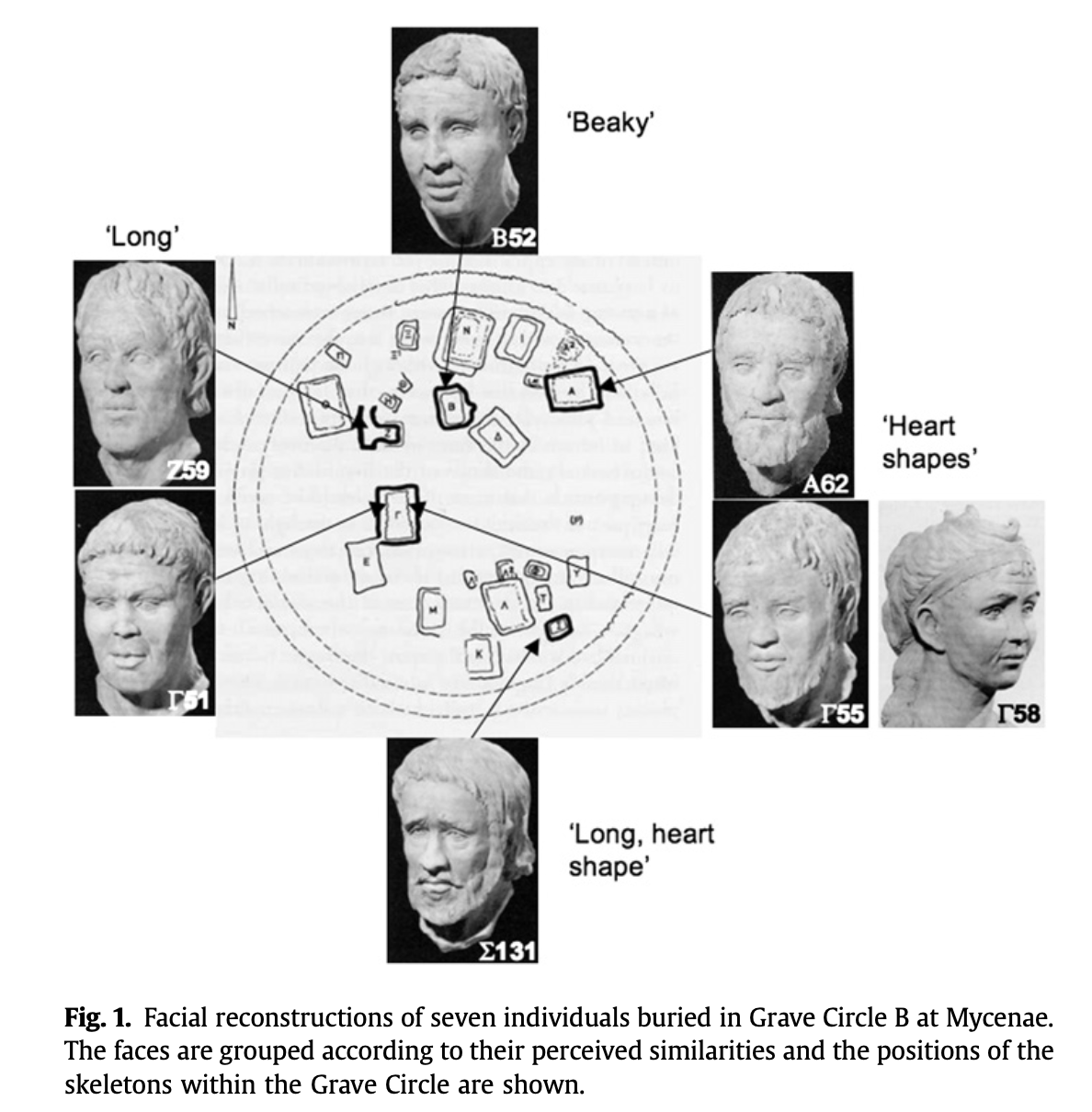
Case study #4: “Transformations in Death: The Archaeology of Funerary Practices and Personhood in the Bronze Age Levant.” By Melissa Sarah Cradic
In her 2020 dissertation, Melissa Cradic utilizes DNA evidence to argue that patrilineal societies in the Eastern Mediterranean systematically excluded women from being acknowledged as important ancestorial figures. She highlights the genetic evidence recovered from Ashkelon Tomb 5, an expansive rock-cut chamber used over six generations during the Middle Bronze Age II period (c. 1750-1650 BCE). This tomb contained clusters of burials that were spatially delineated according to three different patrilineages. The twelve females that yielded DNA, on the other hand, belonged to five separate matrilineages, none of which patterned spatially. Through this case study, Cradic demonstrates that the male line of inheritance was prioritized in death, as it almost certainly was in life. In discussing Tomb 5, she draws an analogy to patrilineal-centered burial practices in ethnographically attested Cantonese death rituals, noting that Cantonese women’s names were systematically excluded from lineage records. Old Babylonian ancestorial rituals, closer in time and space to Tomb 5, also privileged male names by a ratio of 3:1 over the names of women. Cradic’s discussion highlights the potential of contextualized genetic evidence to shed significant light on social structure.
Case Study #5: “Ancient mitochondrial genomes reveal the absence of maternal kinship in the burial of Catalhoyuk people and their genetic affinities” by Maciej Chylenski et al. (2019).
The 20th Century and modern American concept of the familial unit is often based primarily on an assumption of biological kinship, and even the ‘nuclear family’ structure where ‘Mom’, ‘Dad’, and children of two generations form the most close-knit ties. This framework, however, is not universal either in time or space and cannot be applied to families of the past without investigation. For example, based on the sequencing of mitochondrial genomes, researchers have established that, in contrast to nearby villages, biological kinship may not have been the most important vector of social organization for the people buried in Çatalhöyük in Neolithic southern Anatolia. Mitochondrial DNA samples from individuals buried beneath homes in this important early population center exhibit an array of varying haplogroups. Mitochondrial genomes specifically contain maternal DNA and hence track the lineages of mothers and their descendants. From burials in one house alone, four different mitochondrial haplogroups were found – signifying four separate maternal lineages within the same group. Hence, the maternal DNA demonstrates a pattern of women with different origins and lineages living together within a more local population of males. While one explanation for the variation of mitochondrial haplotypes might be a tradition of patrilocality – the residing of a couple with the male’s family or tribe – the variation still seems extreme. An alternative explanation might be that at Çatalhöyük internment practices did not center around biological kinship but rather around a different form of affiliation, such as cross-cutting religious sodalities. So too, burial locations within a neighborhood might have been organized according age, social status, or other logics. The analyses of mitochondrial maternal DNA from early societies, therefore, prompts us to pose important questions, such as the extent to which “chosen families” existed in the past alongside their biological equivalents.
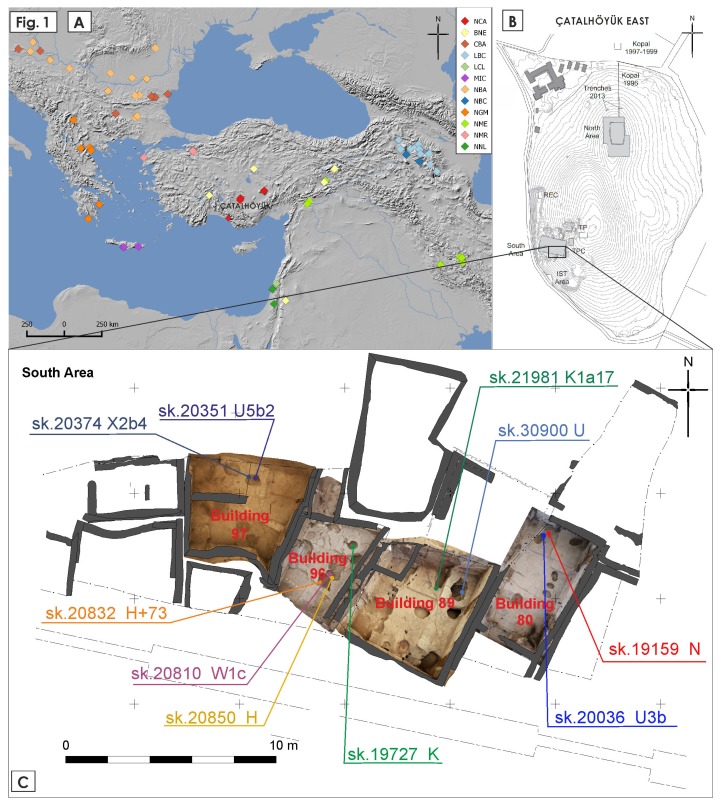
Works Cited
Andreadaki-Vlazaki, Maria. 2015. "Sacrifices in LM IIIB: Early Kydonia Palatial Centre." Pasiphae 9: 27-42.
Antonaccio, Carla M. 2000. "Architecture and Behavior: Building Gender into Greek Houses." The Classical World 93 (5): 517–533.
Arnold, Bettina. 1991. “The Deposed Princess of Vix: The Need for an Engendered European Prehistory.” In The Archeology of Gender, ed., Dale Walde and Noreen D Willows. University of Calgary Archaeological Association, 366–74.
Austin, Anne & Cedric Gobeil. 2016. “Embodying the Divine: A Tattooed Female Mummy from Deir el-Medina” Bulletin de l’institut français d’archéologie orientale 116: 23-46.
Beck et al. 2016. “The Politics of Provisioning: Food and Gender at Fort San Juan de Joara, 1566-1568.” American Antiquity 81, no 1: 3–26.
Blackmore, Chelsea. 2011. "How to Queer the Past Without Sex: Queer Theory, Feminisms and the Archaeology of Identity." Archaeologies 7: 75–96 https://doi.org/10.1007/s11759-011-9157-9.
Bouwman, Abigail, Keri A. Brown, et al. 2008. "Kinship between burials from Grave Circle B at Mycenae revealed by ancient DNA typing." Journal of Archaeological Science 35 (9):2580–2584.
Budin, Stephanie Lynn. 2002. “Creating a Goddess of Sex.” Engendering Aphrodite: Women and Society in Ancient Cyprus, ed. D. Bolger and N. Serwint. ASOR Archaeological Reports, 315-24.
Butler, Judy. 2006. Gender Trouble: Feminism and the Subversion of Identity. Routledge.
Chylenski, Maciej et al. 2019. “Ancient mitochondrial genomes reveal the absence of maternal kinship in the burial of Catalhoyuk people and their genetic affinities”, MDPI Genes, 10 (3): 207. doi: 10.3390/genes10030207.
Costin, Cathy Lynne. 2008. "Housewives, Chosen Women, Skilled Men: Cloth Production and Social Identity in the Late Prehispanic Andes." Archaeological Papers of the American Anthropological Association 8 (1), Special Issue: Craft and Social Identity. https://anthrosource-onlinelibrary-wiley-com.ezproxy.cul.columbia.edu/share/6ZGIDYZQGFEG QVN5QAKN?target=10.1525/ap3a.1998.8.1.123.
Cradic, Melissa Sarah. 2020. “Transformations in Death: The Archaeology of Funerary Practices and Personhood in the Bronze Age Levant.” Dissertation, University of California, Berkeley.
Cutler, J. 2019 Arachne's Web: Women, Weaving and Networks of Knowledge in the Bronze Age Southern Aegean." The Annual of the British School at Athens 114: 79-92.
Davis-Kimball, Jeannine. 1997. “Warrior Women of the Eurasian Steppes” Archaeology, 50 (1): 44–48.
Dupras, Tosha, & Matthew Tocheri. 2007. “Reconstructing Infant Weaning Histories at Roman Period Kellis, Egypt Using Stable Isotope Analysis of Dentition.” American Journal of Physical Anthropology 134: 63–74.
Dupras, Tosha, Sandra Wheeler, Lana Williams et al. 2015. “Birth in Ancient Egypt: Timing, Trauma, and Triumph? Evidence from the Dakhleh Oasis” in Egyptian Bioarchaeology: Humans, Animals, and the Environment, eds. S. Ikram, et al. Sidestone Press, 55–67.
Ebeling, Jennie; Misael Robel. 2015. "The Tabun and Its Misidentification in the Archaeological Record." Levant 47 (3): 328-349.
Ebeling, Jennie. 2022. "Making Space: Women and Ovens in the Iron Age Southern Levant." In Pursuit of Visibility: Essays in Archaeology, Ethnography, and Text in Honor of Beth Alpert Nakhai, ed. J. Ebeling and L. Mazow. Archeopress Archaeology, 92–102.
Ejsmond, Wojciech et al. 2021. “A Pregnant Ancient Egyptian Mummy from the 1st Century BC.” Journal of Archaeological Science, 2021.
Engelstad, Ericka. 2007. “Much More than Gender.” Journal of Archaeological Method and Theory 14 (3): 217–234.
Fischer, Marina. 2013. "Ancient Greek Prostitutes and the Textile Industry in Attic Vase-Painting, ca. 550-450 B.C.E." The Classical World 106 (2): 219–259.
Fowles, Severin. 2006. "Our Father (Our Mother): Gender, Praxis, and Marginalization in Pueblo religion." In Engaged Anthropology, eds. Michelle Hegmon and Sunday Eiselt. Memoirs of the Museum of Anthropology, University of Michigan, Ann Arbor, 27–51.
Franklin, M. 2020. “Enslaved Household Variability and Plantation Life and Labor in Colonial Virginia.” International Journal of Historical Archaeology 24 (1): 115–55.
Geller, Pamela L. 2017. The Bioarcheology of Socio-Sexual Lives: Queering Common Sense about Sex, Gender, and Sexuality. Switzerland: Springer International.
Geller P.L. 2017. The Bioarchaeology of Socio-Sexual Lives. Bioarchaeology and Social Theory. Springer, Cham. https://doi.org/10.1007/978-3-319-40995-5_5
Gilchrist, Roberta. 1999. Gender and Archaeology: Contesting the Past. New York: Routledge.
Green, John D.M. 2006. “Ritual and Social Structure in the Late Bronze and Early Iron Age Southern Levant: the Cemetery at Tell es-Sa'idiyeh, Jordan.” PhD Dissertation, University of London.
Green, John. 2007. “Anklets and the Social Construction of Gender and Age in the Late Bronze and Early Iron Age Southern Levant.” In Archaeology and Women: Ancient and Modern Issues, ed. S. Hamilton, R. D. Whitehouse, and K. I. Wright. Routledge, 283-311.
Haas, R., J. Watson, T. Buonasera, et al. 2020. "Female Hunters of the Early Americas." Science Advances 6 (45). https://doi.org/10.1126/sciadv.abd0310.
Hagerman, Kiri. 2018. "Transformations in Representations of Gender During the Emergence of the Teotihuacan State: A Regional Case Study of Ceramic Figurines from the Basin of Mexico." Cambridge Archeological Journal 28 (4): 689-711. doi:10.1017/S0959774318000288.
Hamilakis, Yannis. 1999. “Food Technologies/Technologies of the Body: The Social Context of Wine and Oil Production and Consumption in Bronze Age Crete.” World Archaeology 31 (1), 1999: 38–54.
Hawass, Zahi et al. 2010. “Ancestry and Pathology in King Tutankhamun’s Family.” Journal of the American Medical Association 303 (7): 638–647.
Hendon, Julia. 2006. “Textile production as craft in Mesoamerica: time, labor, and knowledge." Journal of Social Archaeology, 6(3): 354-378. https://doi.org/10.1177/1469605306067841.
Jordan, Alexis M. 2016. “Her Mirror, His Sword: Unbinding Binary Gender and Sex Assumptions in Iron Age British Mortuary Traditions.” Journal of Archaeological Method and Theory 23 (3): 870–899.
Kanter, John, D. McKinney, M. Pierson, and S. Wester. 2019. “Reconstructing Sexual Divisions of Labor from Fingerprints on Ancestral Puebloan Pottery.” PNAS 116 (25): 12220–12225.
Kramer-Hajos, Margaretha. 2015. “Mourning on the Larnakes at Tanagra: Gender and Agency in Late Bronze Age Greece.” Hesperia: The Journal of the American School of Classical Studies at Athens 84 (4): 627–67.
Lang, Elizabeth. 2016. “Maids at the Grindstone: A Comparative Study of New Kingdom Egypt Grain Grinders.” Journal of Lithic Studies 3: 279–289.
Leggett, Sam, Susanne Hakenbeck, and Tamsin O'Connell. 2022 (preprint). Large-Scale Isotopic Data Reveal Gendered Migration into Early Medieval England c. AD 400-1100. DOI: 10.31219/osf.io/jzfv6, License CC BY 4.0.
Leith, Kristin E. 2013. “Expressions of Gender in Mortuary Behaviour from Middle Helladic and Mycenaean Burial Samples in the Aegean.” PhD thesis, University College London.
Lewartowski, Kazimierz. 2000. Late Helladic Simple Graves: A study of Mycenaean burial customs. Oxford: Archaeopress.
Lichtenberg, Roger. 2015. “Study of Growth Arrest Lines upon Human Remains from Kharga Oasis.” In Egyptian Bioarchaeology: Humans, Animals, and the Environment, ed. Selima Ikram, et al. Sidestone Press, 87–94.
Lis, Bartłomiej. 2017. “Foodways in early Mycenaean Greece: Innovative cooking sets and social hierarchy at Mitrou and other settlements on the Greek mainland” American Journal of Archaeology 121 (2): 183–217.
Logan, Amanda, and M. Dores Cruz. 2014. "Gendered Taskscapes: Food, Farming, and Craft Production in Banda, Ghana in the Eighteenth to Twenty-first Centuries." The African Archaeological Review 31 (2): 203–231.
Lovén, Lena Larsson. 2013. "Female Work and Identity in Roman Textile Production and Trade: A Methodological Discussion." In Making Textiles in Pre-Roman and Roman Times: People, Places, Identities, ed. M. Gleba and J. Pasztokai-Szeoke, Oxford: Oxbow Books, 109–125.
Matić, Uroš. 2016. “(De)queering Hatshepsut: Binary Bind in Archaeology of Egypt and Kingship Beyond the Corporeal” in Journal of Archaeological Method Theory 23: 810–831.
Molleson, Theya. 1994. “The Eloquent Bones of Abu Hureyra.” Scientific American 271 (2): 70–75.
Meyers, Gretchen E. 2013. "Women and the Production of Ceremonial Textiles: A Reevaluation of Ceramic Textile Tools in Etrusco-Italic Sanctuaries." American Journal of Archaeology 117 (2): 247–274.
Morris, Christine. 2009. “Configuring the Individual: Bodies of Figurines in Minoan Crete.” Hesperia Supplements 42: 179–87
Morris, Christine, & Peatfield, Alan. 2014. "Health and Healing on Cretan Bronze Age Peak Sanctuaries." In Medicine and Healing in the Ancient Mediterranean, ed. D. Michaelides. Oxbow Books, 54-63
Medicine and Healing in the Ancient Mediterranean, 54–63.
Morris, Ellen. 2011. Paddle Dolls and Performance in Ancient Egypt. Journal of the American Research Center in Egypt 47: 71–103.
Morris, Ellen. 2020. “Machiavellian Masculinities: Historicizing and Contextualizing the ‘Civilizing Process’ in Ancient Egypt.” Journal of Egyptian History 13 (1-2). Special Issue: “Egyptology and Global History,” 127–168.
Murray, Sarah C., et al. 2020. “The Dipylon Mistress: Social and Economic Complexity, the Gendering of Craft Production, and Early Greek Ceramic Material Culture.” American Journal of Archaeology 124, (2): 215–244.
Nakhai, Beth A. 2015. “Plaque and Recumbent Figurines of the Late Bronze II.” In Celebrate for the Fruit of Her Hands: Studies in Honor of Carol L. Meyers, eds. S. Ackerman, C. E. Carter, and B. A. Nakhai. Winona Lake, IN: Eisenbrauns, 333–362.
Nevett, Lisa. 1995. “Gender Relations in the Classical Greek Household: The Archaeological Evidence.” The Annual of the British School at Athens 90, Centenary Volume, 363–381.
Olsen, Barbara A. 1998. “Women, Children and the Family in the Late Aegean Bronze Age: Differences in Minoan and Mycenaean Constructions of Gender.” World Archaeology 29 (3): 380–92.
Preston‐Werner, Theresa. 2008. “Breaking Down Binaries: Gender, Art, and Tools in Ancient Costa Rica.” Archeological Papers of the American Anthropological Association. 18. 49–59.
Riggs, Christina. 2005. The Beautiful Burial in Roman Egypt: Art, Identity, and Funerary Religion. Oxford: Oxford University Press.
Robin, Cynthia. 2006. "Gender, Farming, and Long-Term Change Maya Historical and Archaeological Perspectives" Current Anthropology 47 (3). https://doi.org/10.1086/503060.
Robins, Gay. 1999. “Hair and the Construction of Identity in Ancient Egypt, c. 1480-1350 B.C.” Journal of the American Research Center in Egypt 36: 55–69.
Ross, Jon, Kent D. Fowler, and Itzhaq Shai. 2023. “New fingerprint evidence for female potters in Late Bronze Age Canaan: The demographics of potters and division of labour at Tel Burna.” Journal of Anthropological Archaeology 71: 1-17
Sarno, Stefania et al. 2014. “An Ancient Mediterranean Melting Pot: Investigating the Uniparental Genetic Structure and Population History of Sicily and Southern Italy”. PLoS One 9 (4).
Schepartz, Lynne, Miller-Antonio, Sari, and Joanne M.A. Murphy. 2009. “Differential Health among the Mycenaeans of Messenia: Status, Sex, and Dental Health at Pylos,” Hesperia Supplements 43: 155–174.
Schepartz, Lynne A., et al. 2011. “No seat at the table? Mycenaean women’s diet and health in Pylos, Greece” in Anthropology a la Carte: The Evolution and Diversity of Human Diet, ed. L. Schepartz. San Diego: Cognella.
Selinksky, Page. 2017. “Lovers, Friends, or Strangers?” in Expedition 59(2):46–48.
Smith, Stuart Tyson. 2003. Wretched Kush: Ethnic Identities and Boundaries in Egypt's Nubian Empire. New York: Routledge.
Sørensen, Marie Louise Stig. 2000. Gender Archaeology. Malden, MA: Polity Press.
Stantis, C., Schutkowski, H., & Sołtysiak, A. 2019. "Reconstructing breastfeeding and weaning practices in the bronze age near east using stable nitrogen isotopes." American Journal of Physical Anthropology, 172 (1), 58–69
Stratton, Susan. 2016 “‘Seek and You Shall Find." How the Analysis of Gendered Patterns in Archaeology Can Create False Binaries: a Case Study from Durankulak.” Journal of Archaeological Method and Theory 23 (3): 854–869.
Sweeney, Deborah. 2006. “Women Growing Older in Deir el-Medina” in Living and Writing in Deir el-Medina: Socio-historical Embodiment of Deir el-Medine Texts, eds. Dorn, A. & T. Hofmann, Aegyptia Helvetica 19, Basel, 135–154.
Tassie, Geoffery. 2003. “Identifying the Practice of Tattooing in Ancient Egypt and Nubia.” Papers from the Institute of Archaeology 14: 85–101.
Voss, Barbara L. 2008. “Gender, Race, and Labor in the Archaeology of the Spanish Colonial Americas.” Current Anthropology 49 (5): 861–93. https://doi.org/10.1086/591275.
Waguespack, Nicole M. 2005. "The Organization of Male and Female Labor in Foraging Societies: Implications for Early Paleoindian Archaeology." American Anthropologist, 107 (4), 666–676.
Walker, Susan. 1983. "Women and Housing in Classical Greece: The Archaeological Evidence." In A. Cameron and A. Kuhrt, eds., Images of Women in Classical Antiquity. Detroit, 81–91.
Walley, Meghan. 2018. "Exploring Potential Archaeological Expressions of Nonbinary Gender in Pre-Contact Inuit Contexts." Études/Inuit/Studies 42 (1): 269–289.
Wayessa, Bula Sirika, Diane Lyons, and Brian Kooyman. 2015. "Ethnoarchaeological Study of Brewing Technology in Wallaga Region of Western Oromia, Ethiopia." Journal of African Archaeology 13 (1): 99–114.
Wegner, Josef. 2004. "Social and Historical Implications of Sealings of the King's Daughter Reniseneb and Other Women at the Town of Wah-Sut." In M. Bietak and E. Czerny (Eds), Scarabs of the Second Millennium BC from Egypt, Nubia, Crete and the Levant: Chronological and Historical Implications. Vienna: Verlag der Österreichischen Akademie der Wissenschaften, 221–240.
Westgate, Ruth. 2015. “Space and Social Complexity in Greece from the Early Iron Age to the Classical Period.” Hesperia: The Journal of the American School of Classical Studies at Athens 84 (1): 47–95.
Wood, Susan. 2019. Women's Work and Women's Myths: Mothers and Children on Ivory Looms." American Journal of Archaeology 123 (3): 411–438.
Wright, Rita P. 1992. "Women’s Labor and Pottery Production in Prehistory." In Dyson, Stephen & Gero, Joan & Conkey, Margaret (Eds.), Engendering Archaeology: Women and Prehistory. Maldon, MA: Wiley Publications, 194–223.